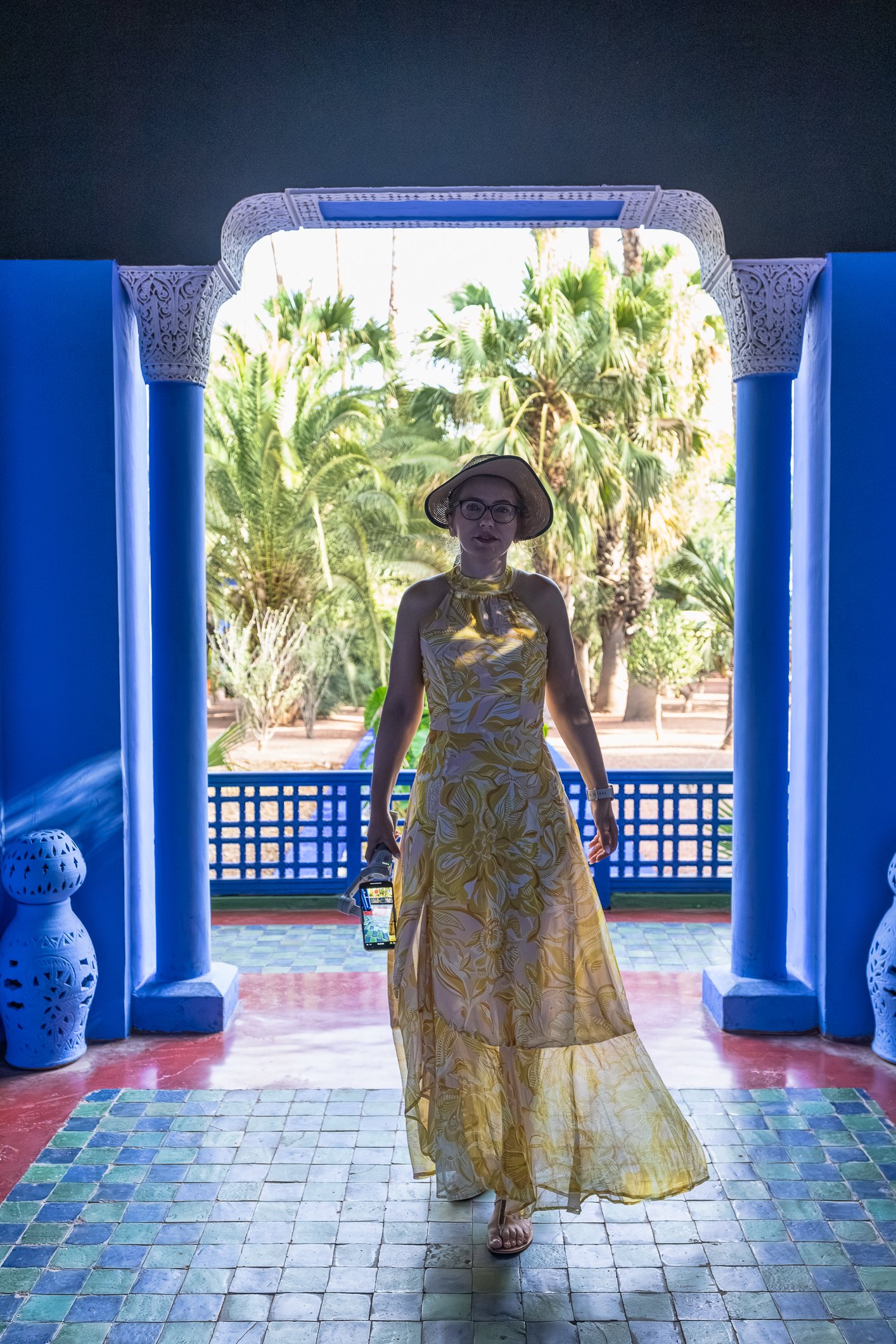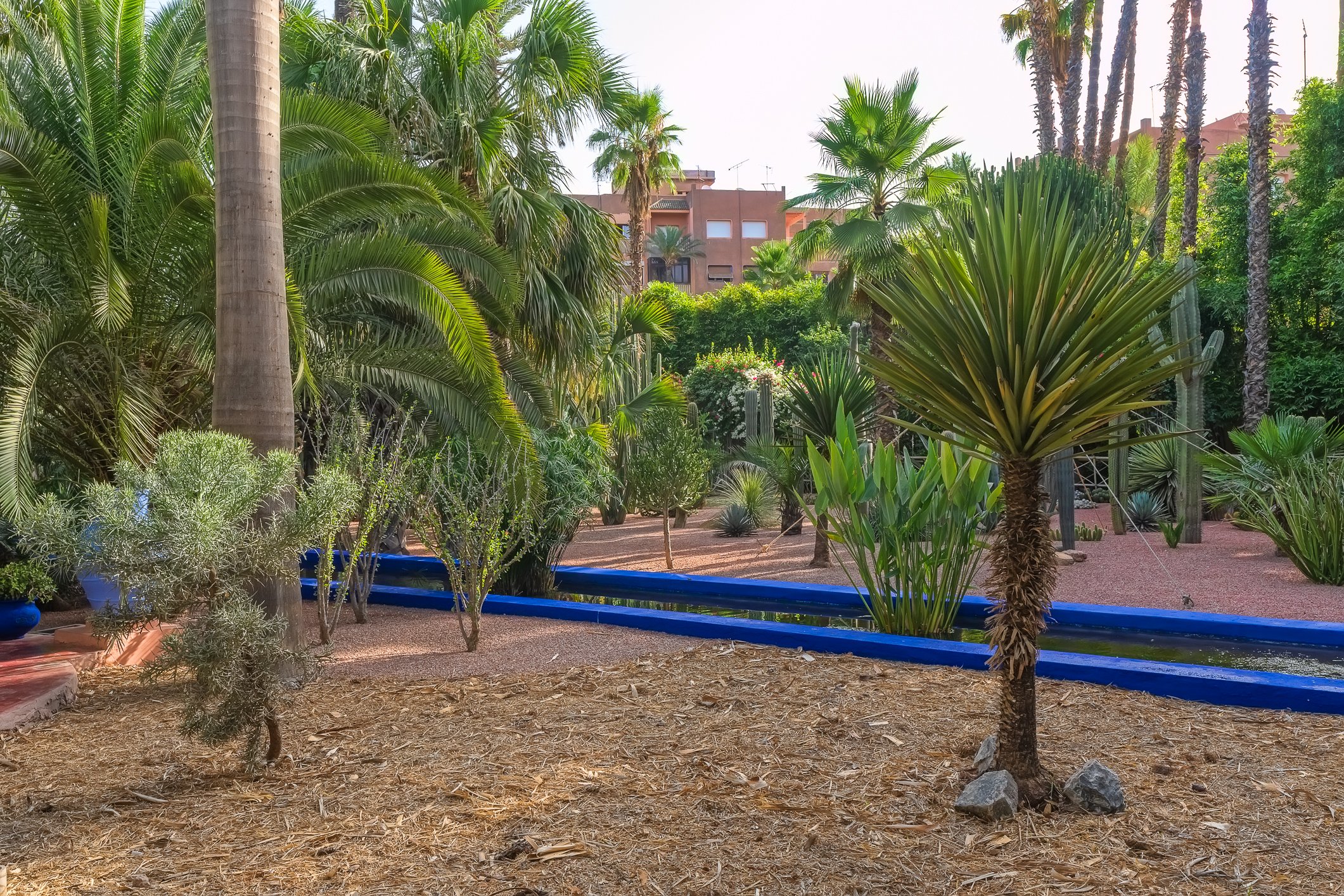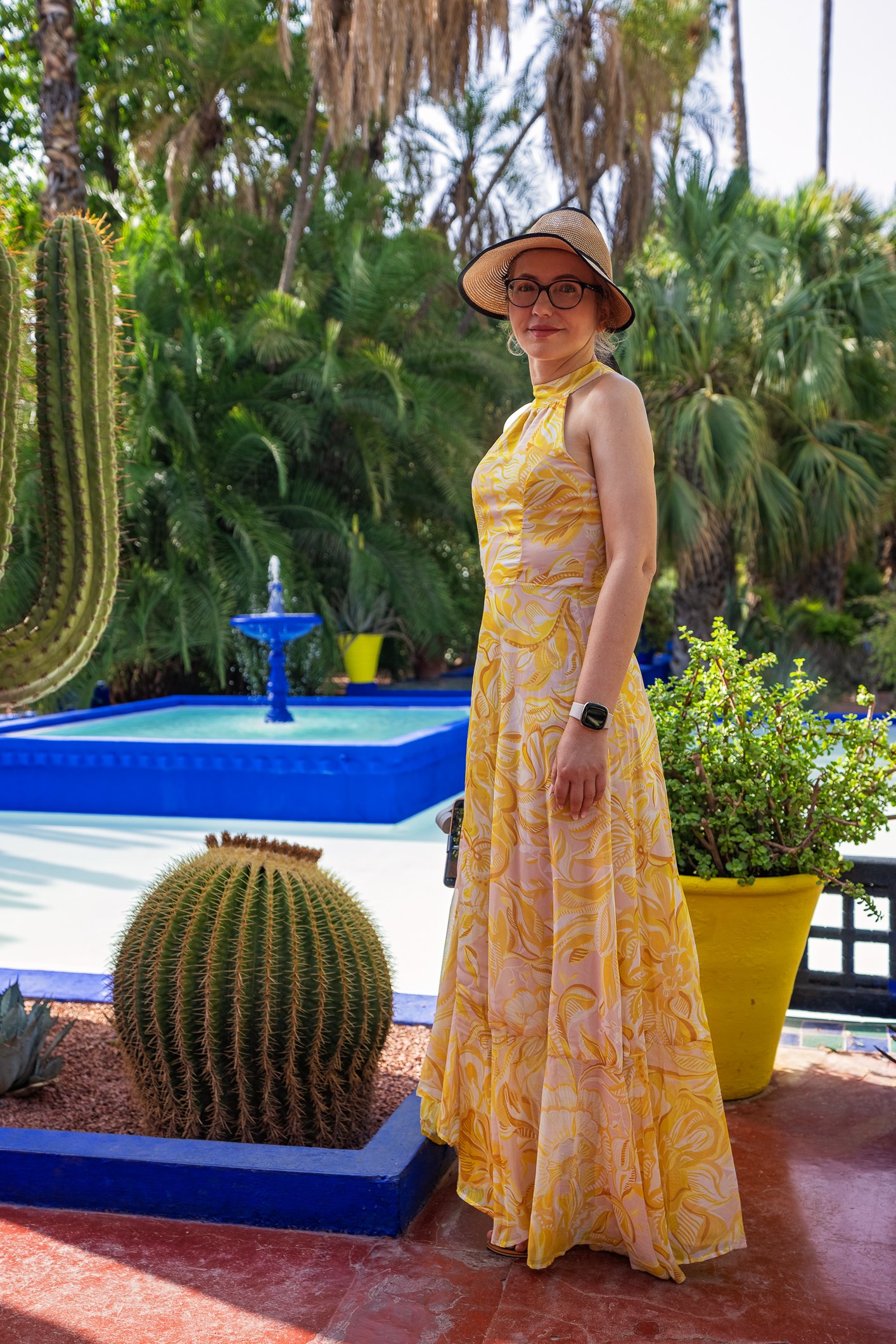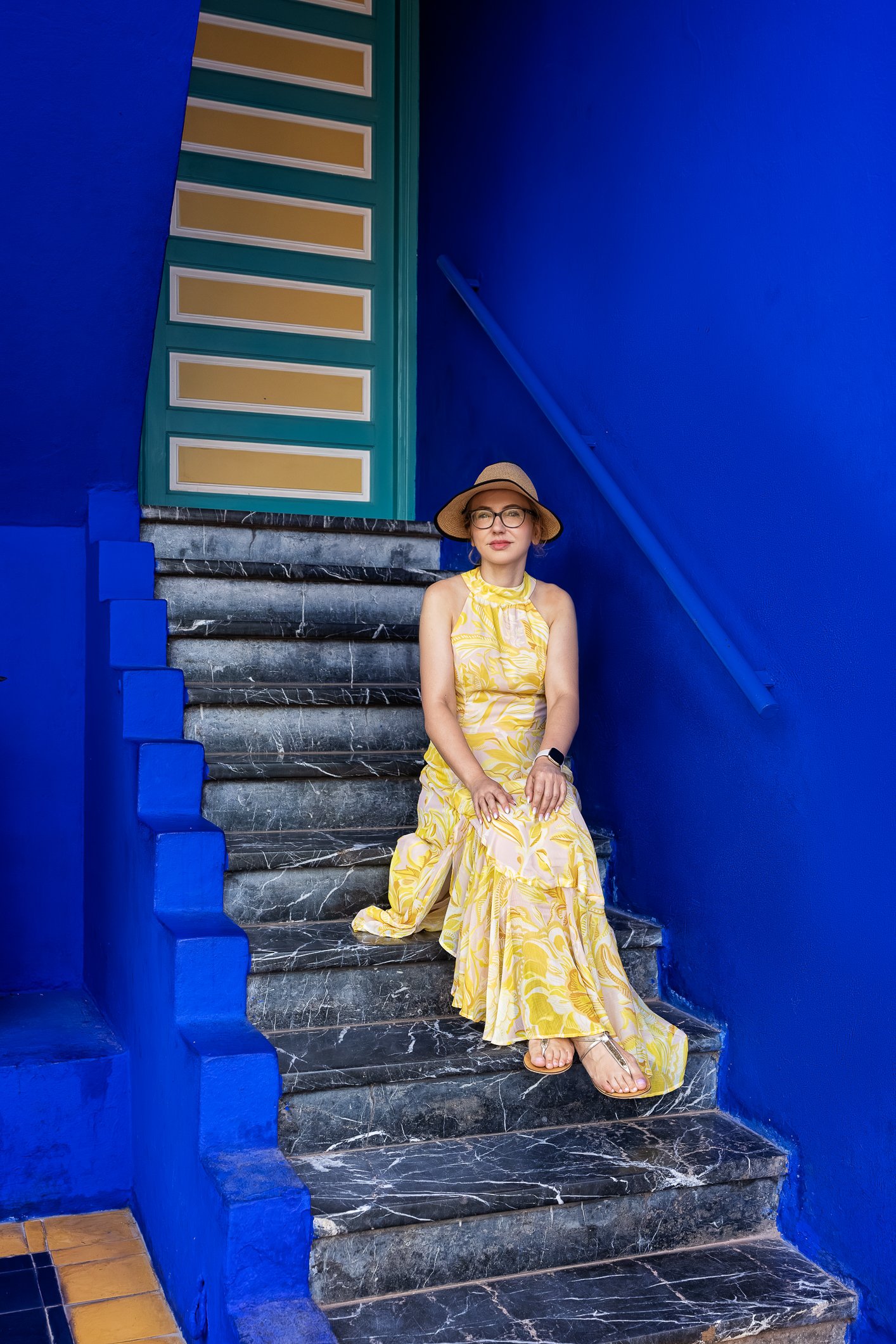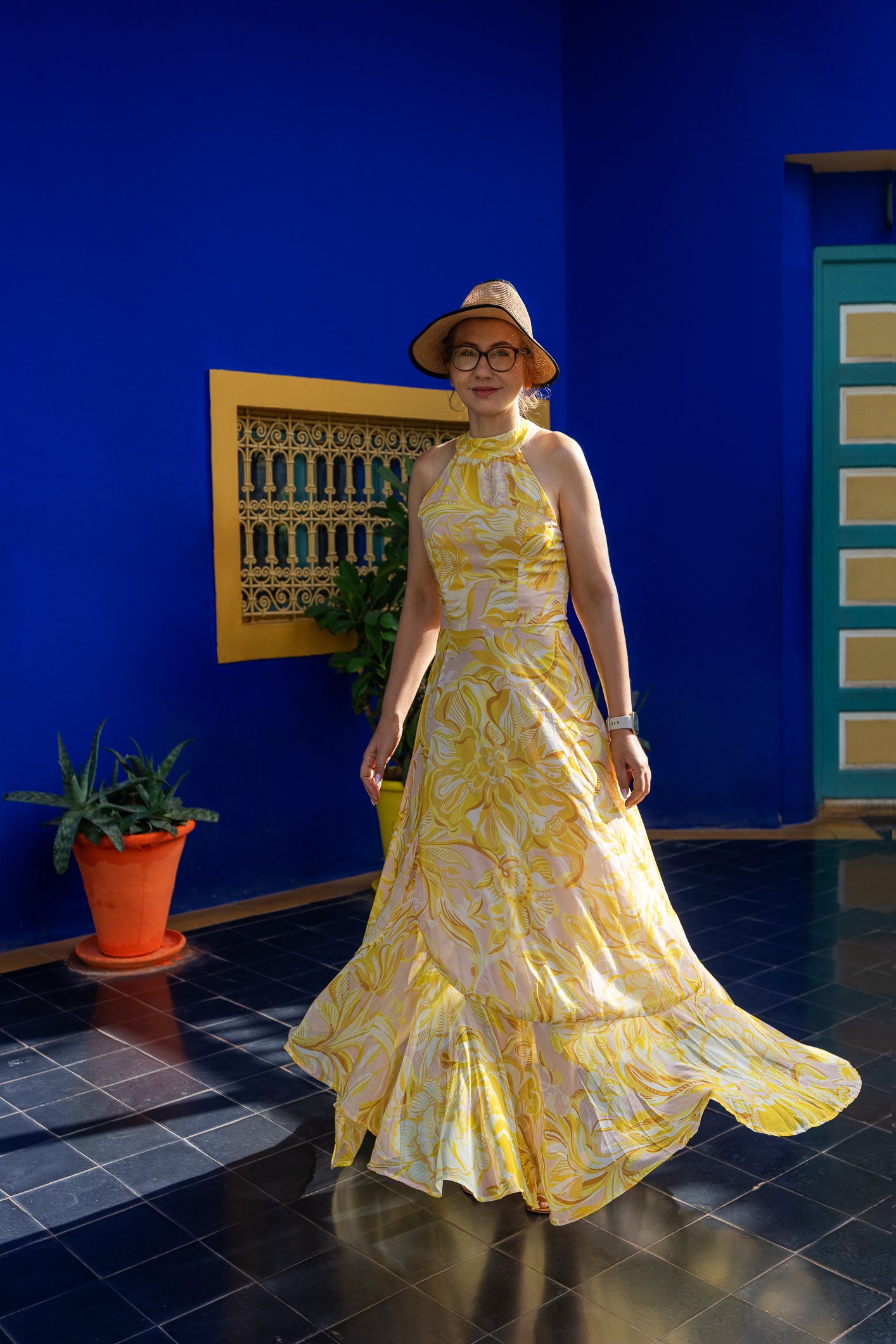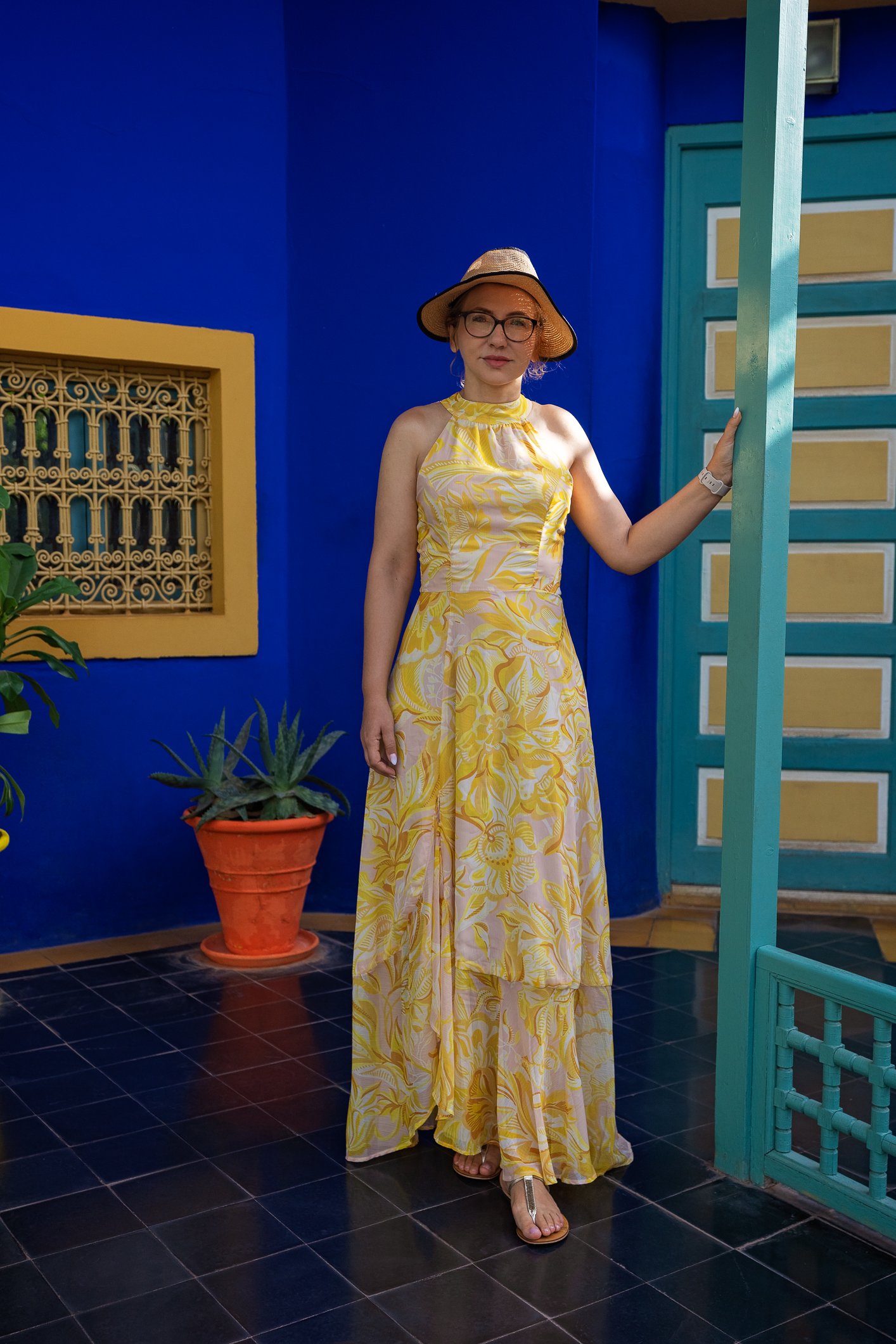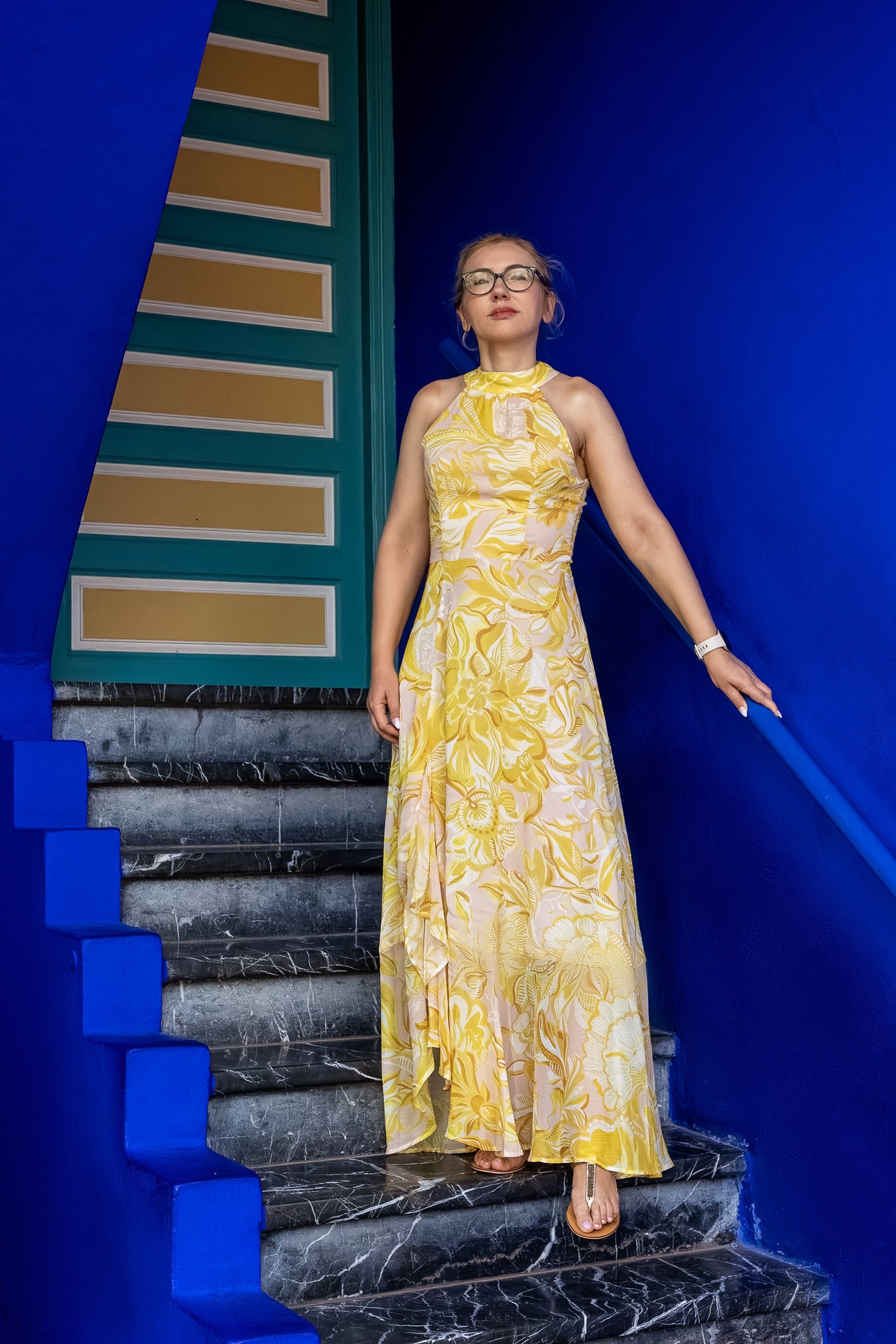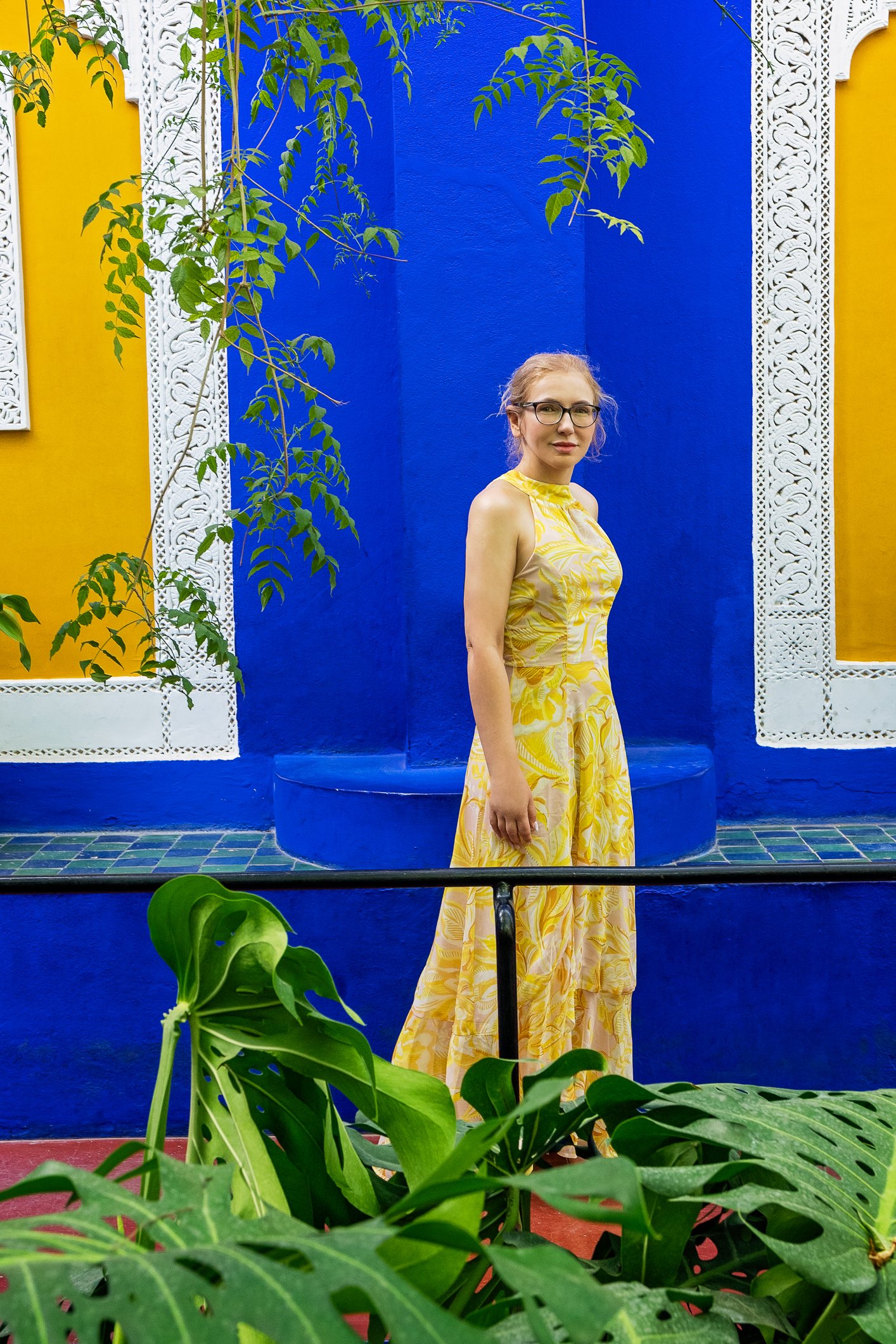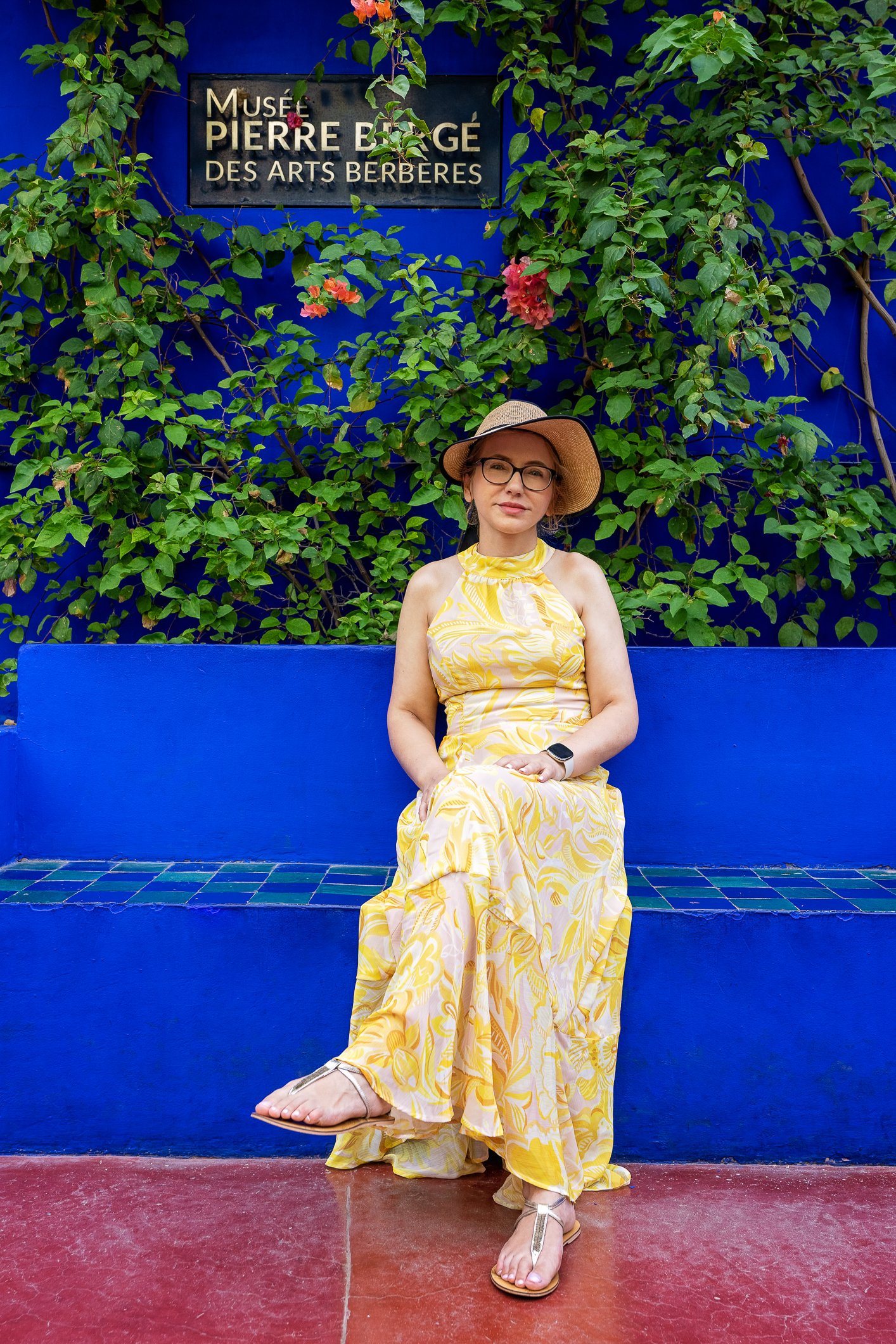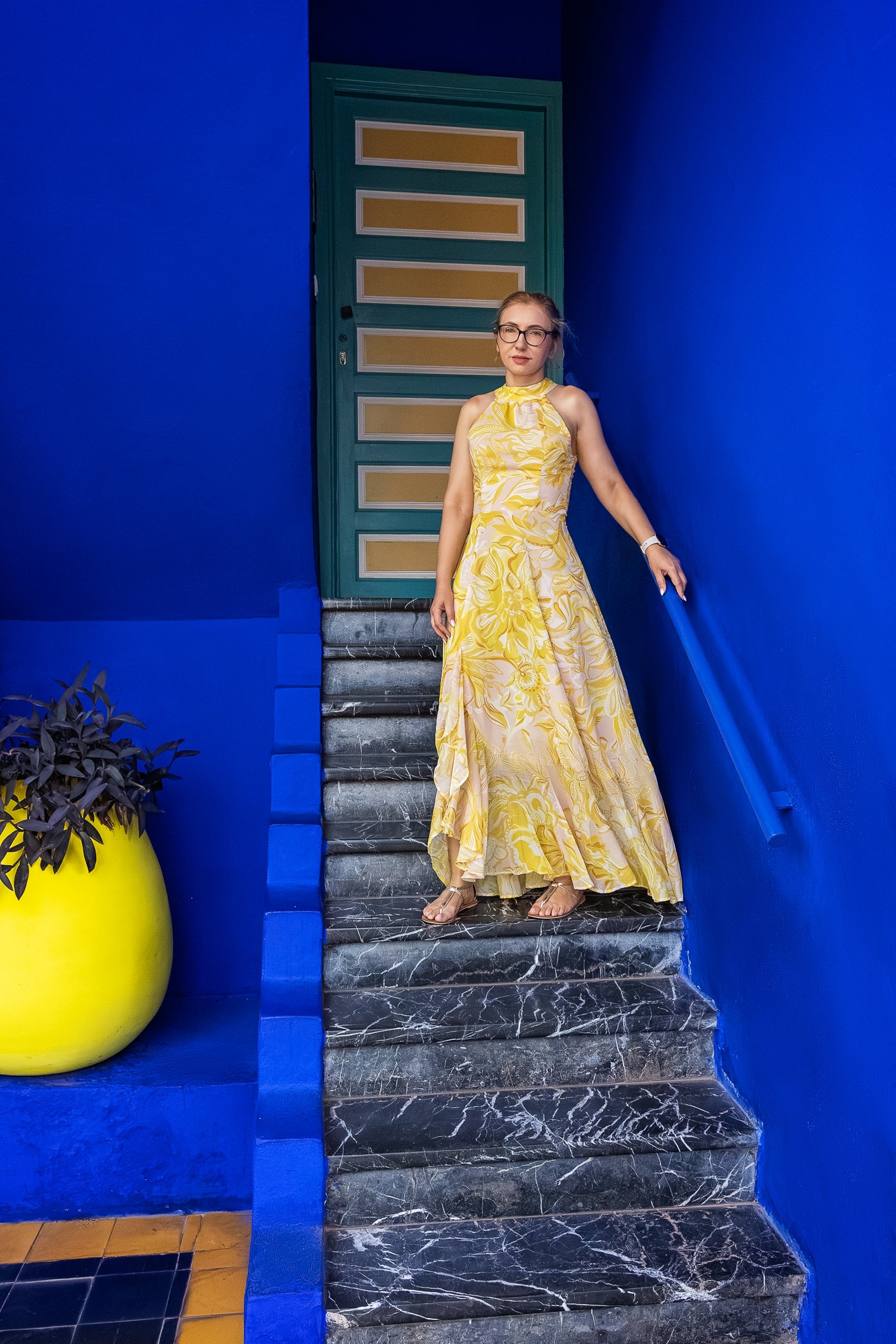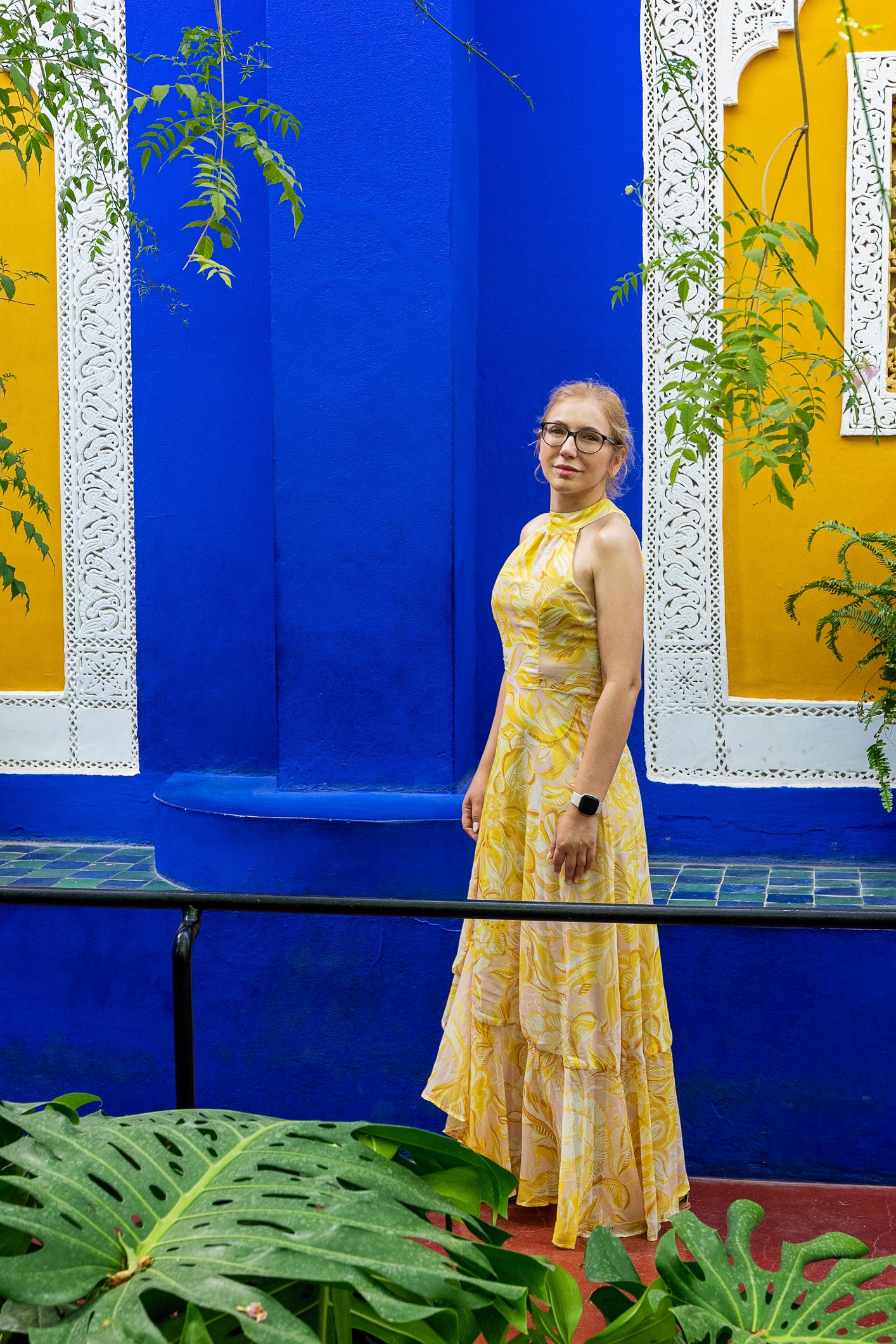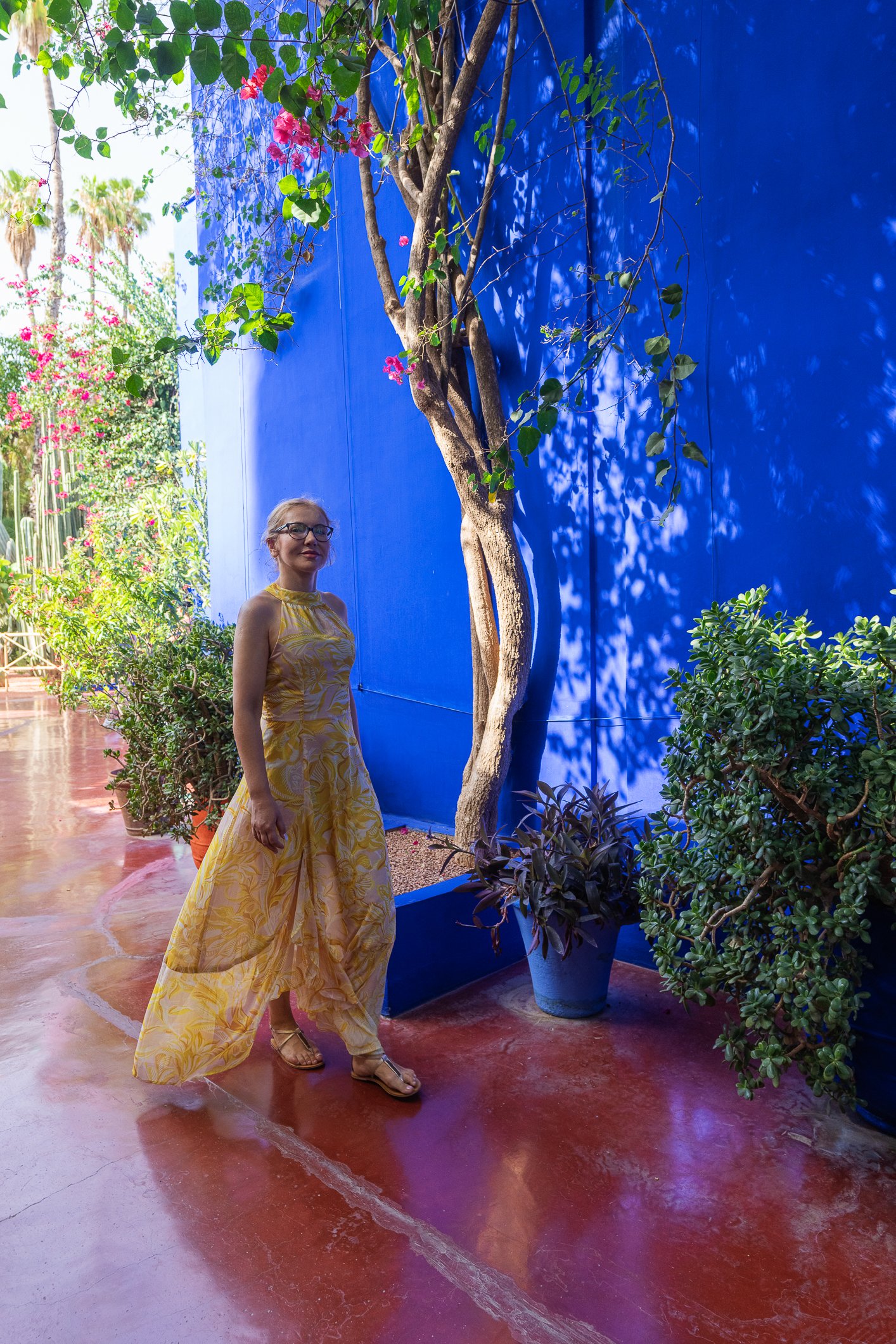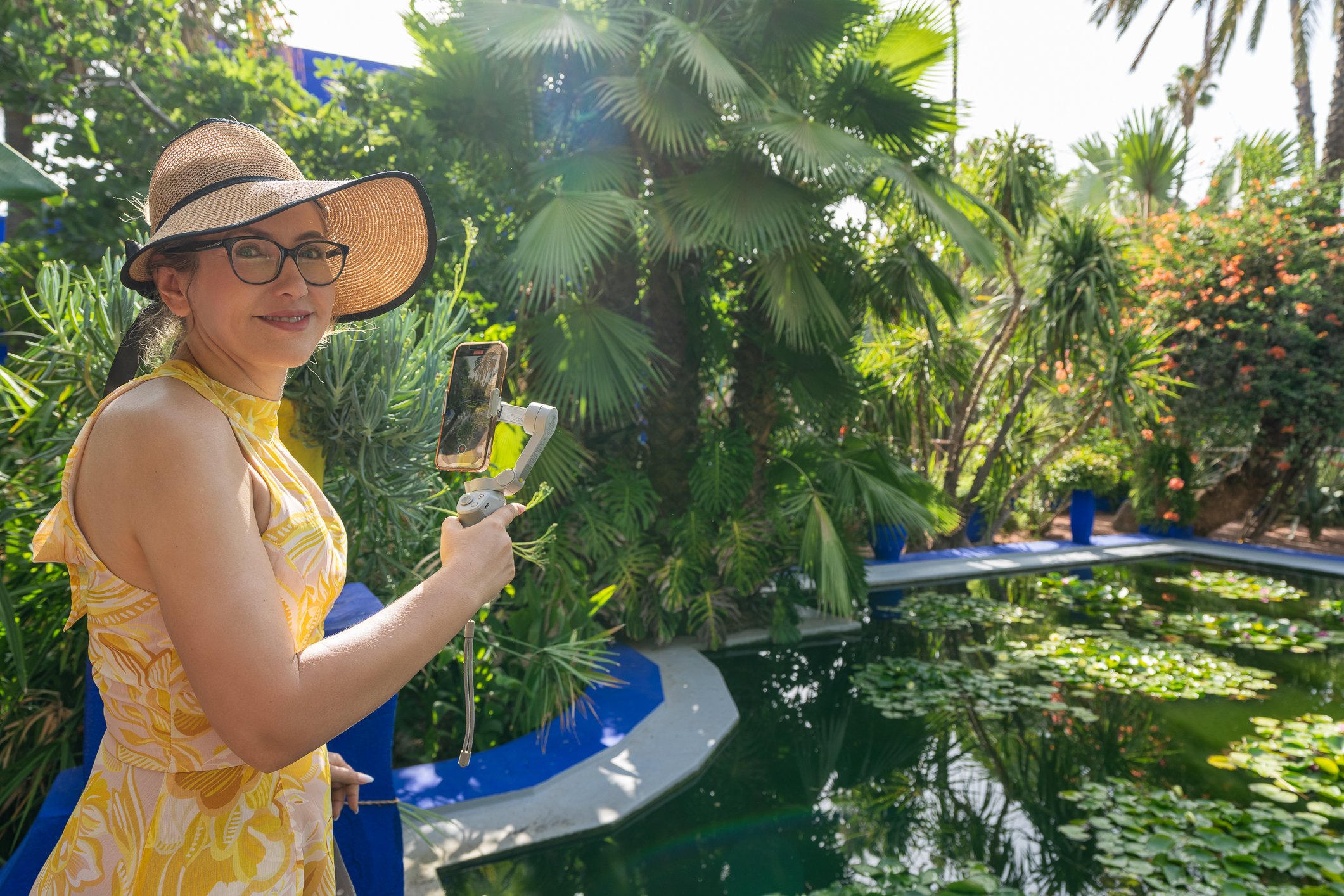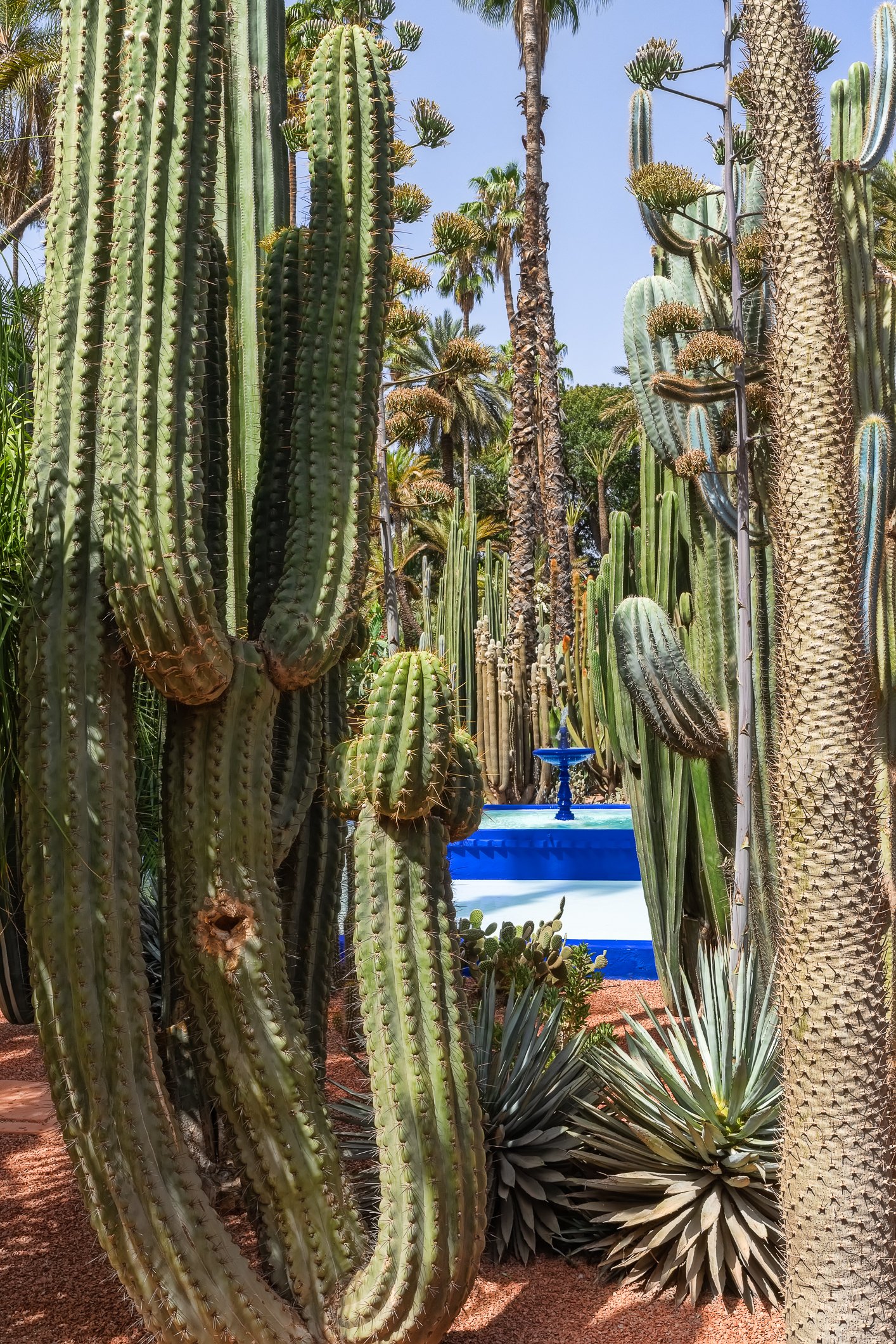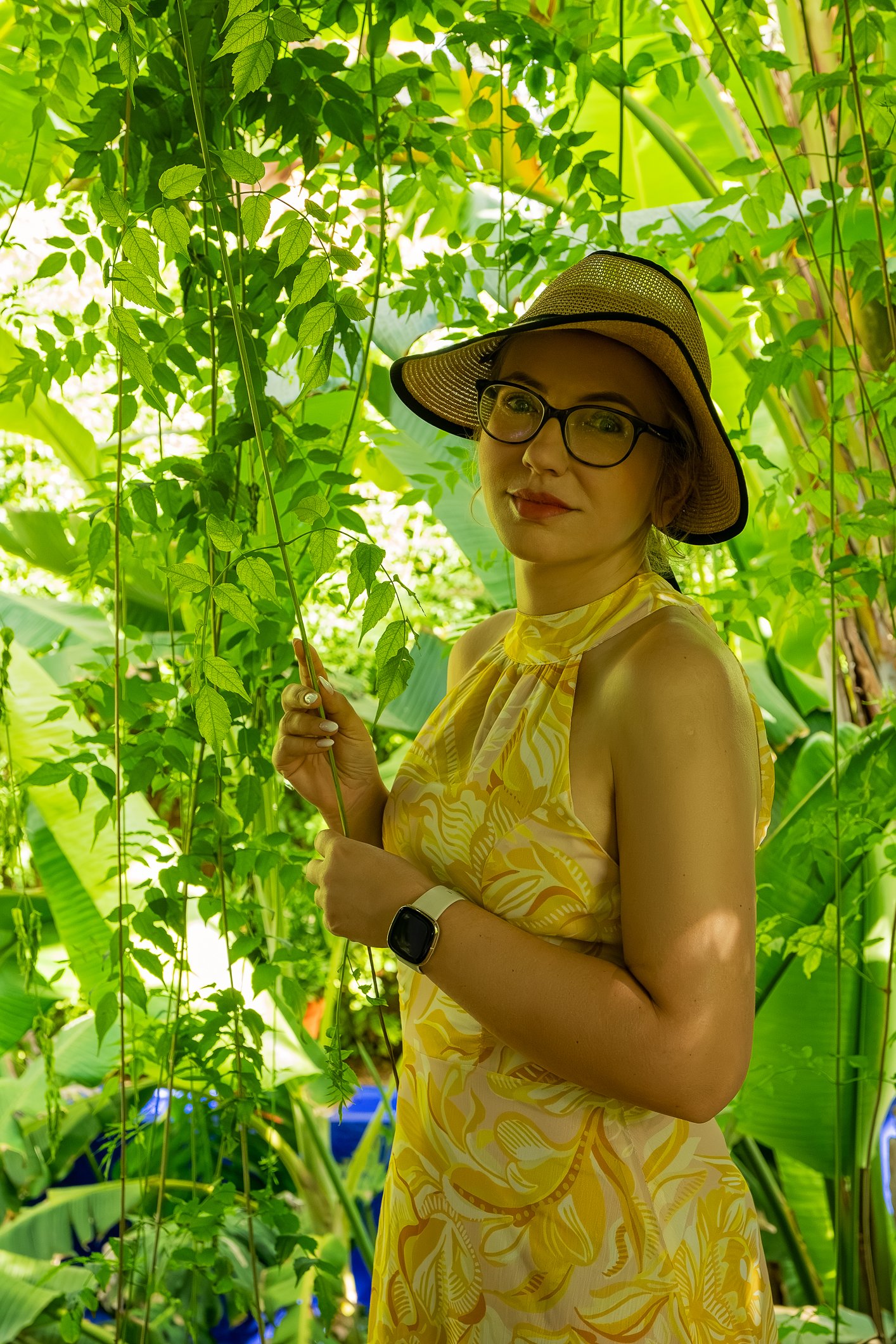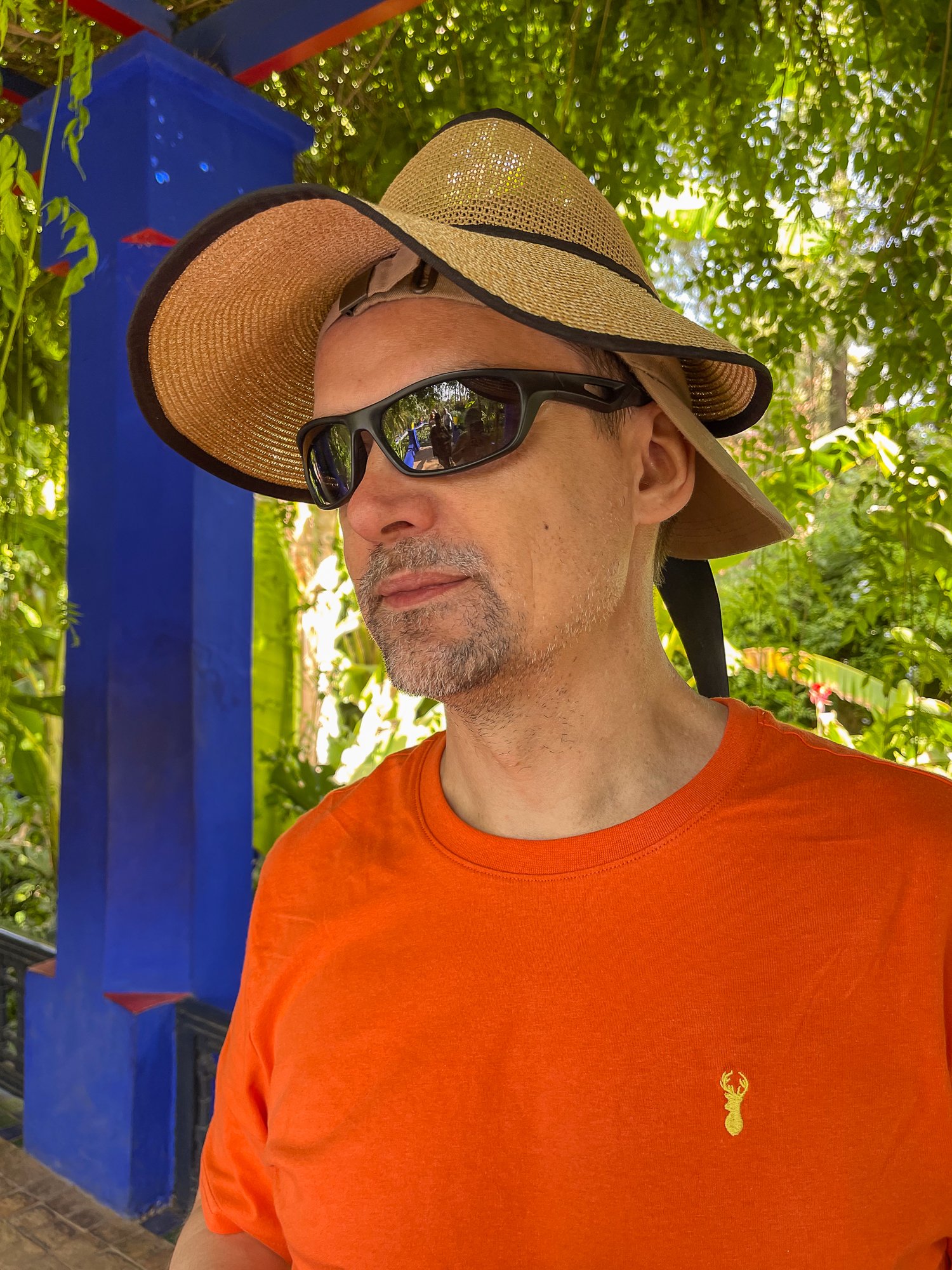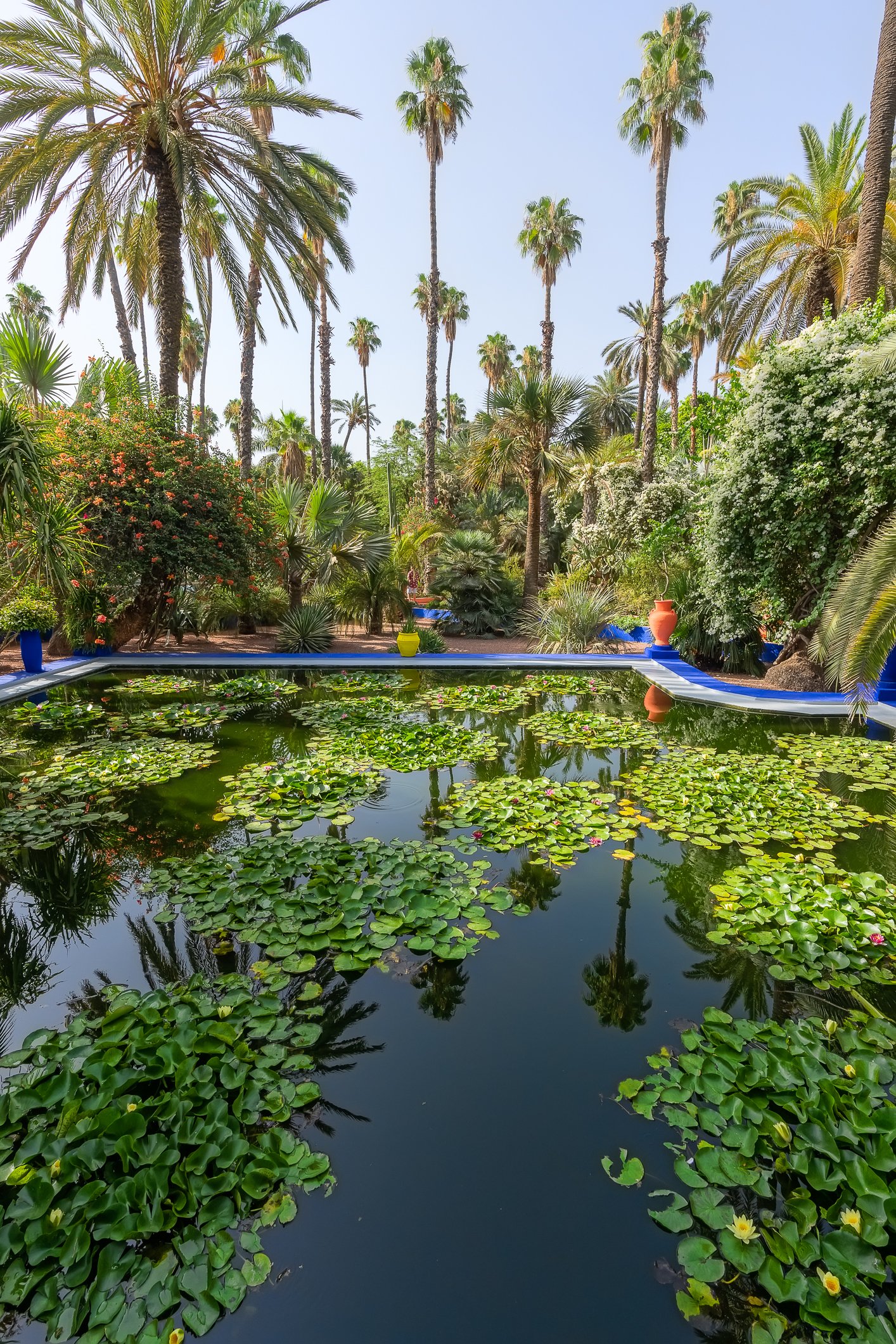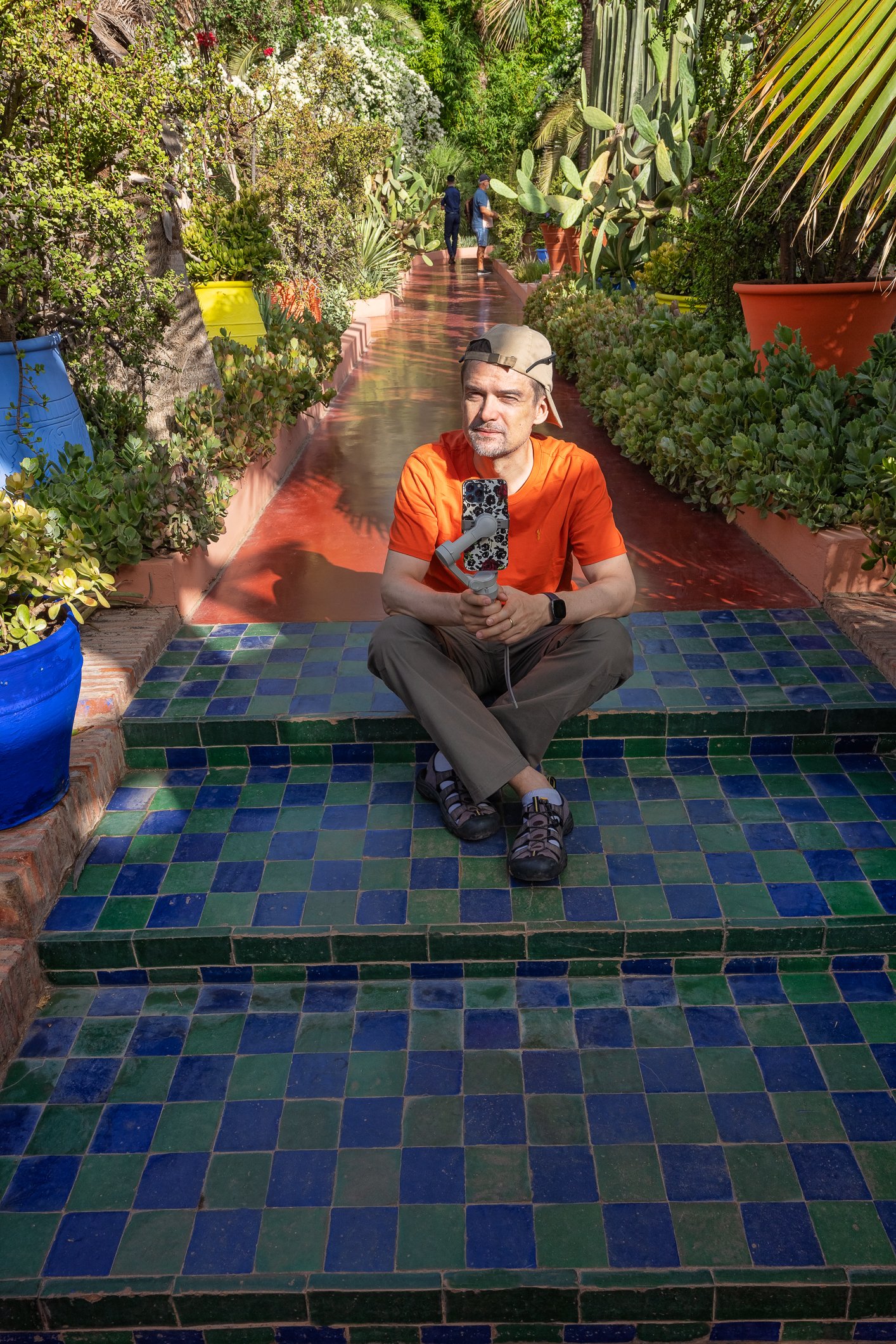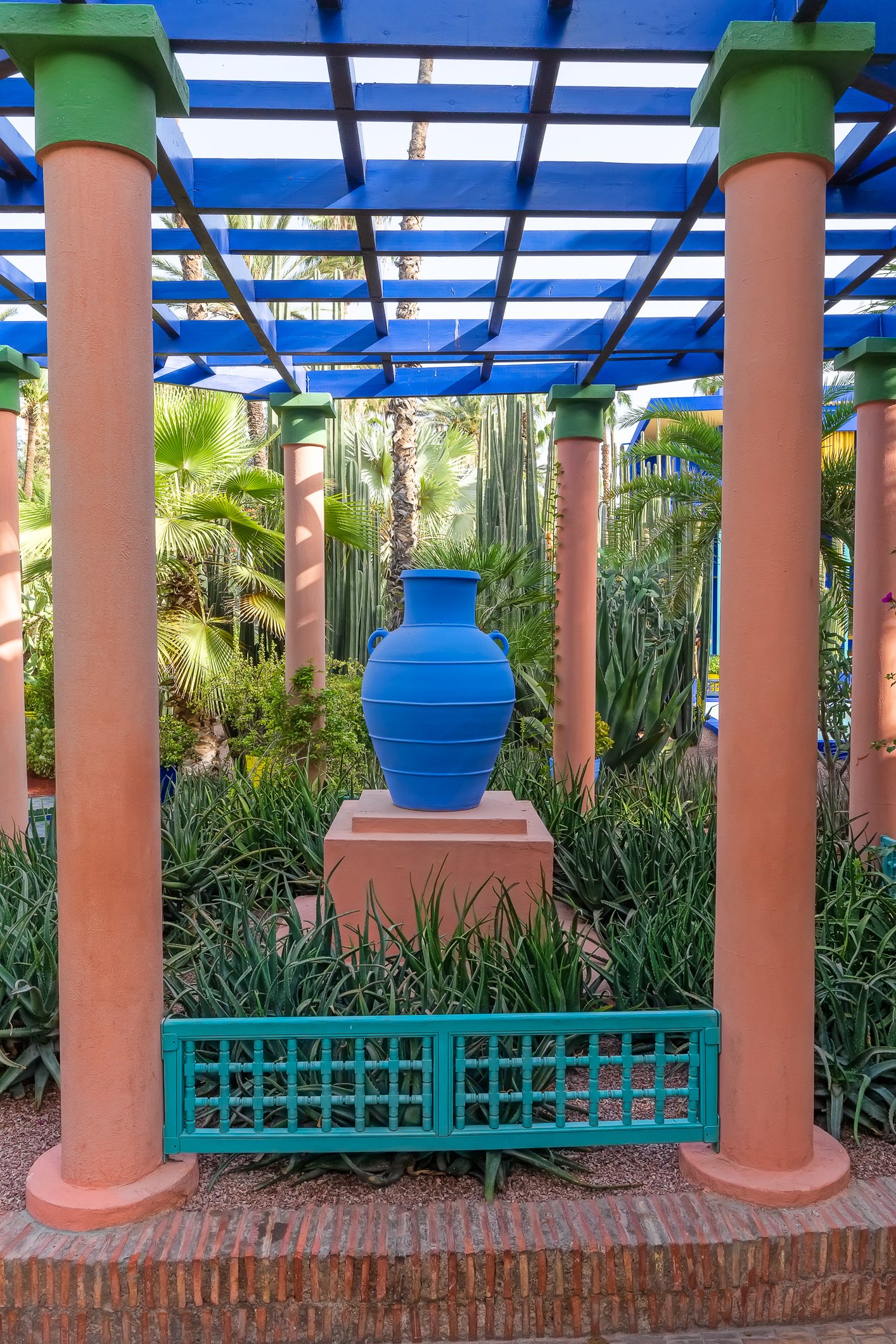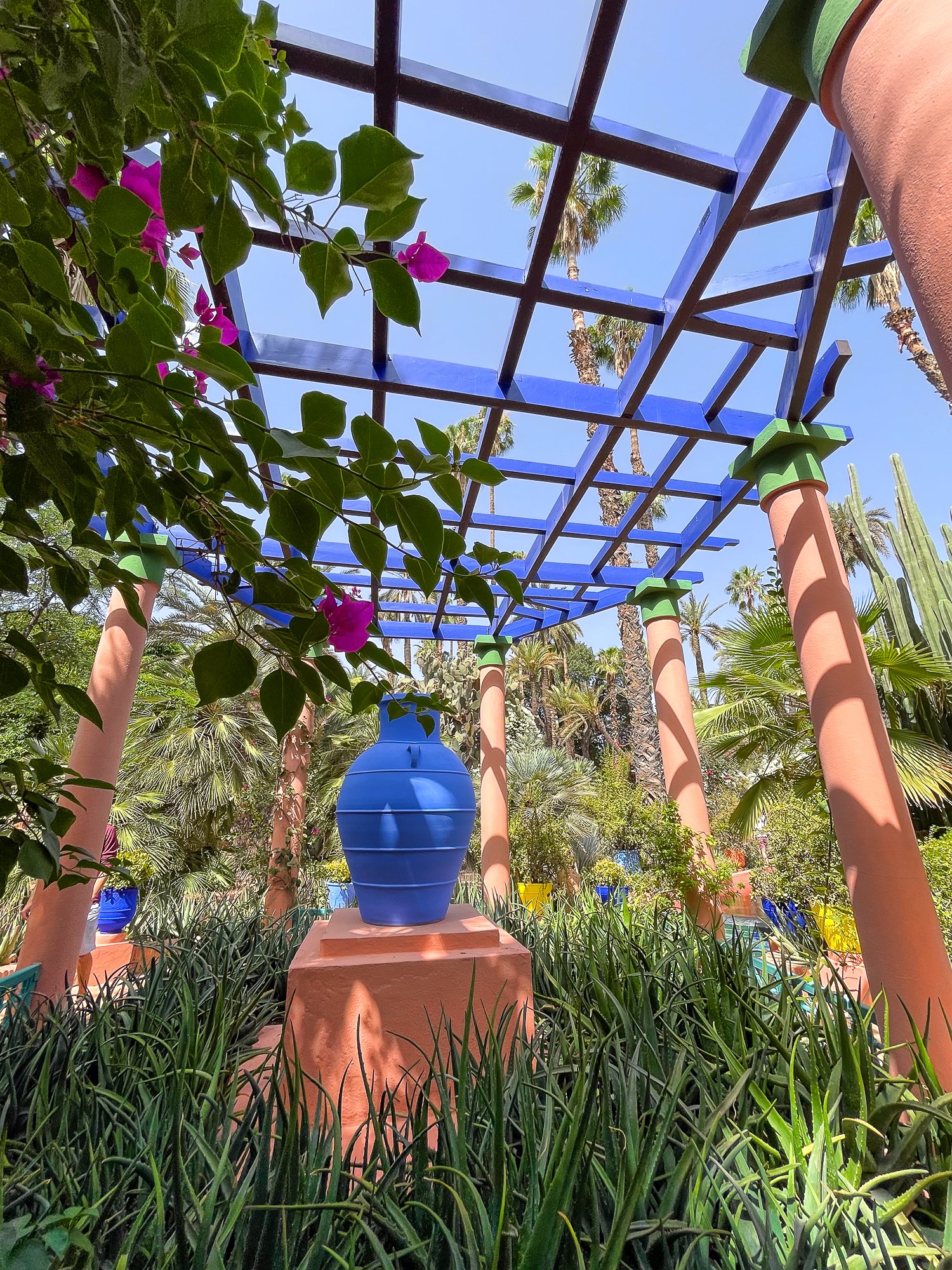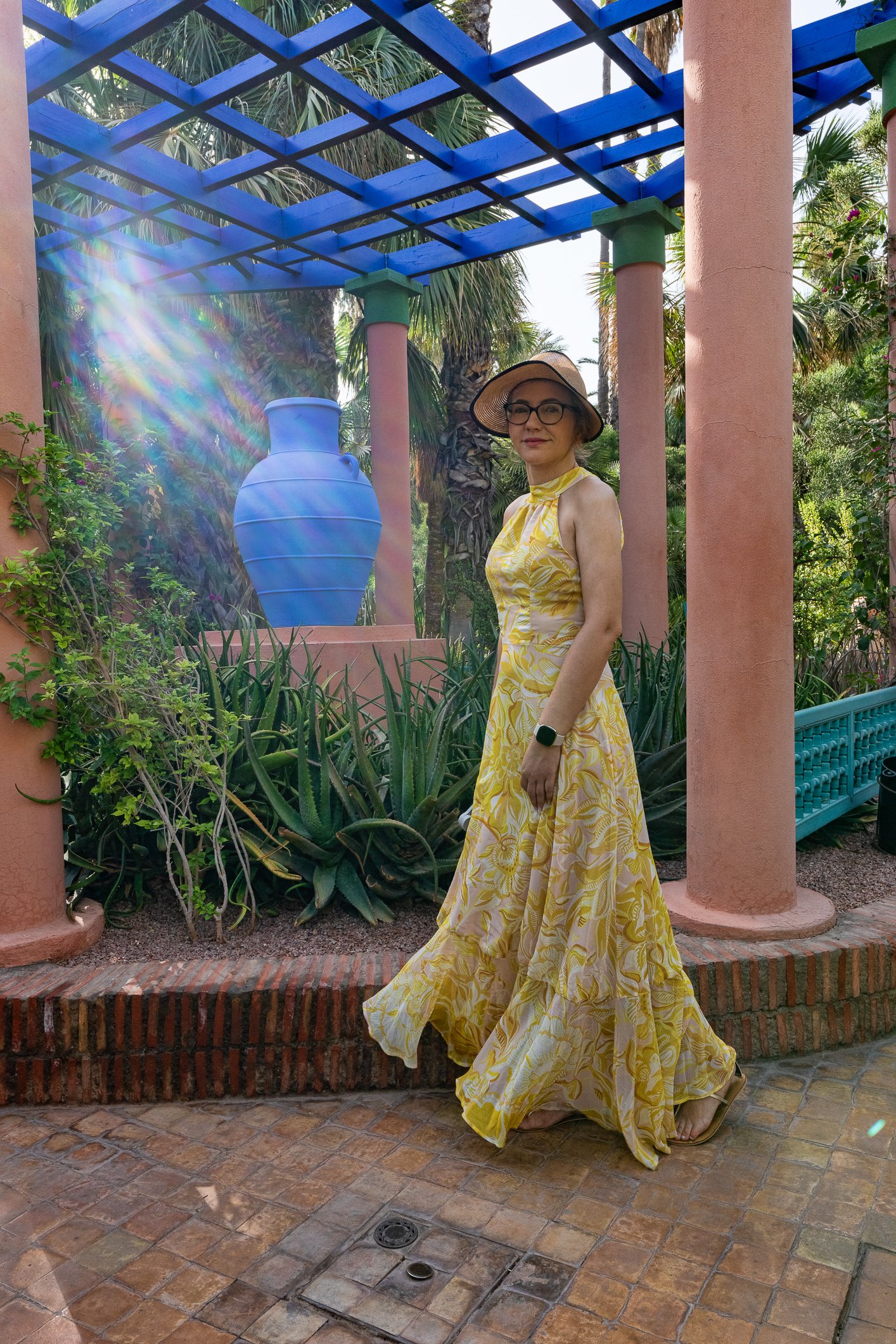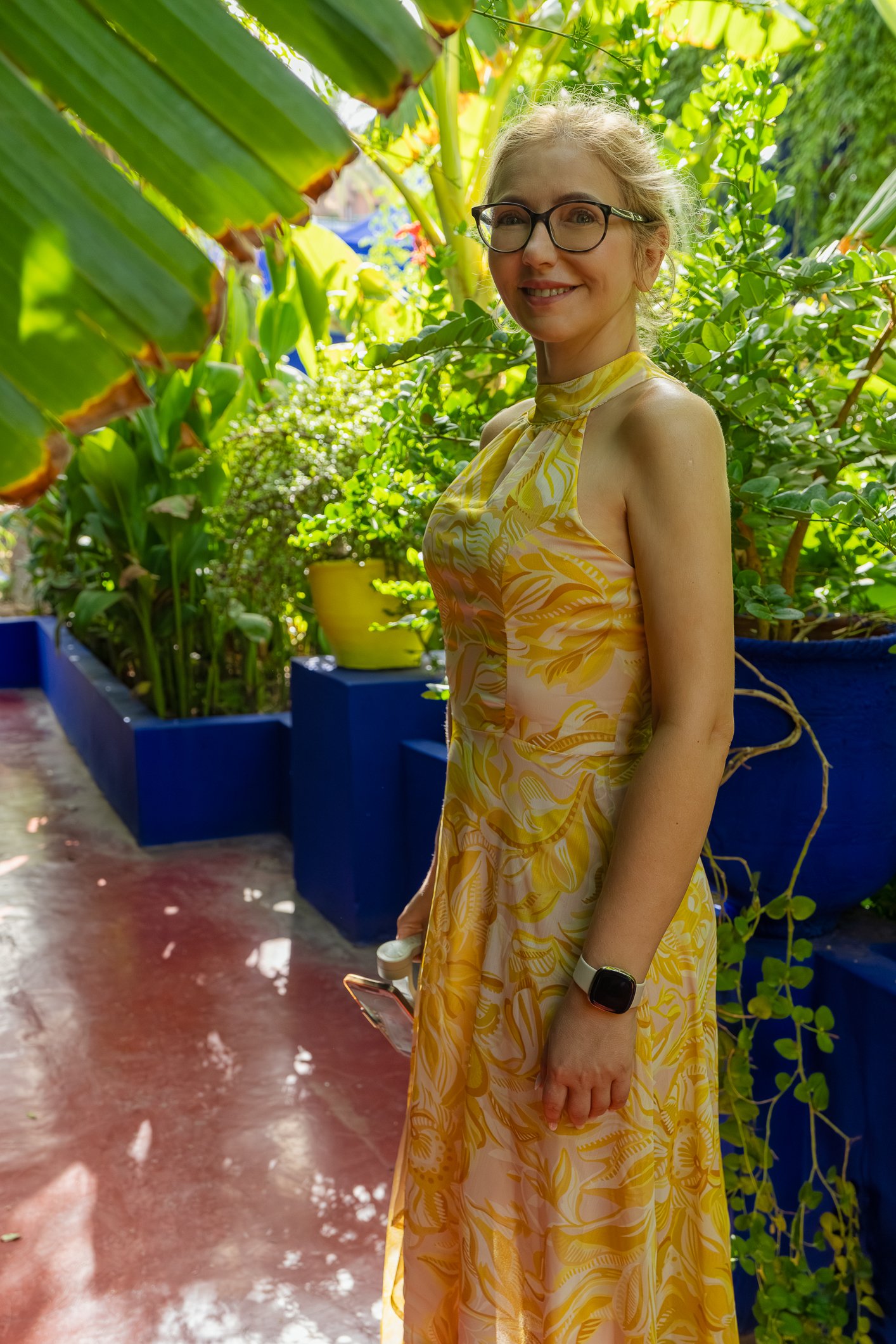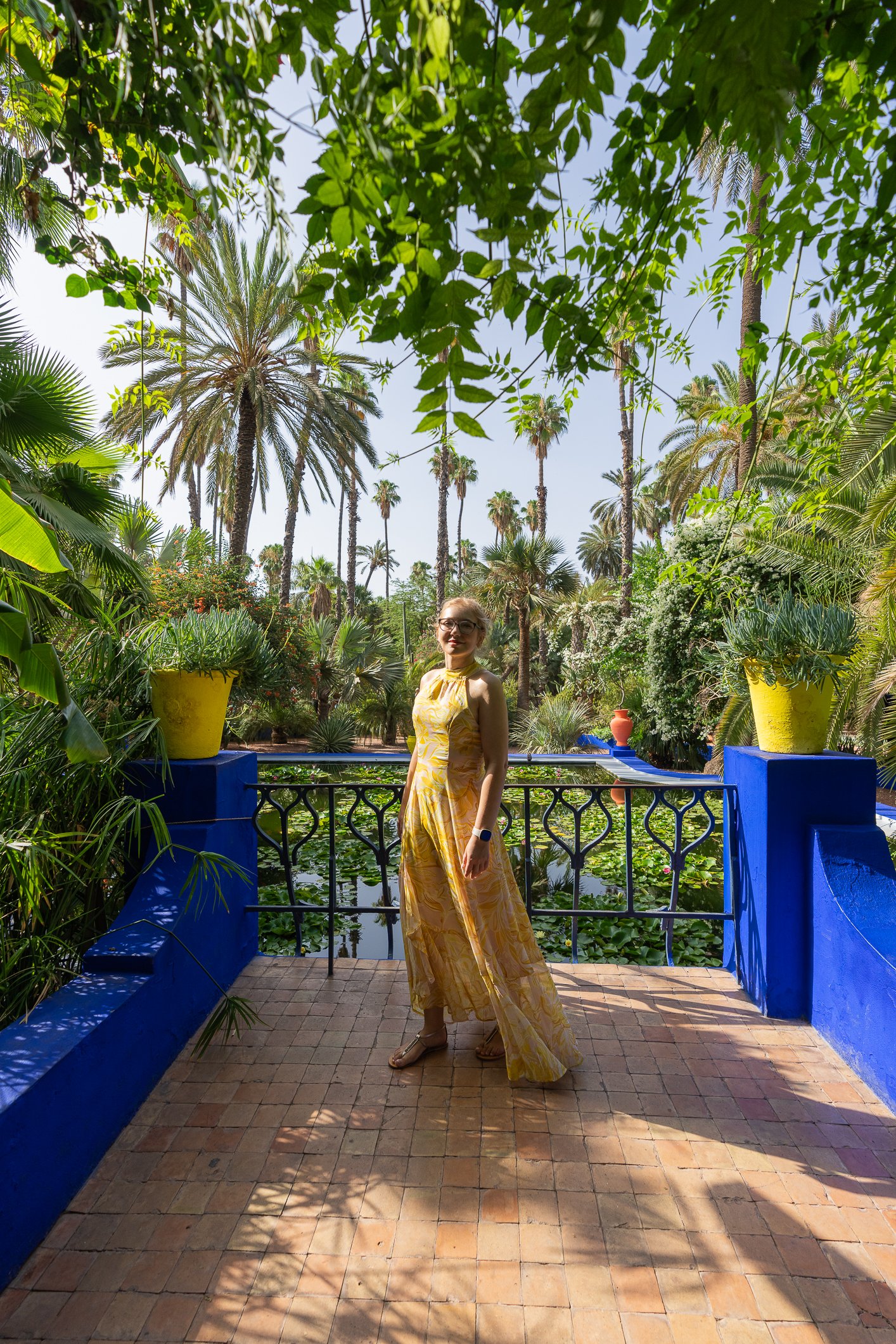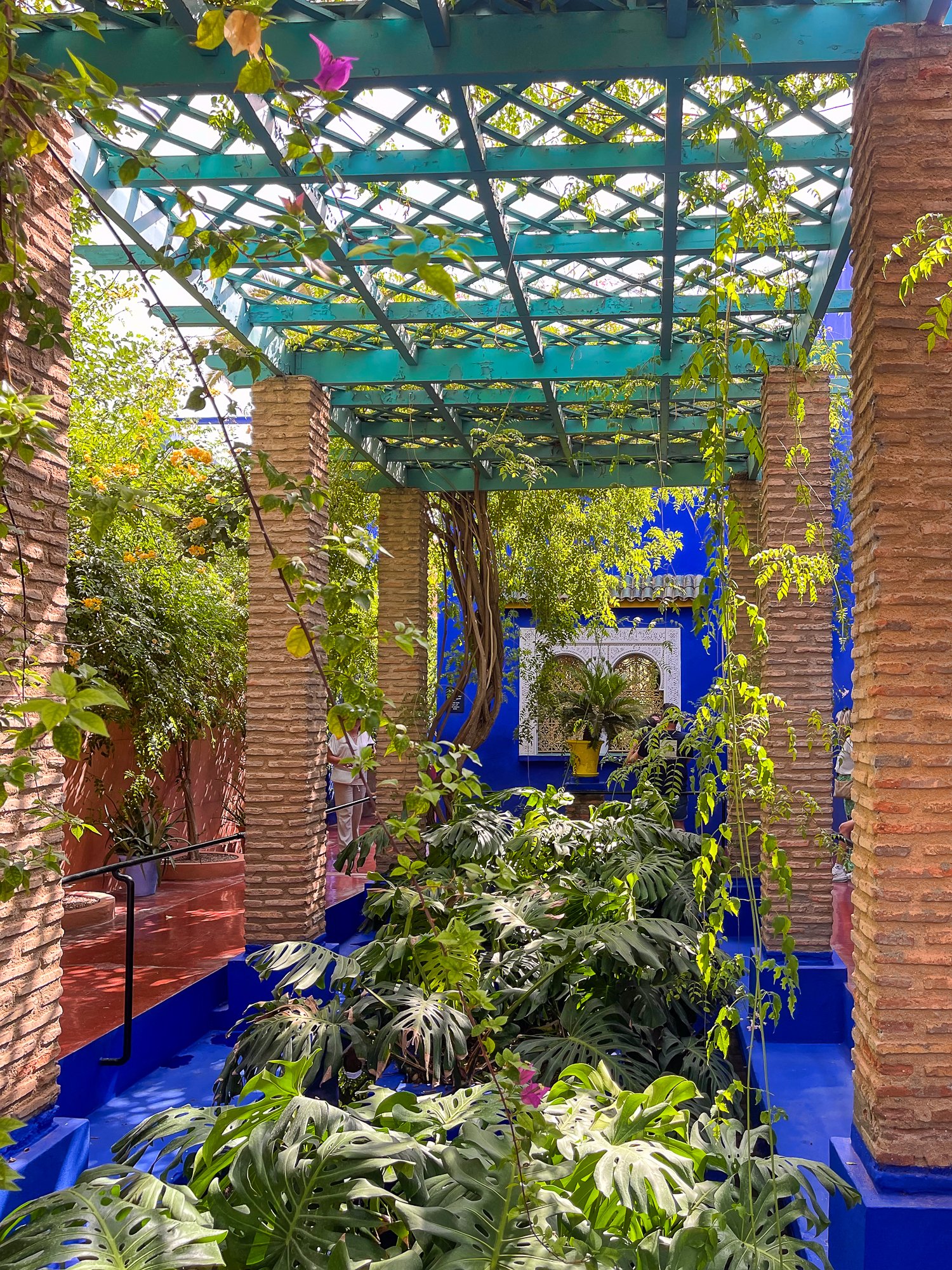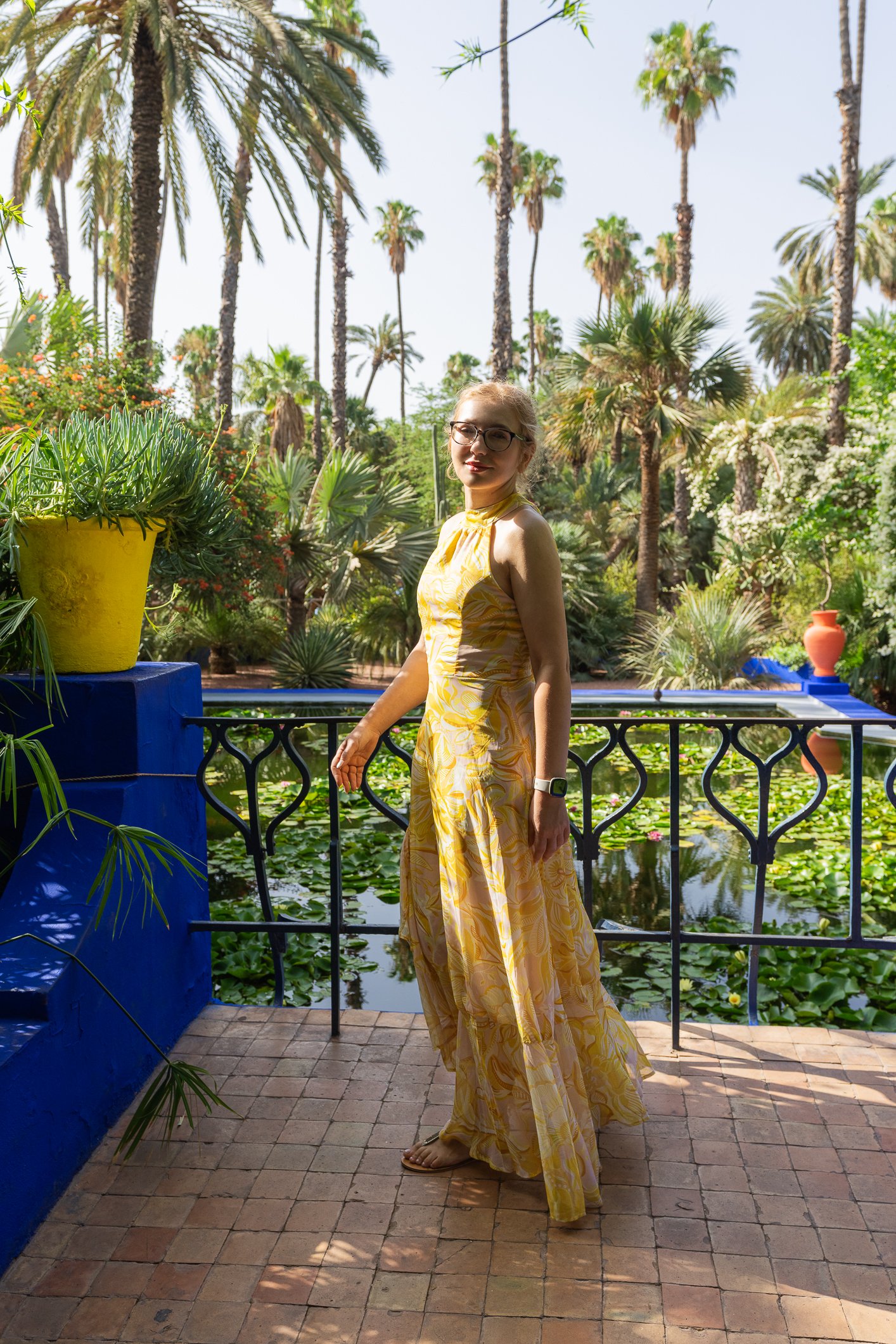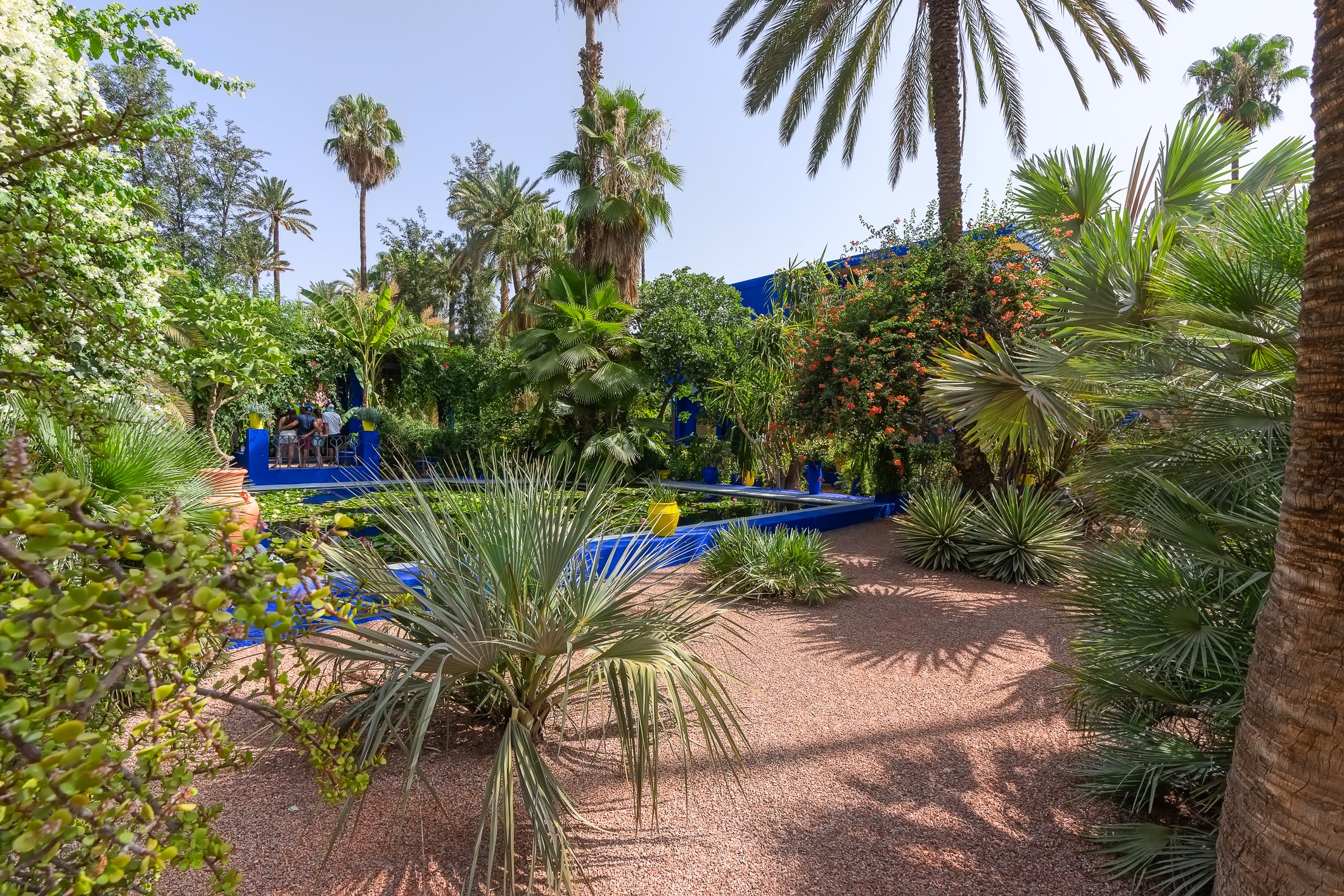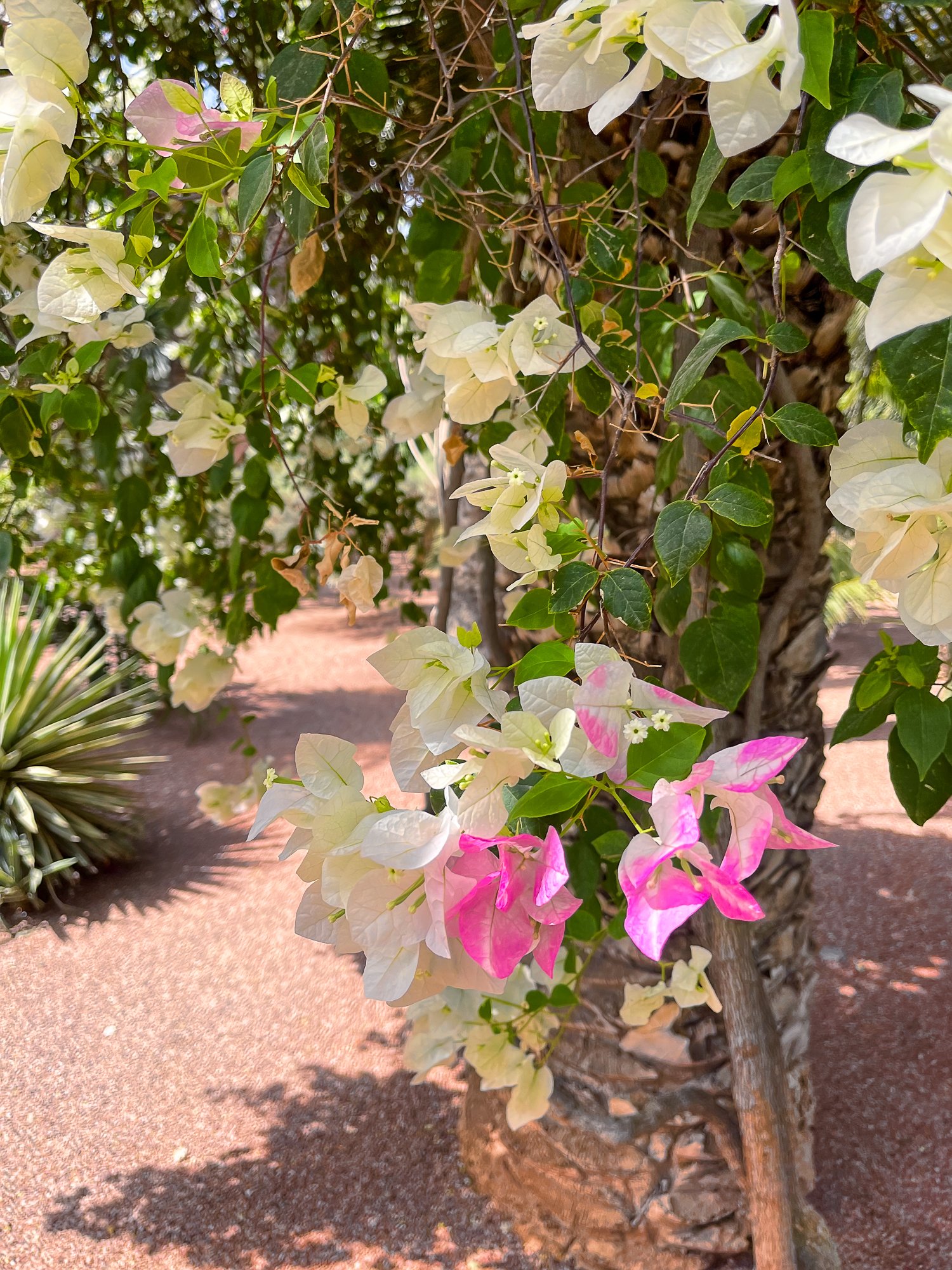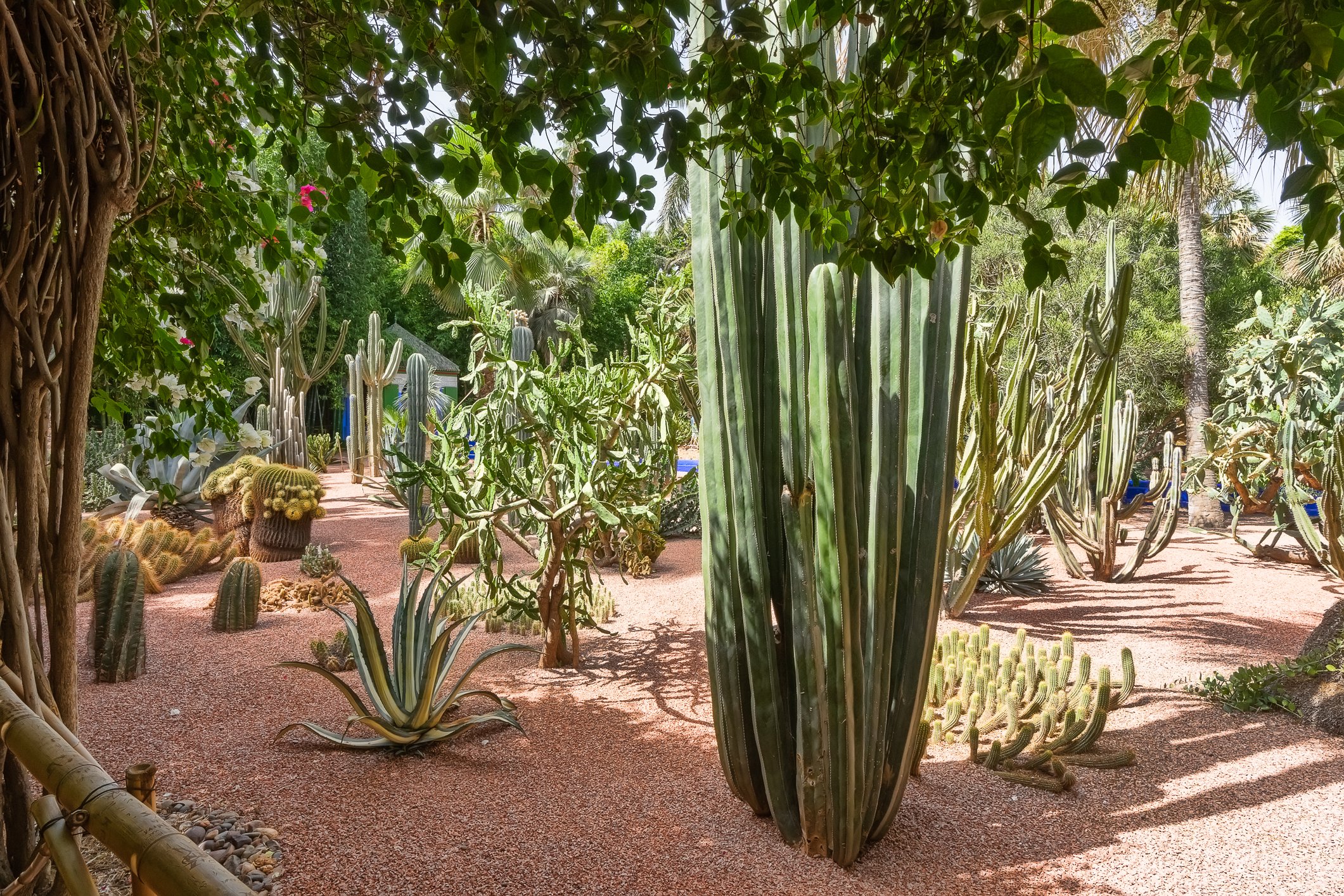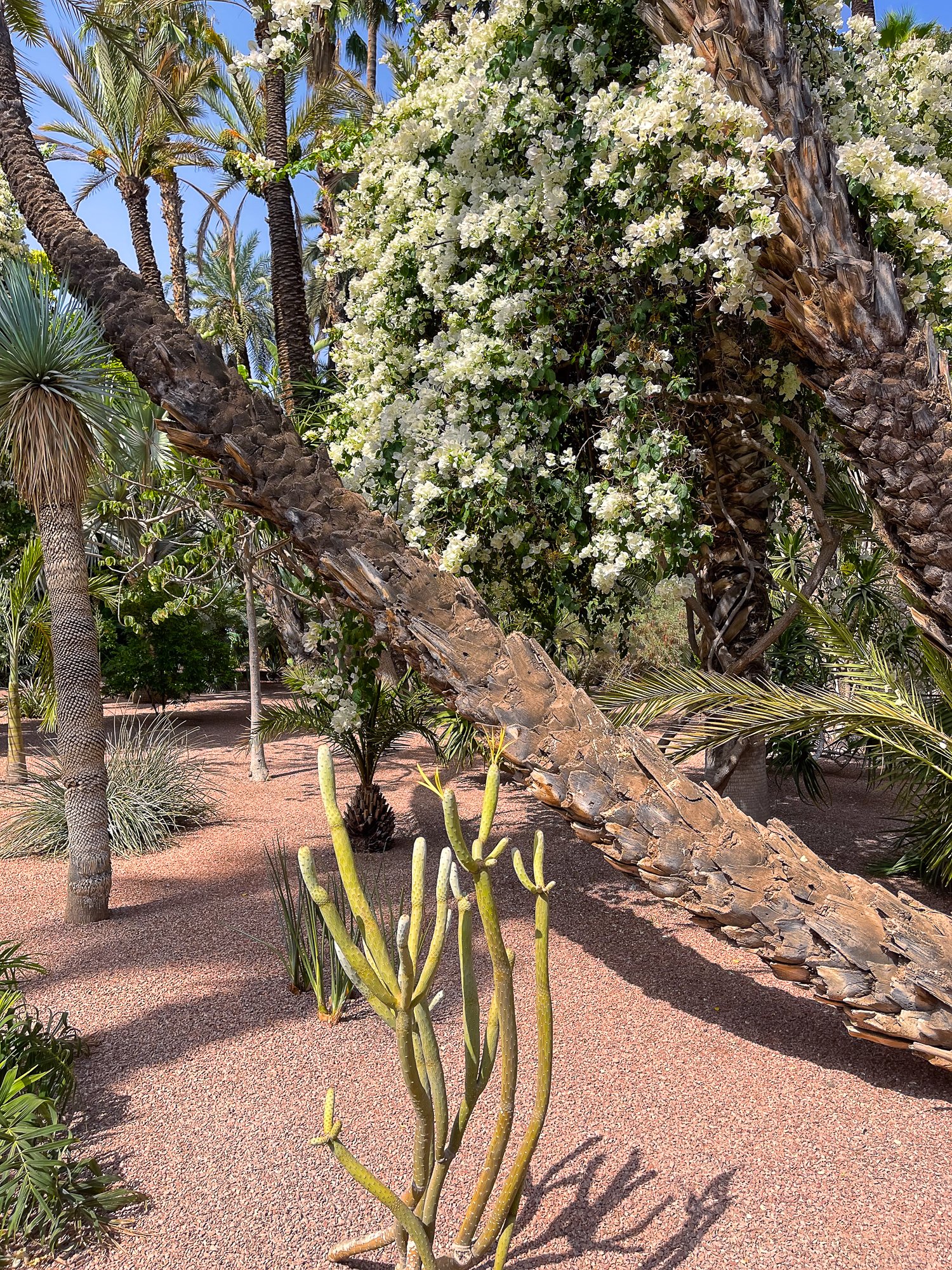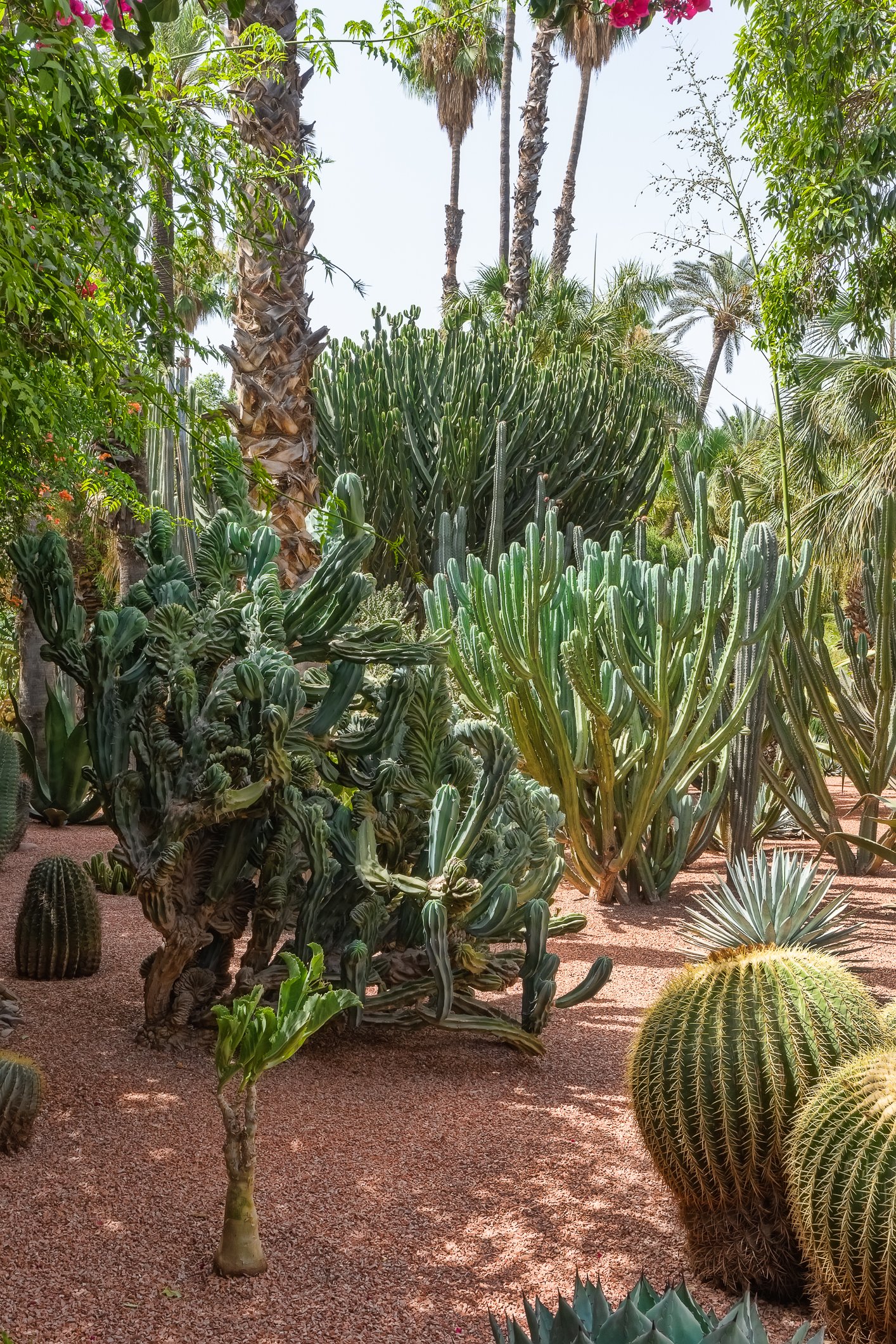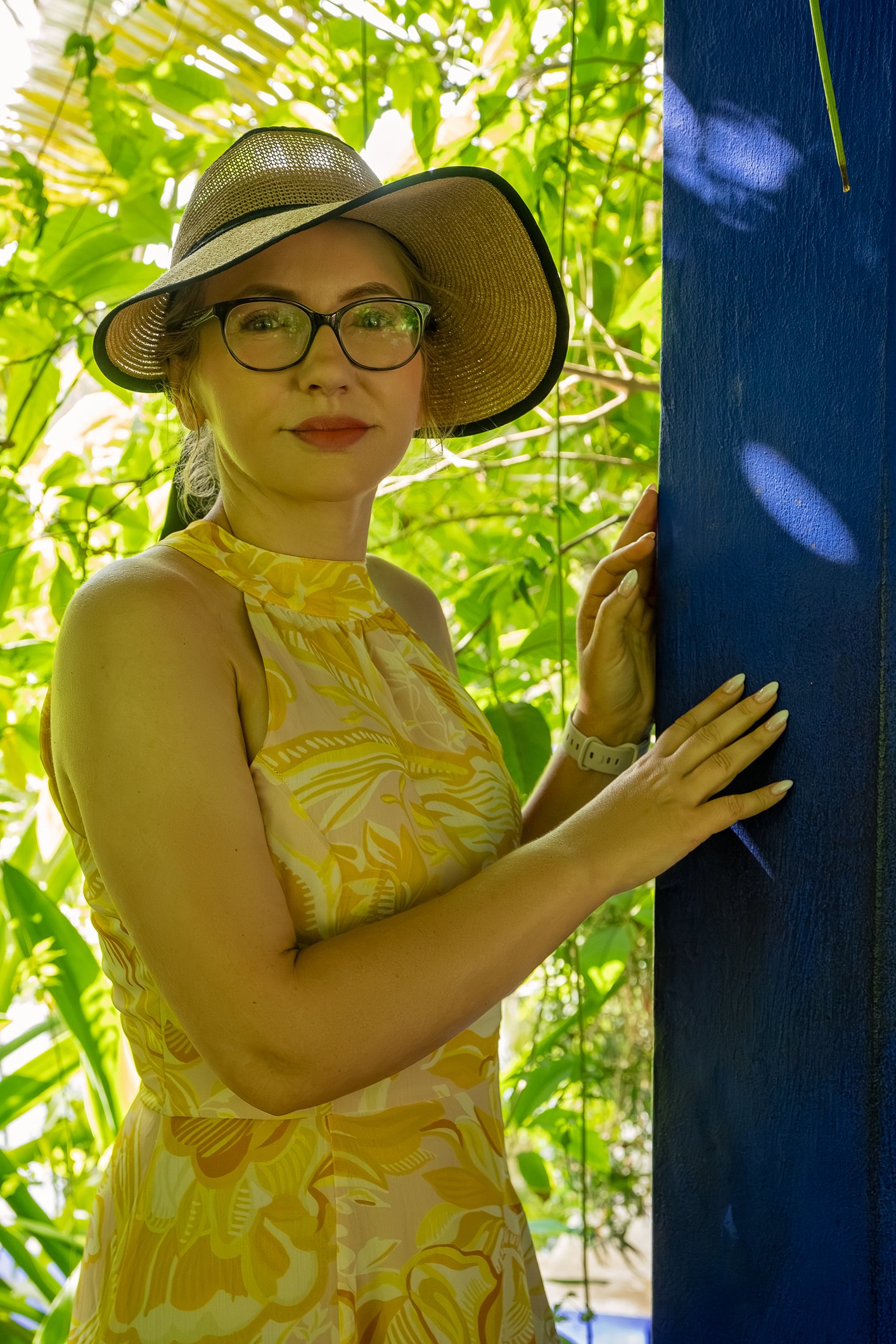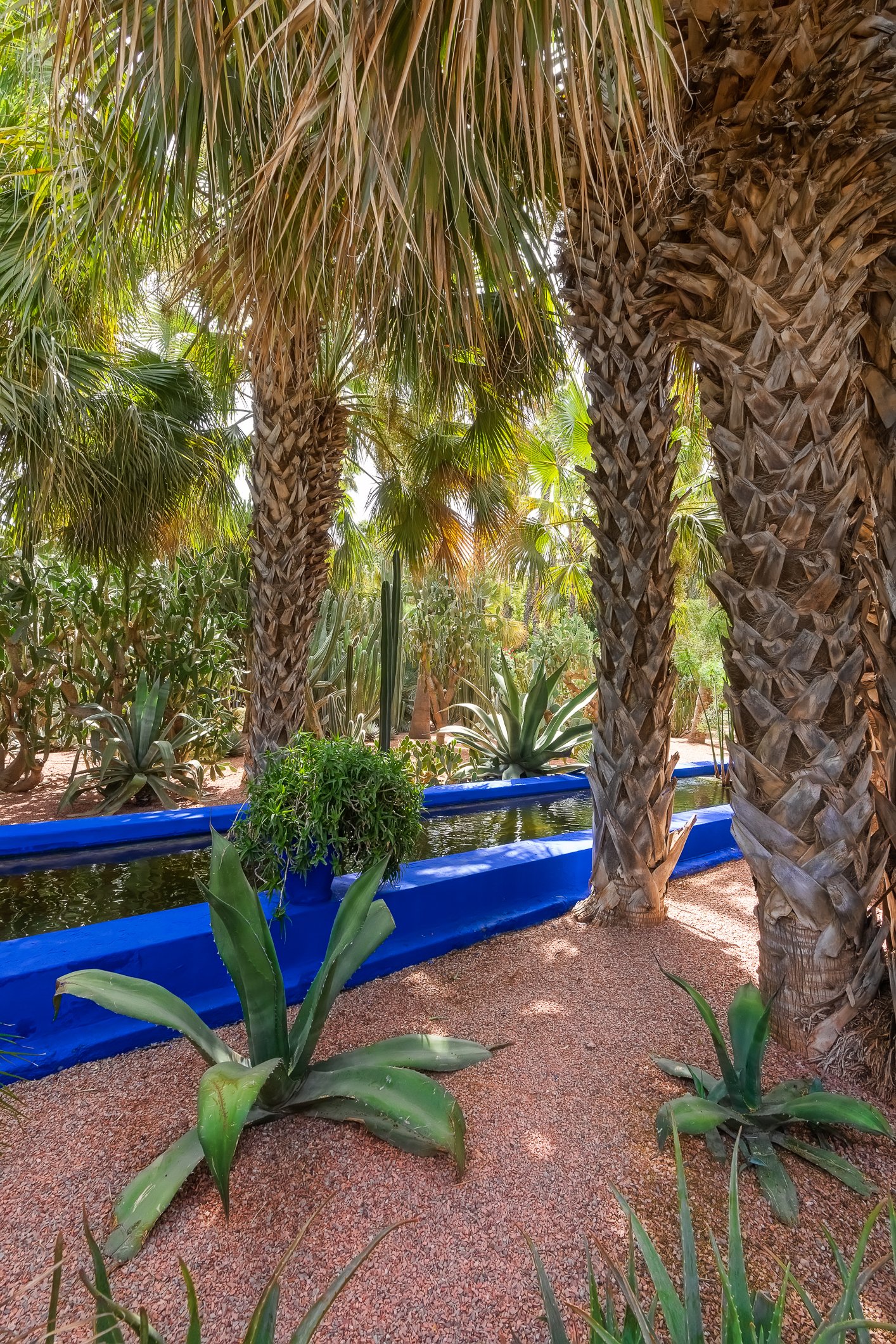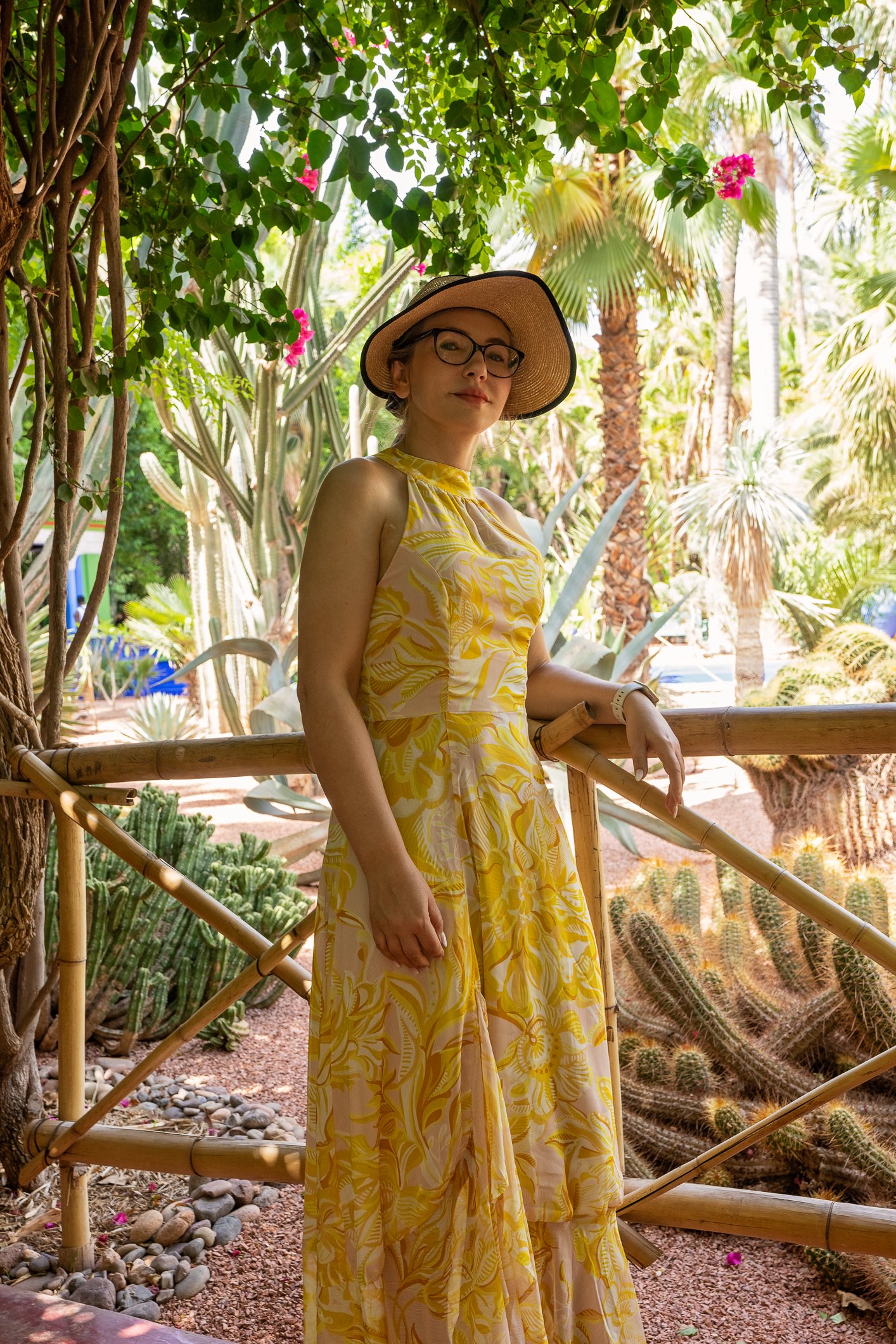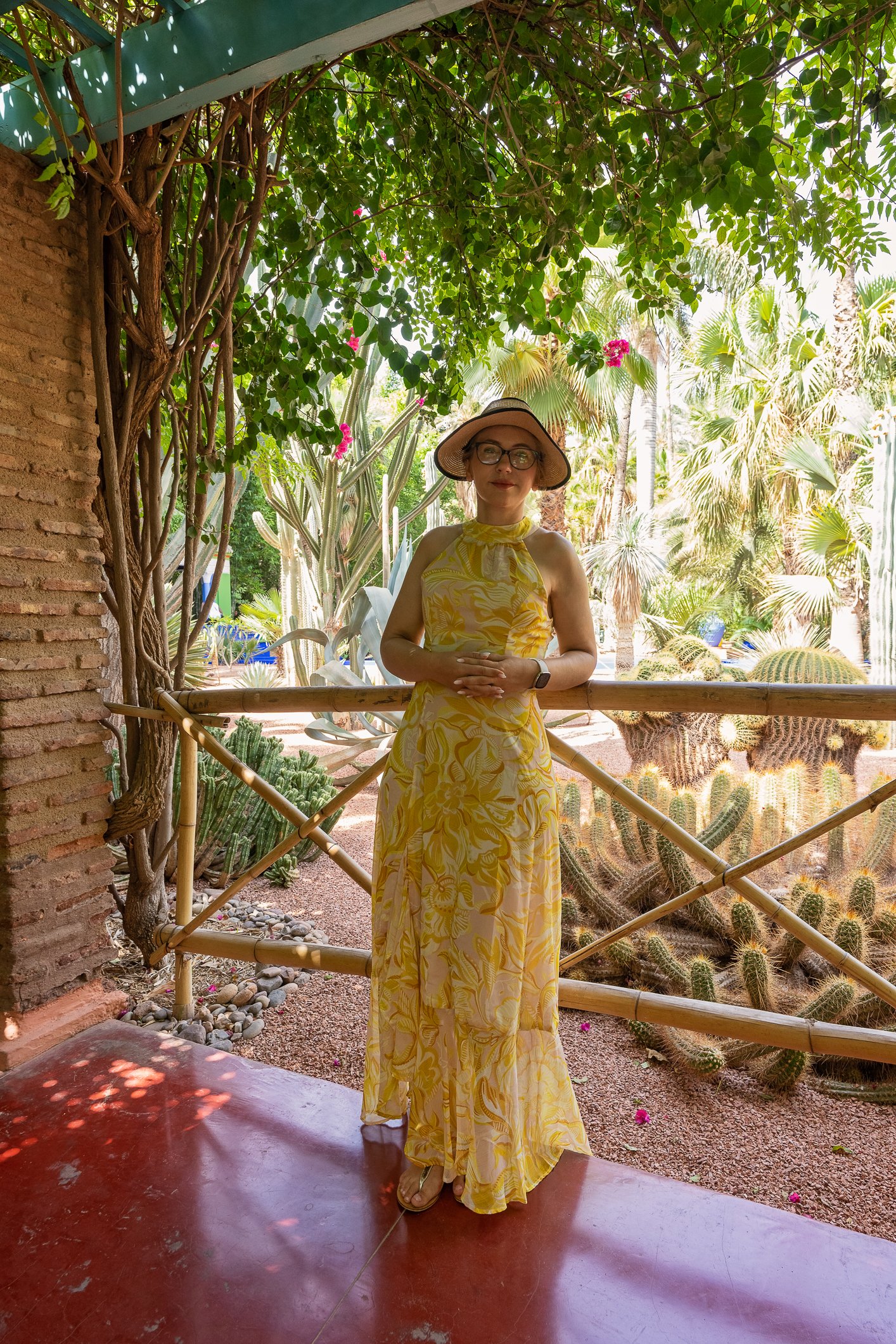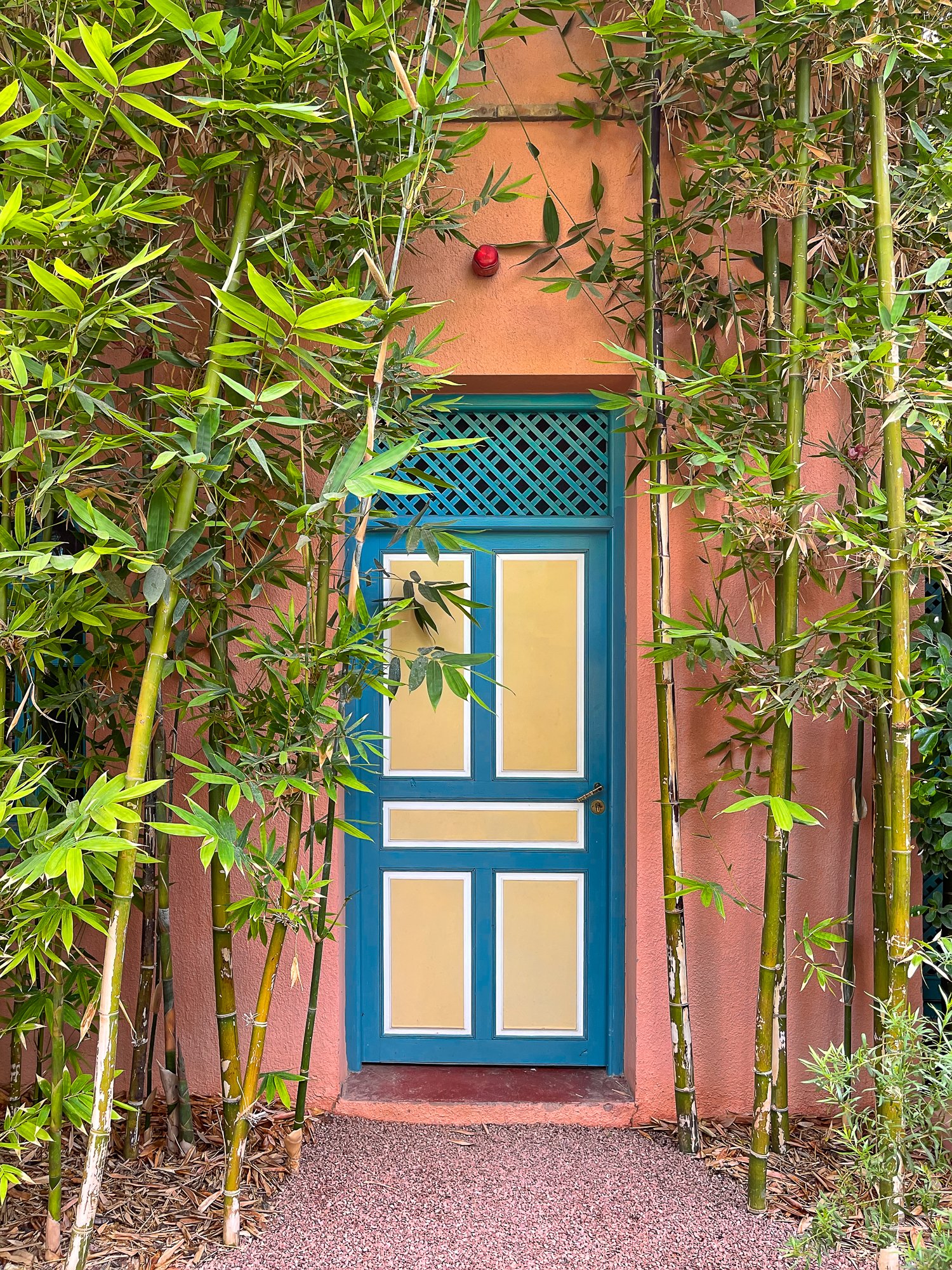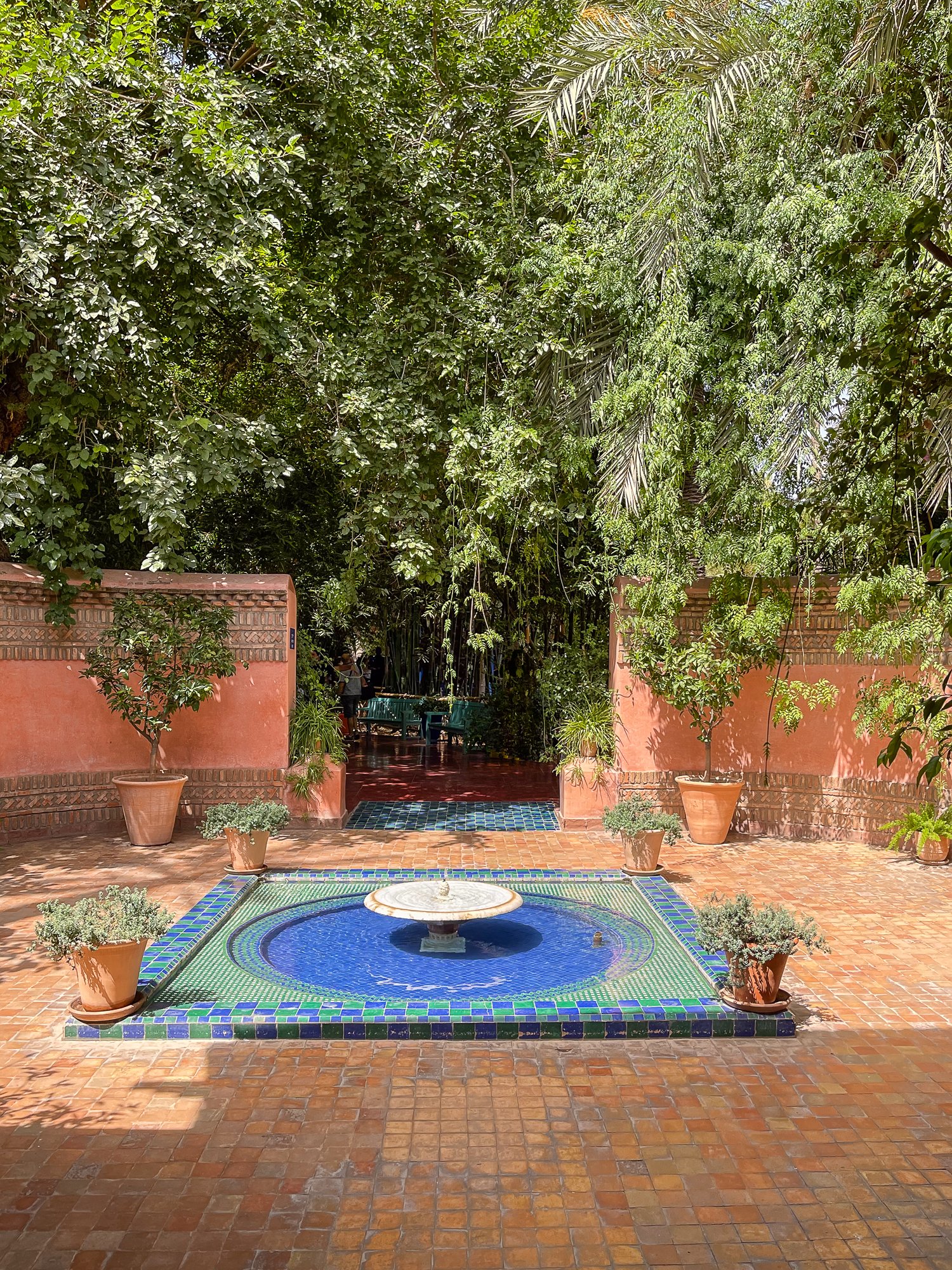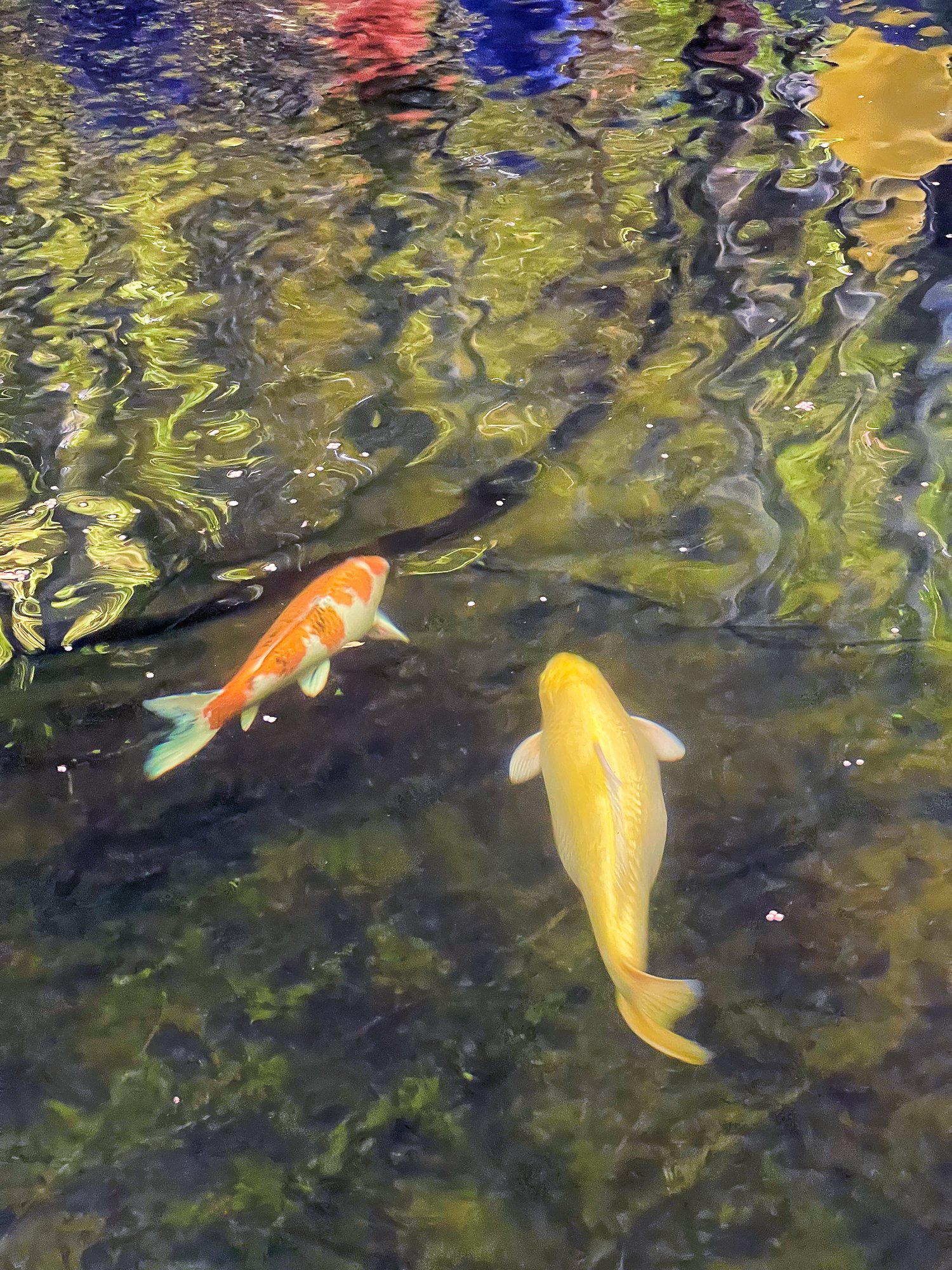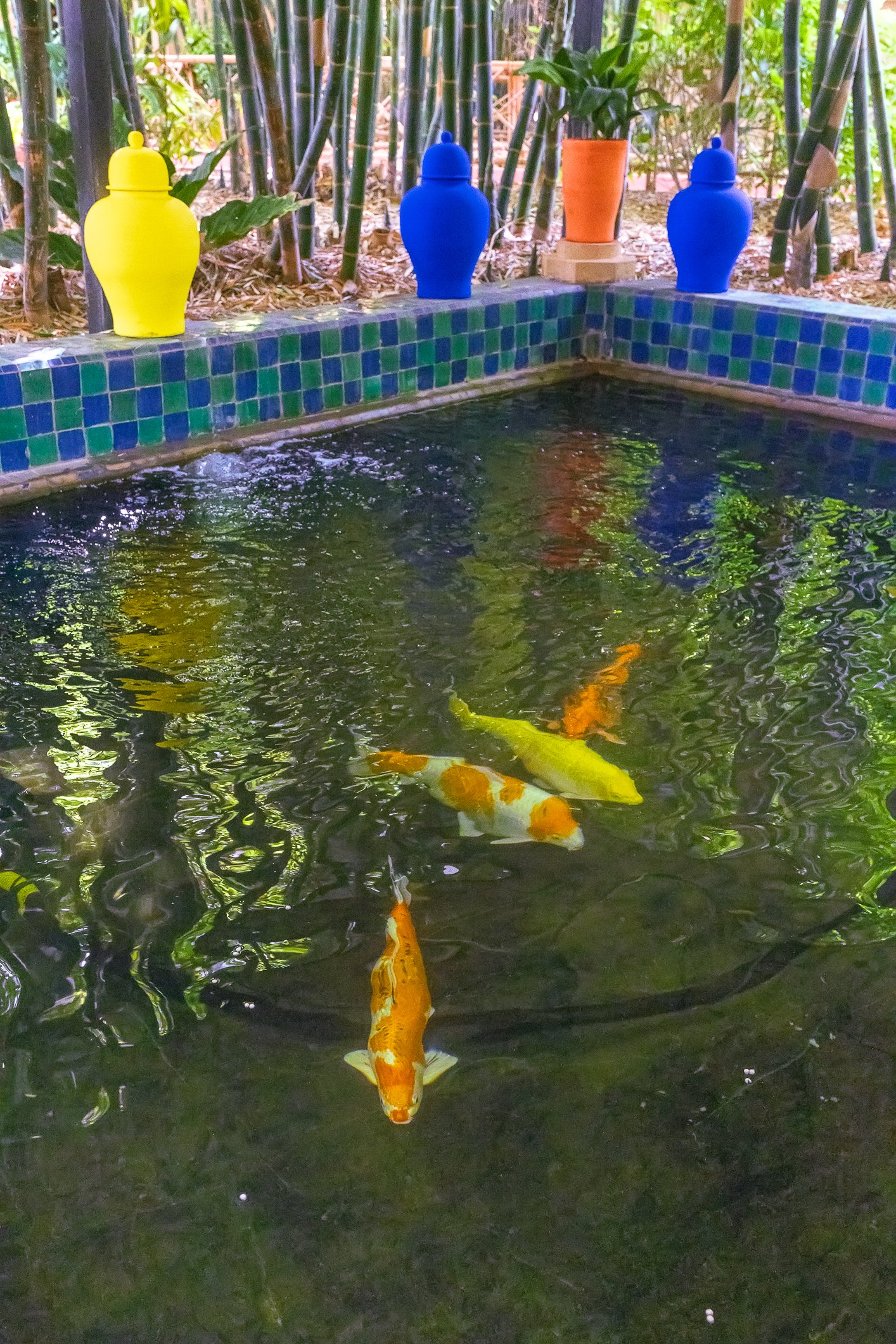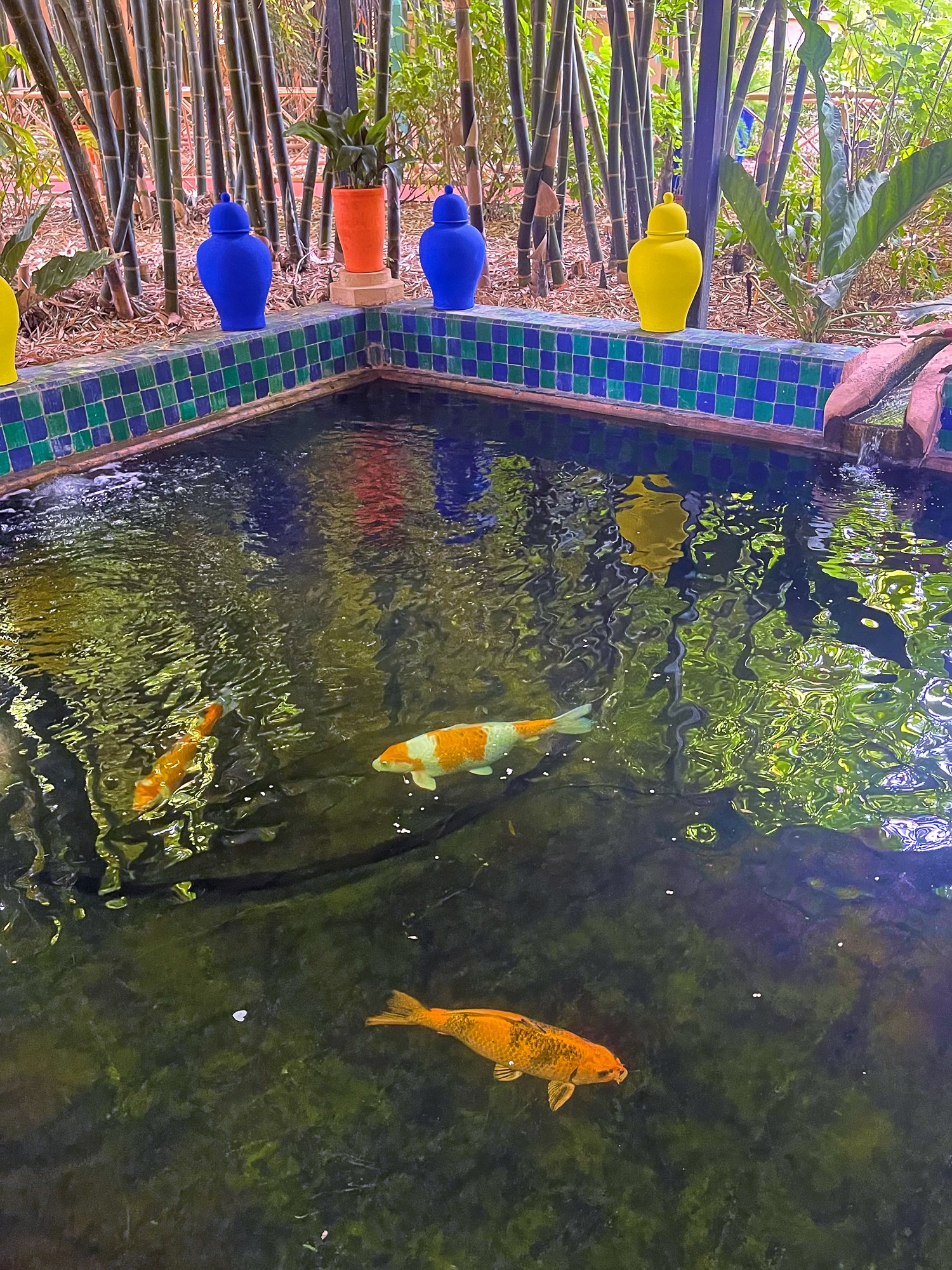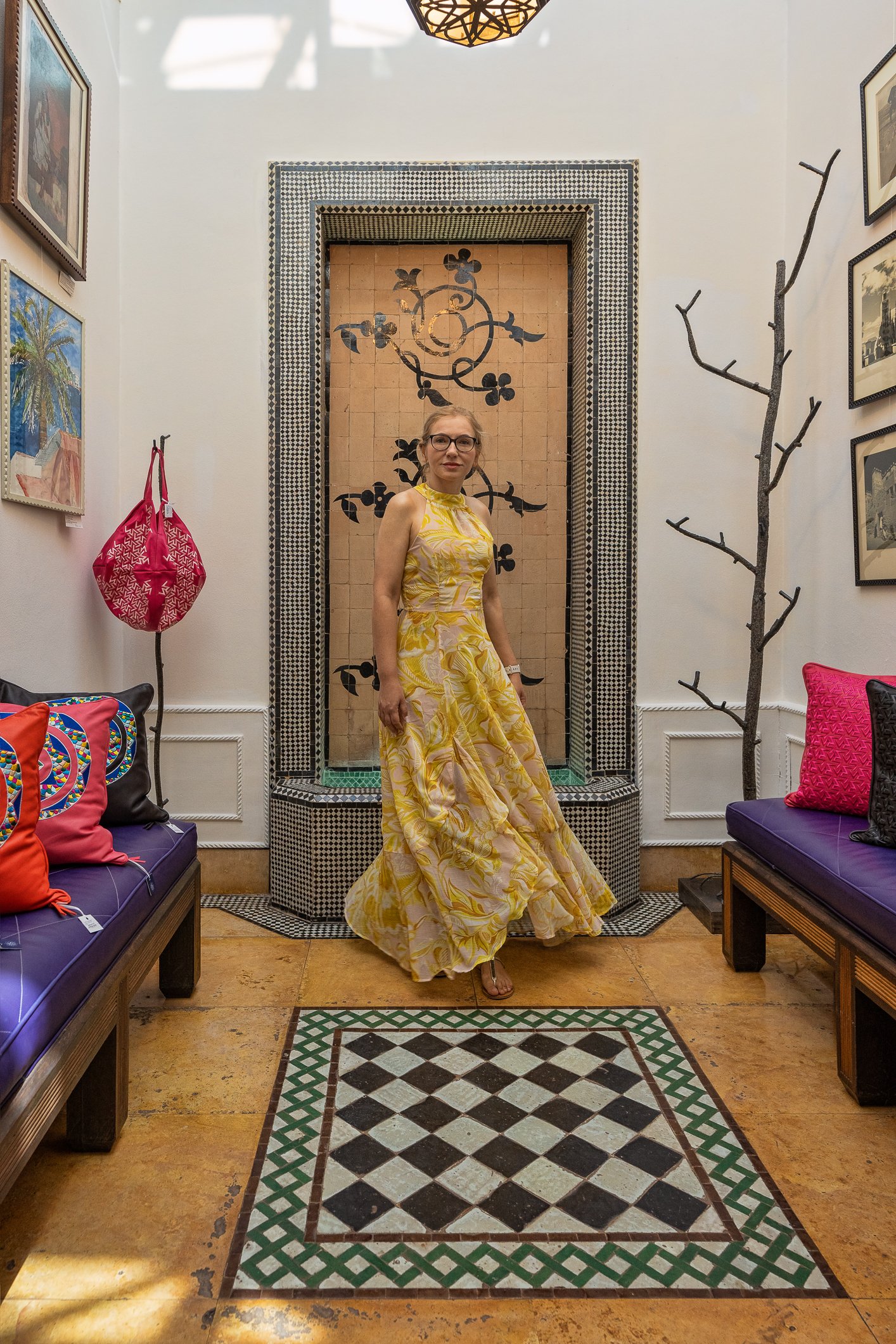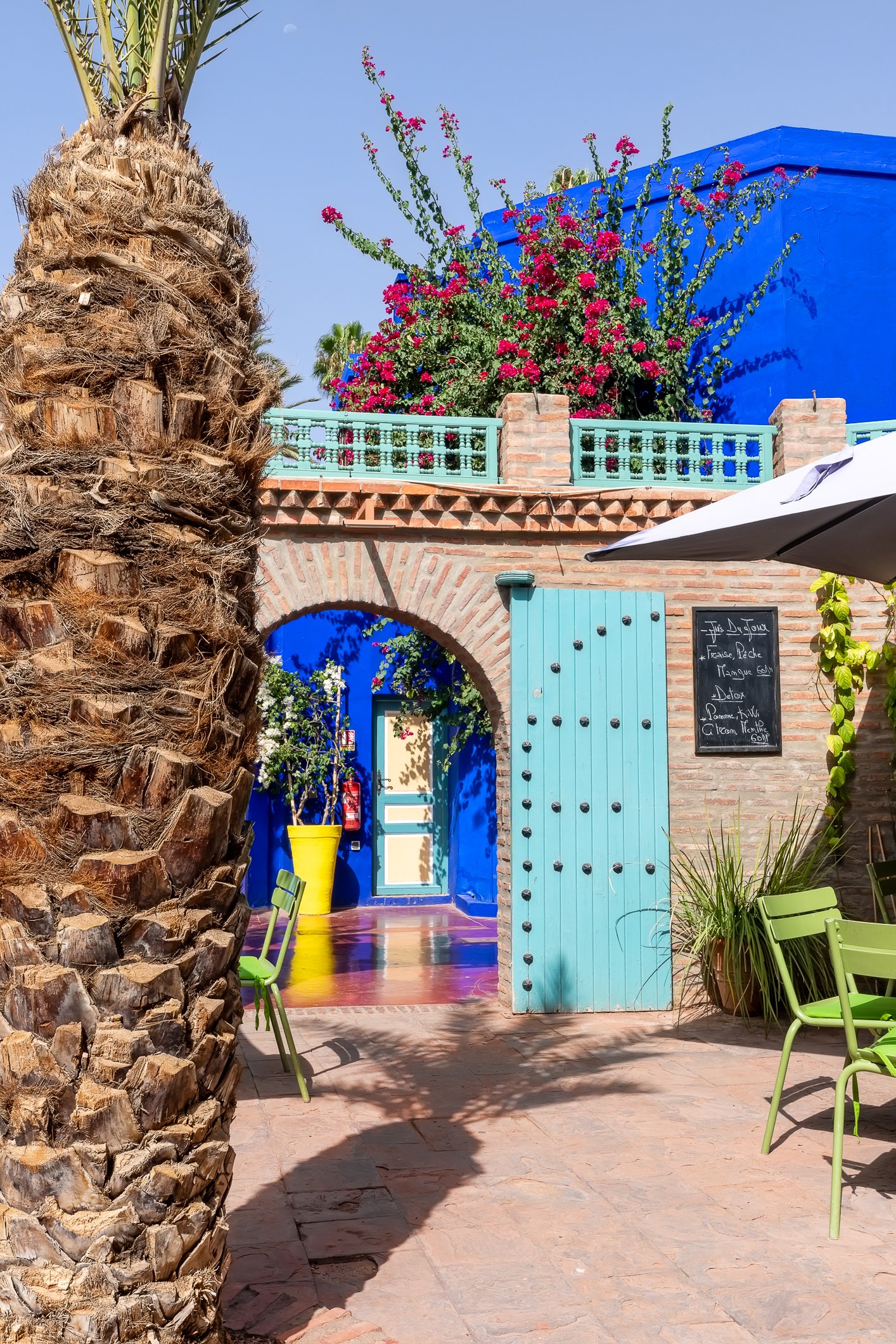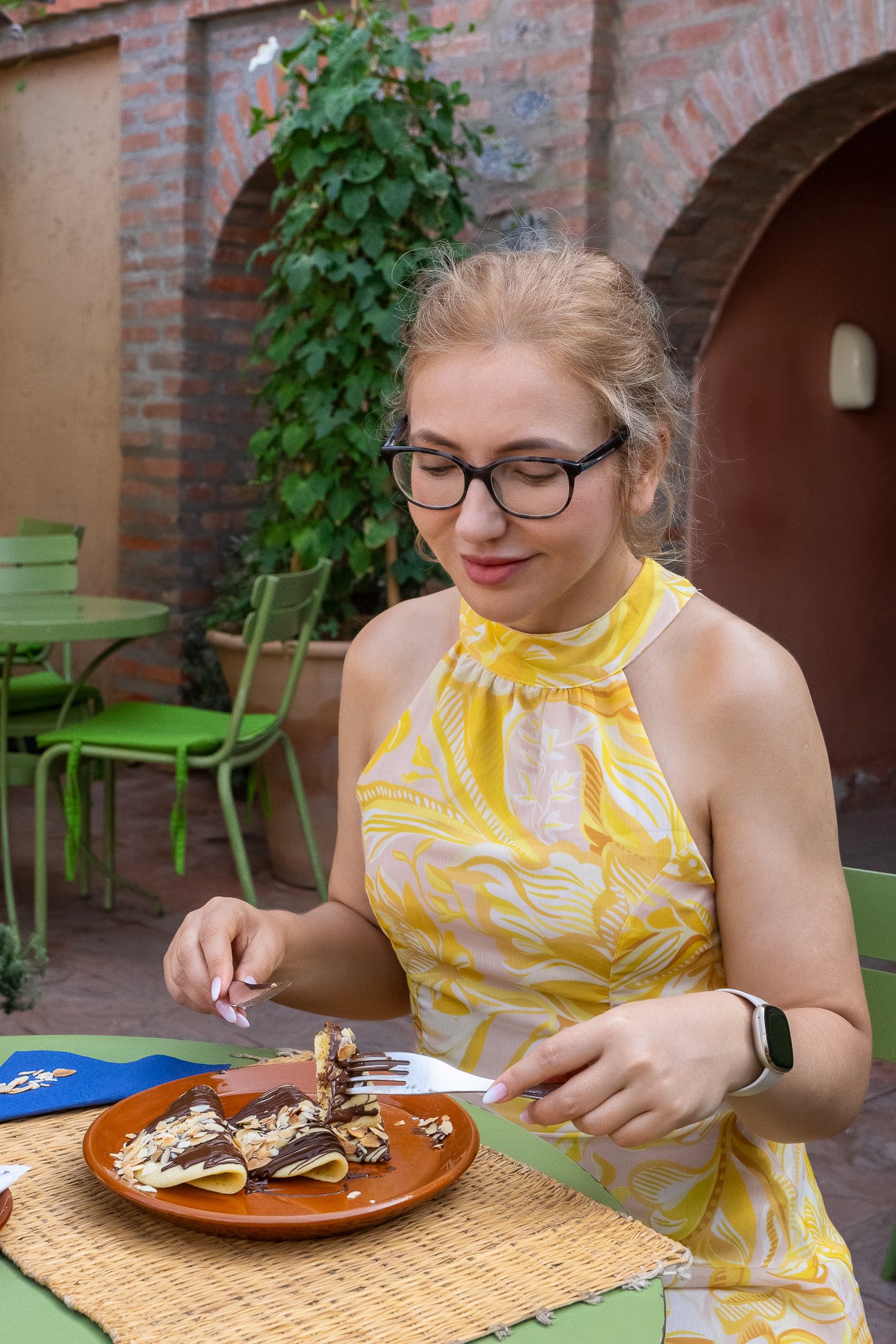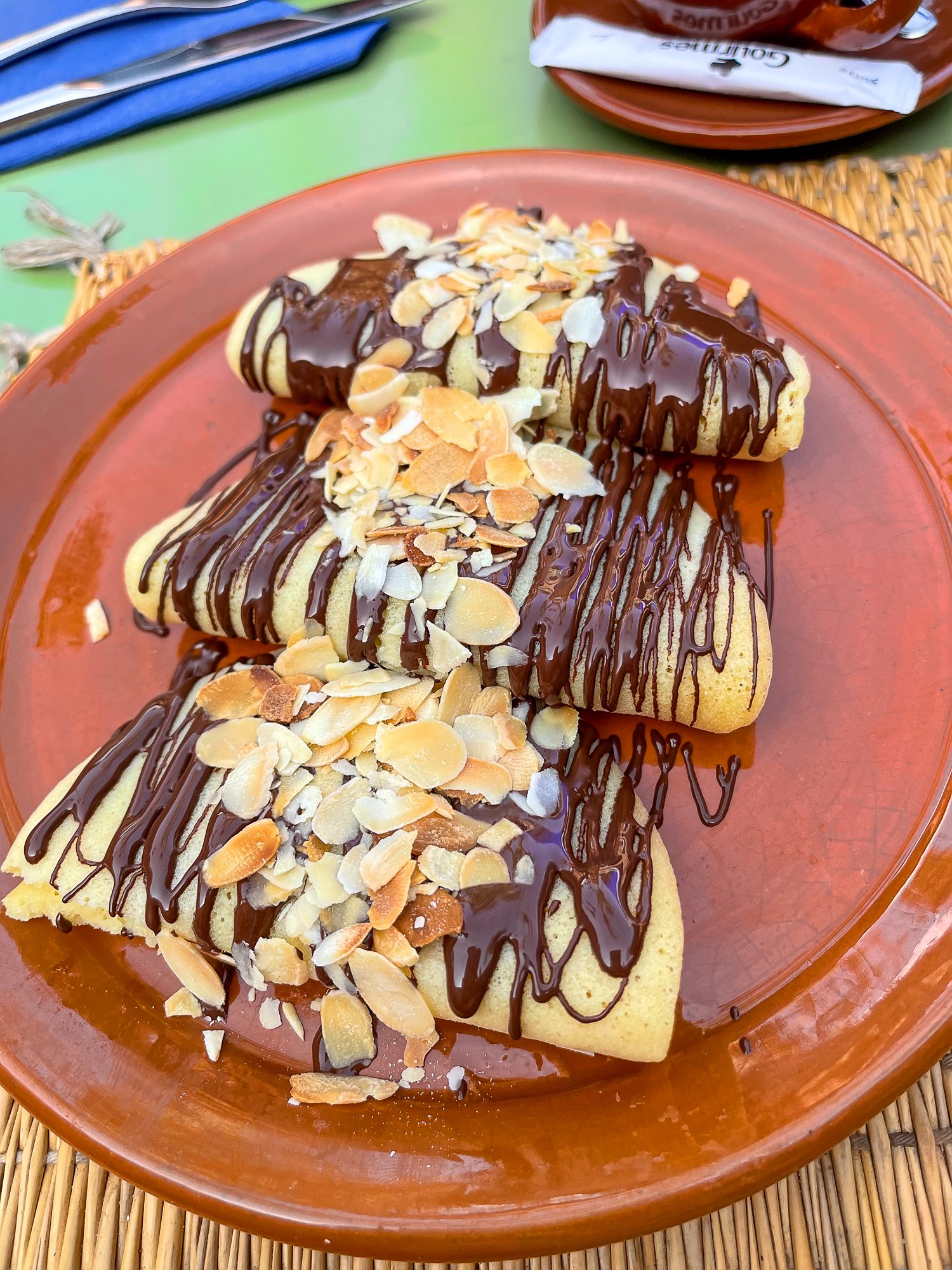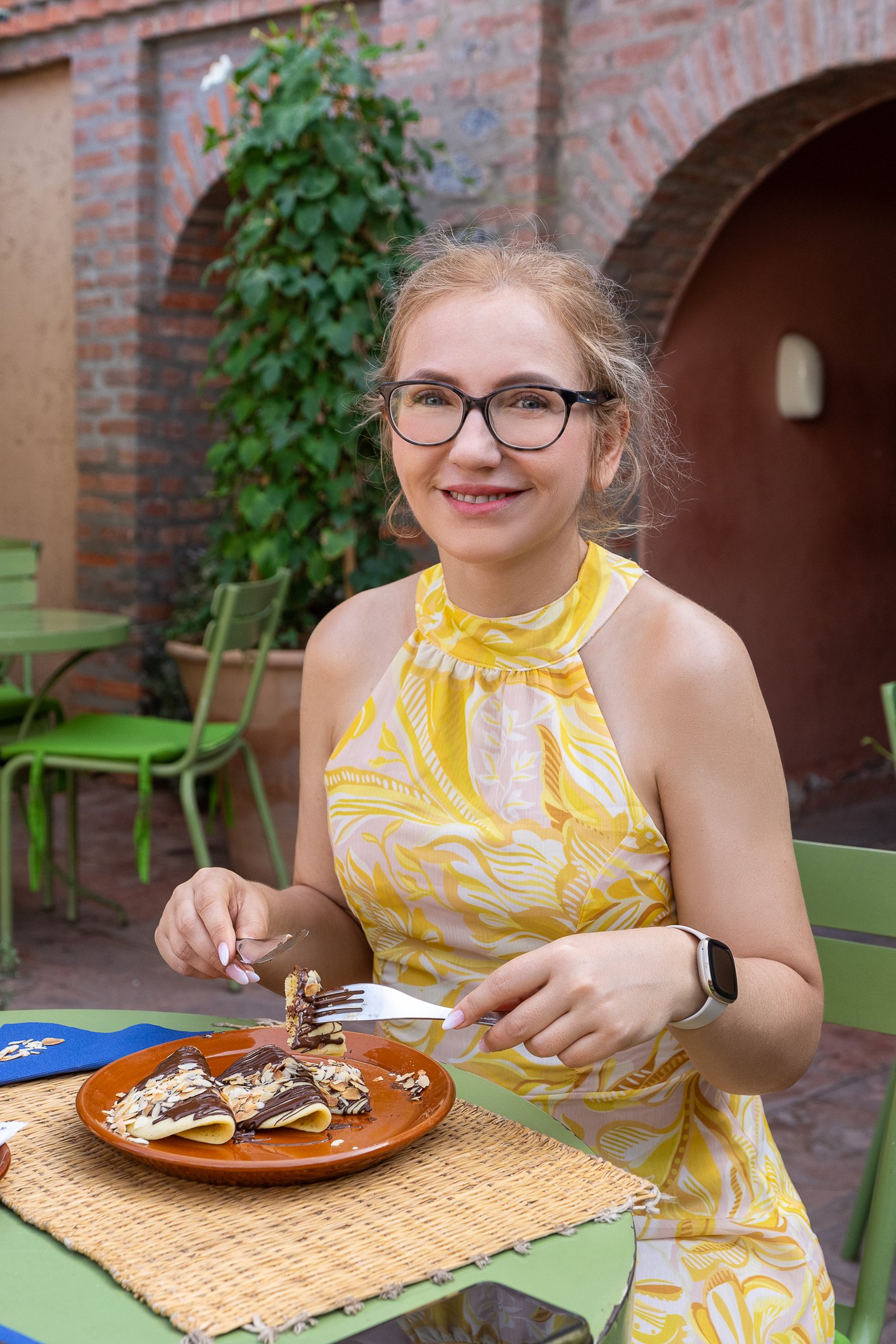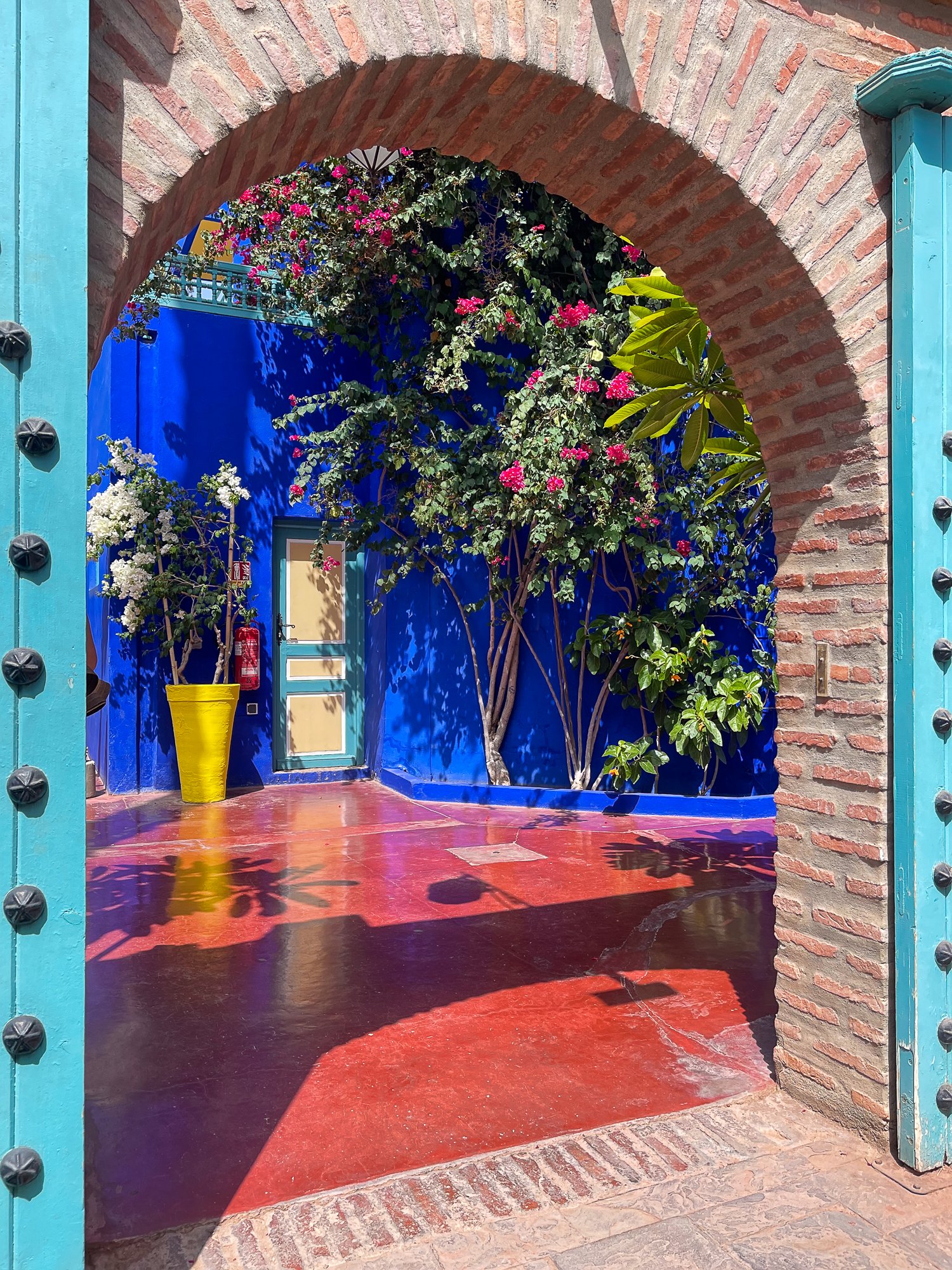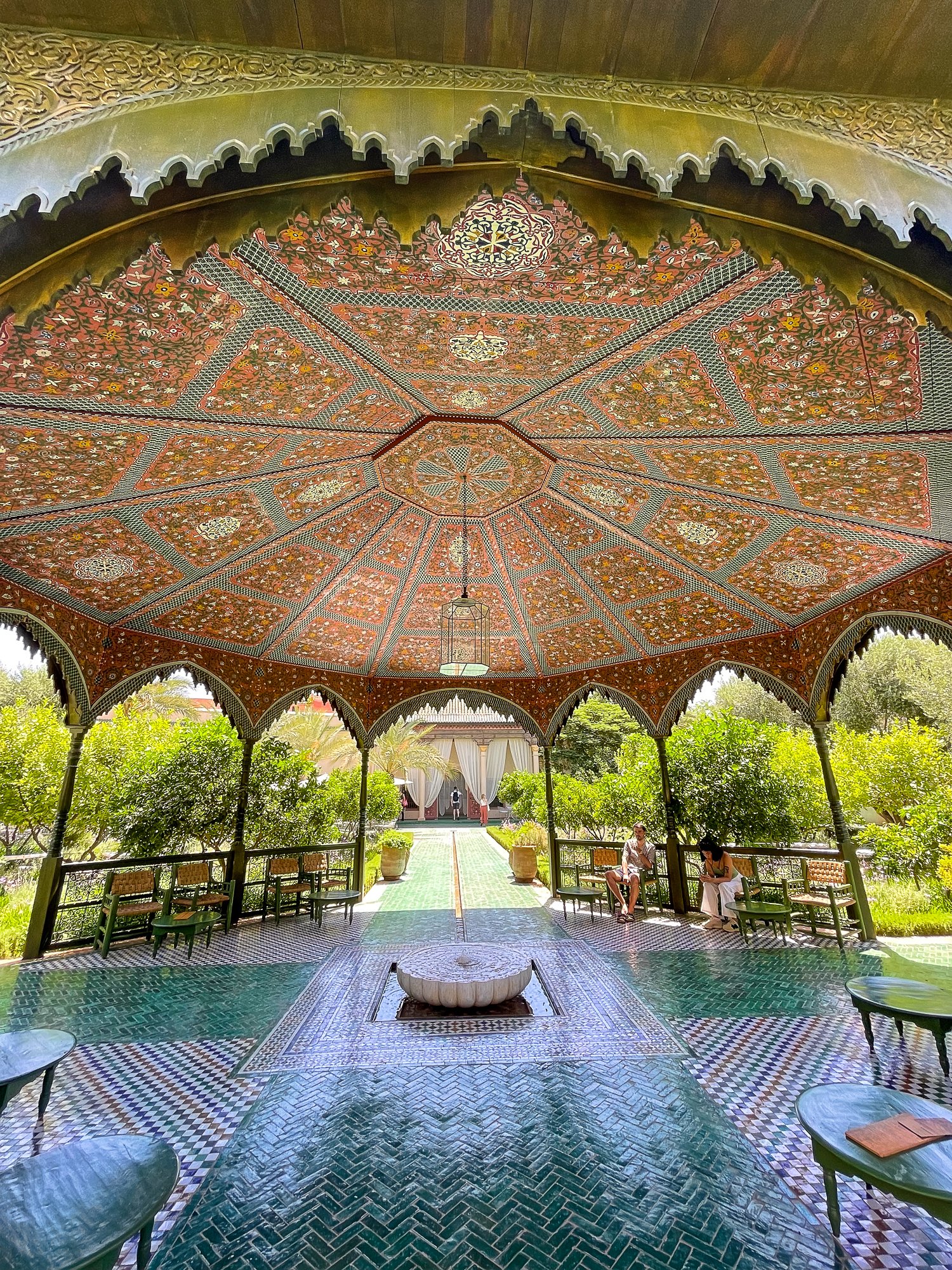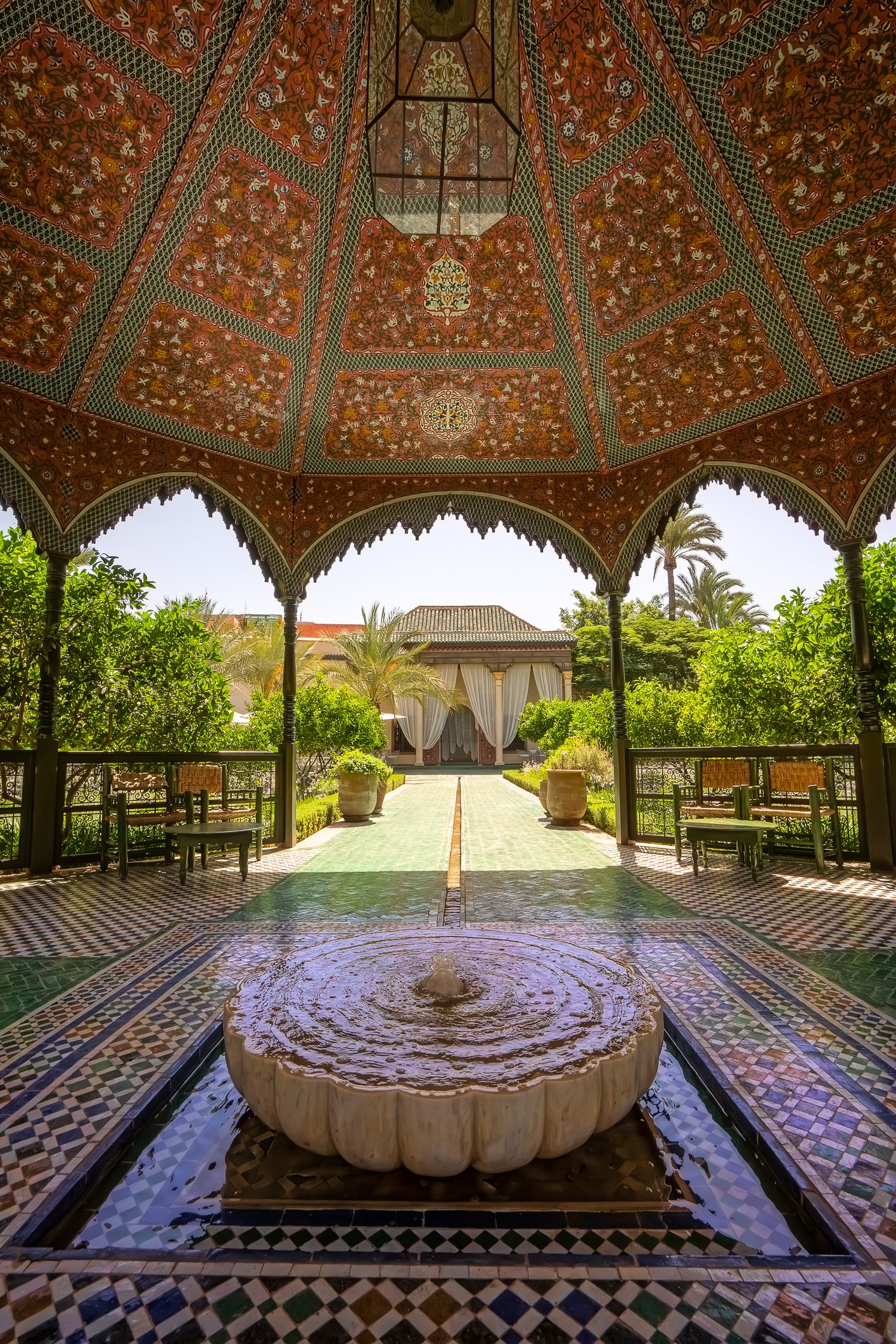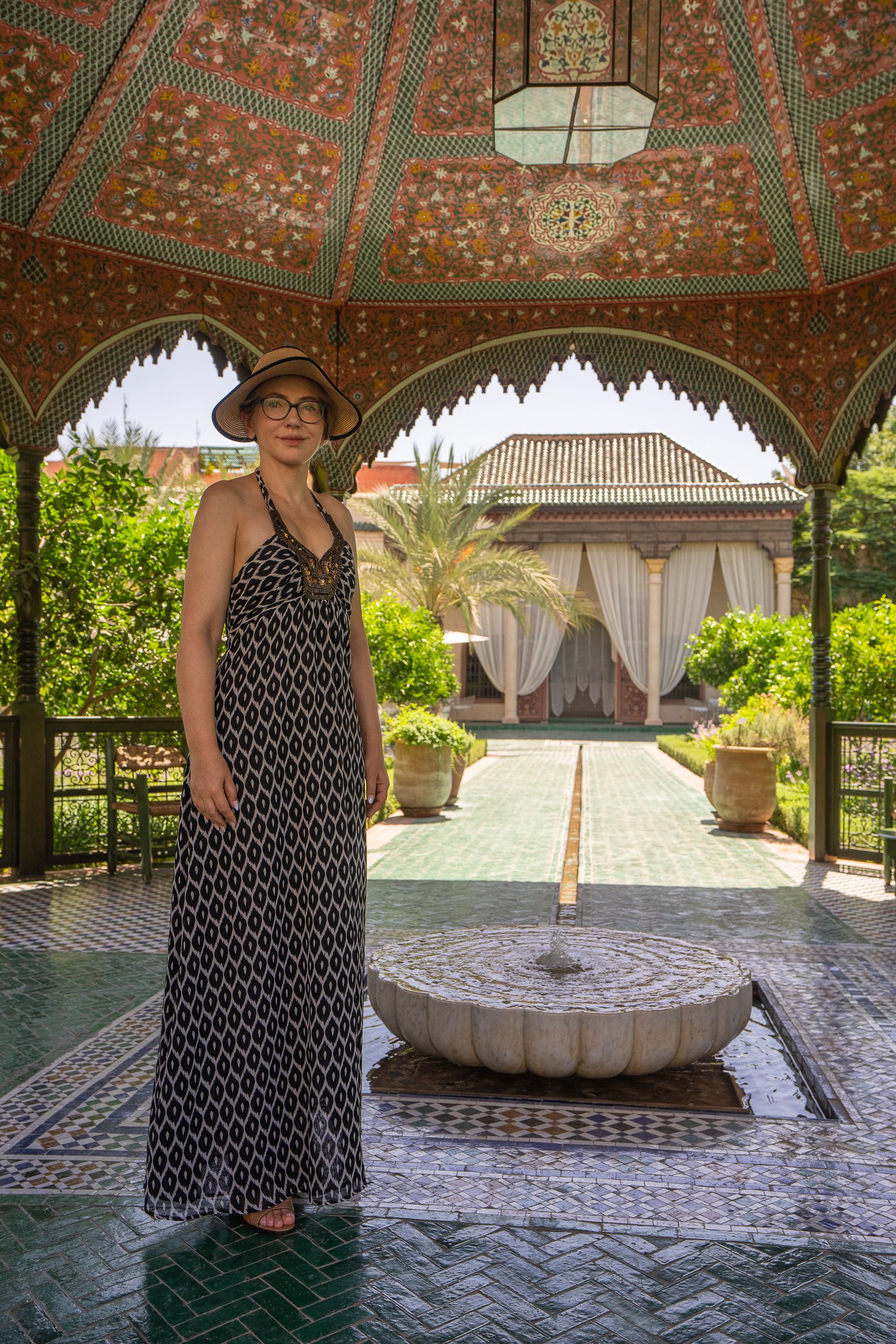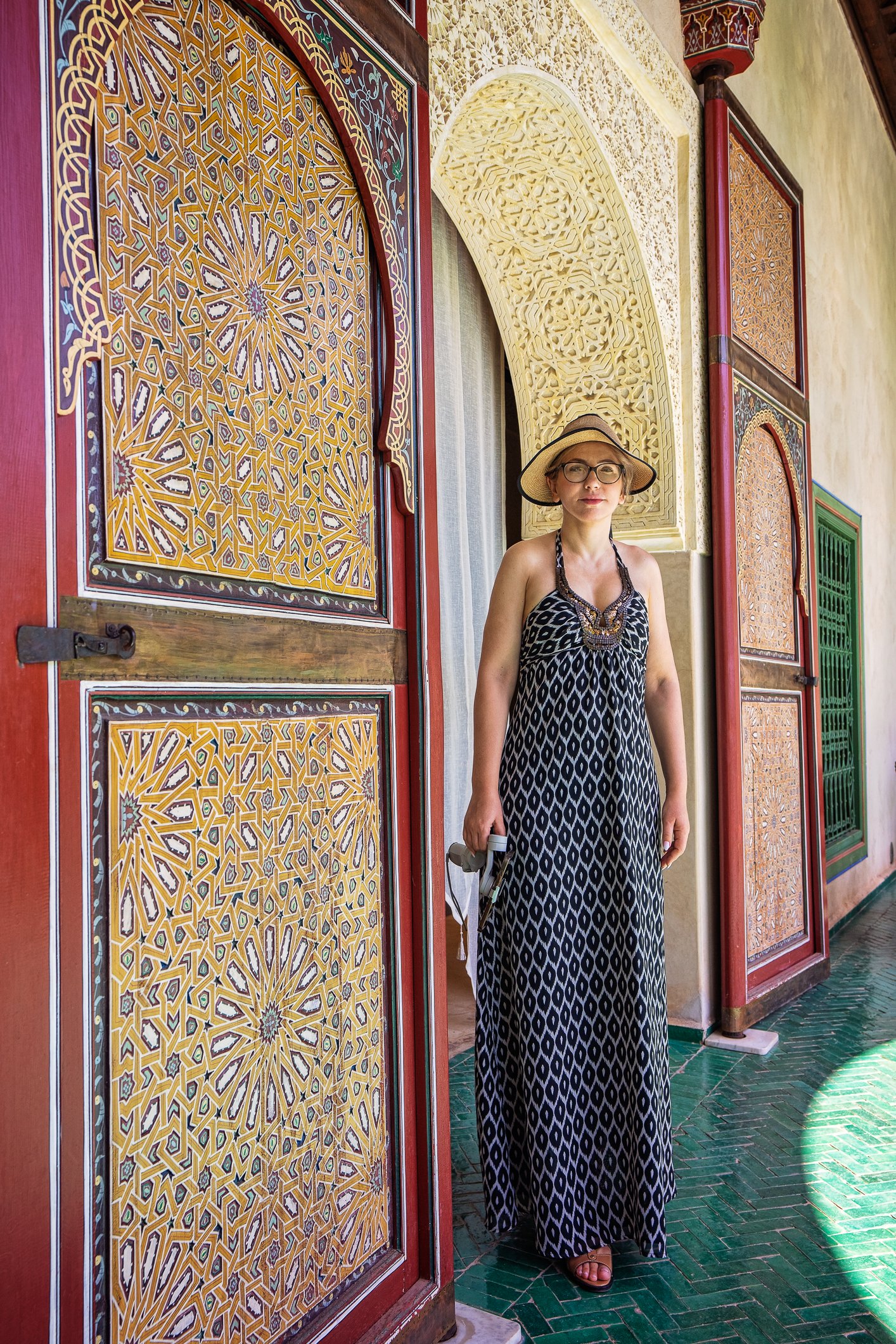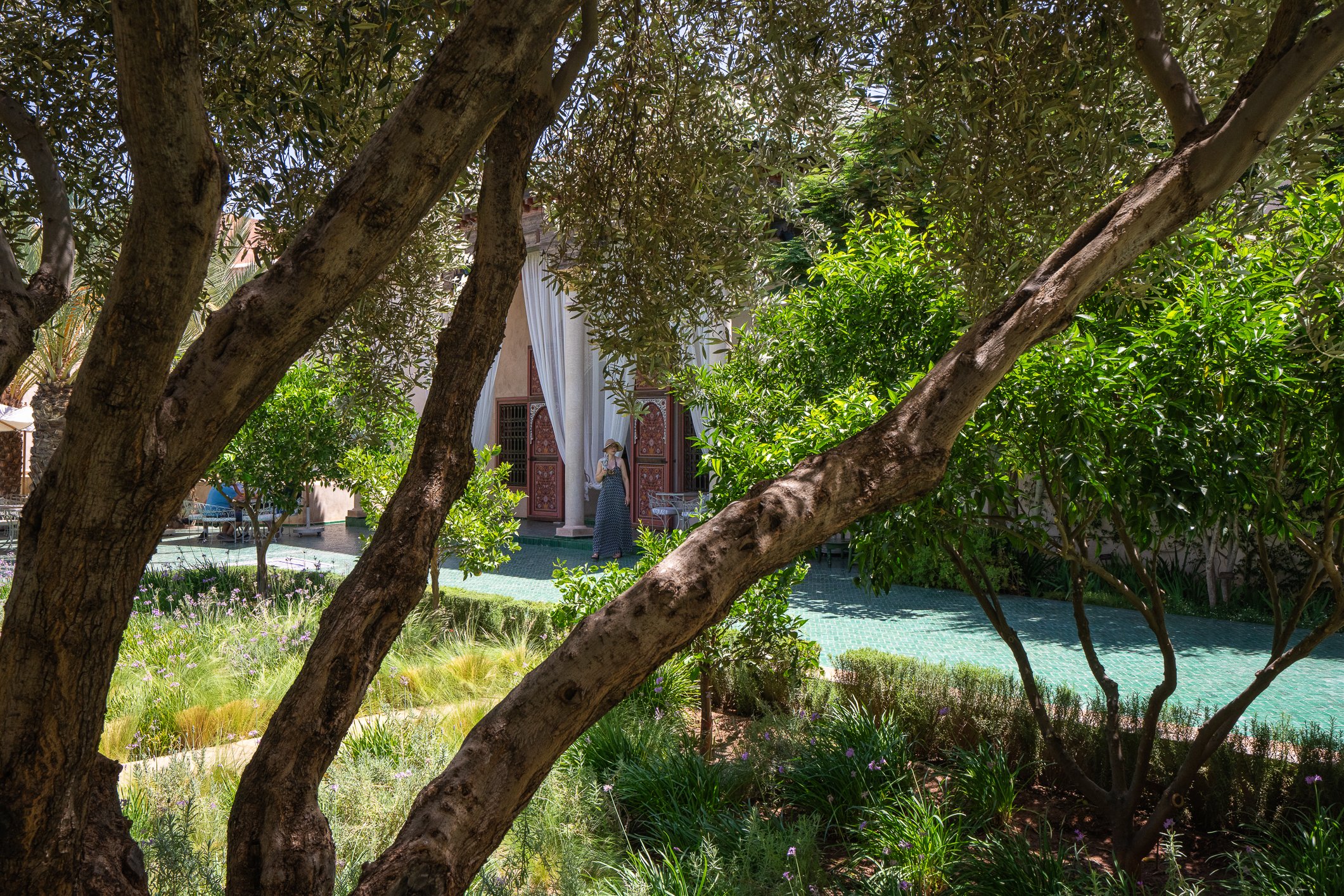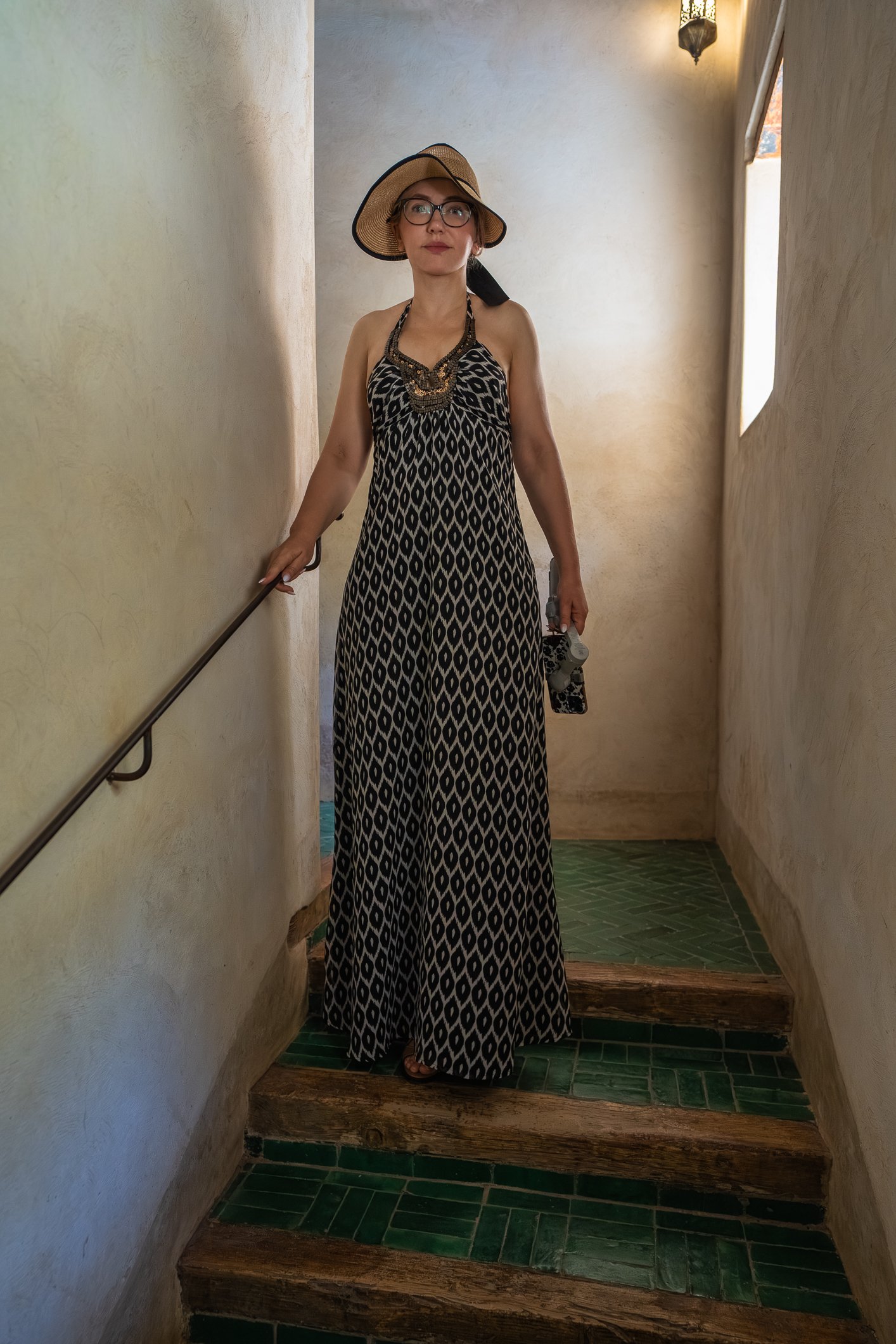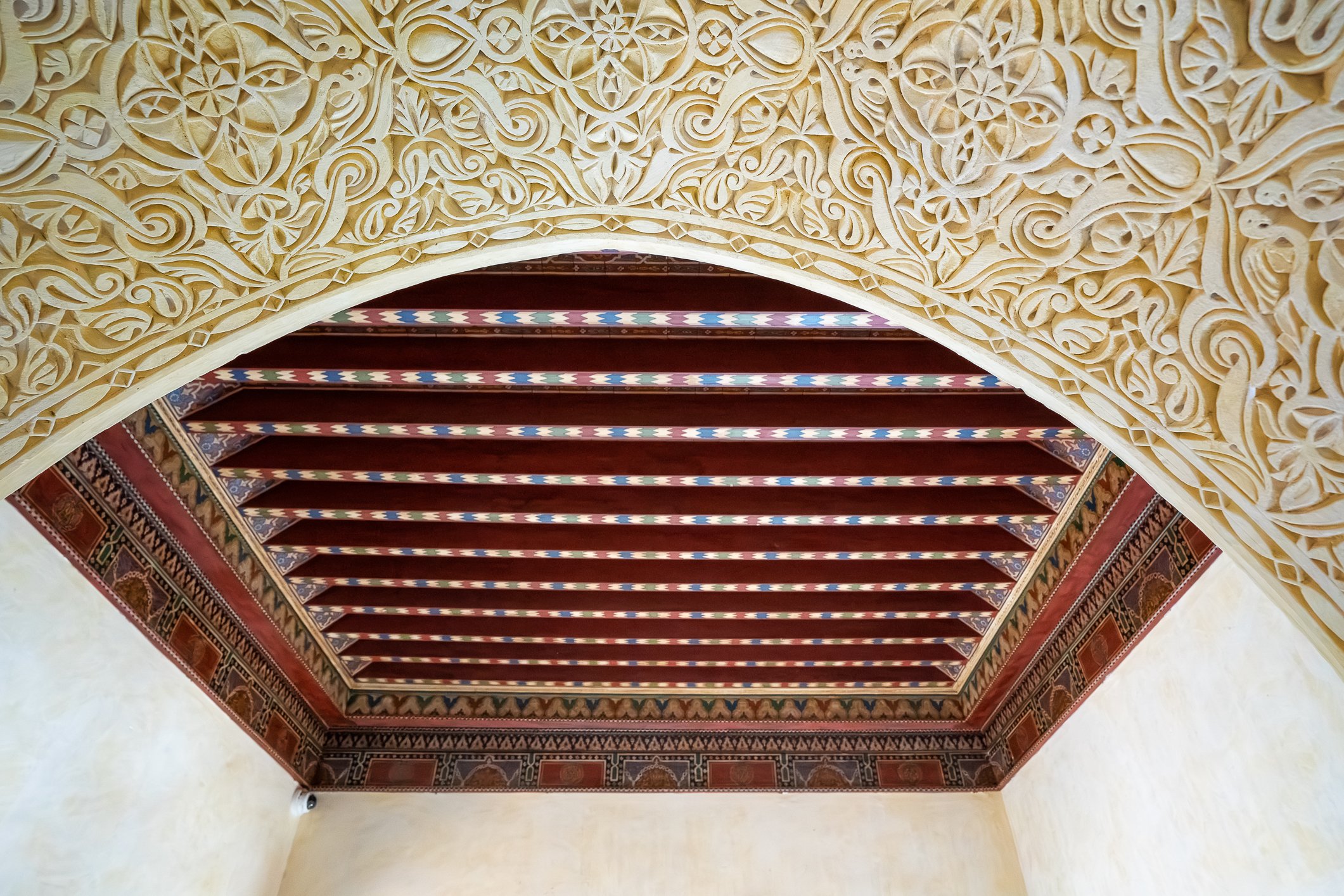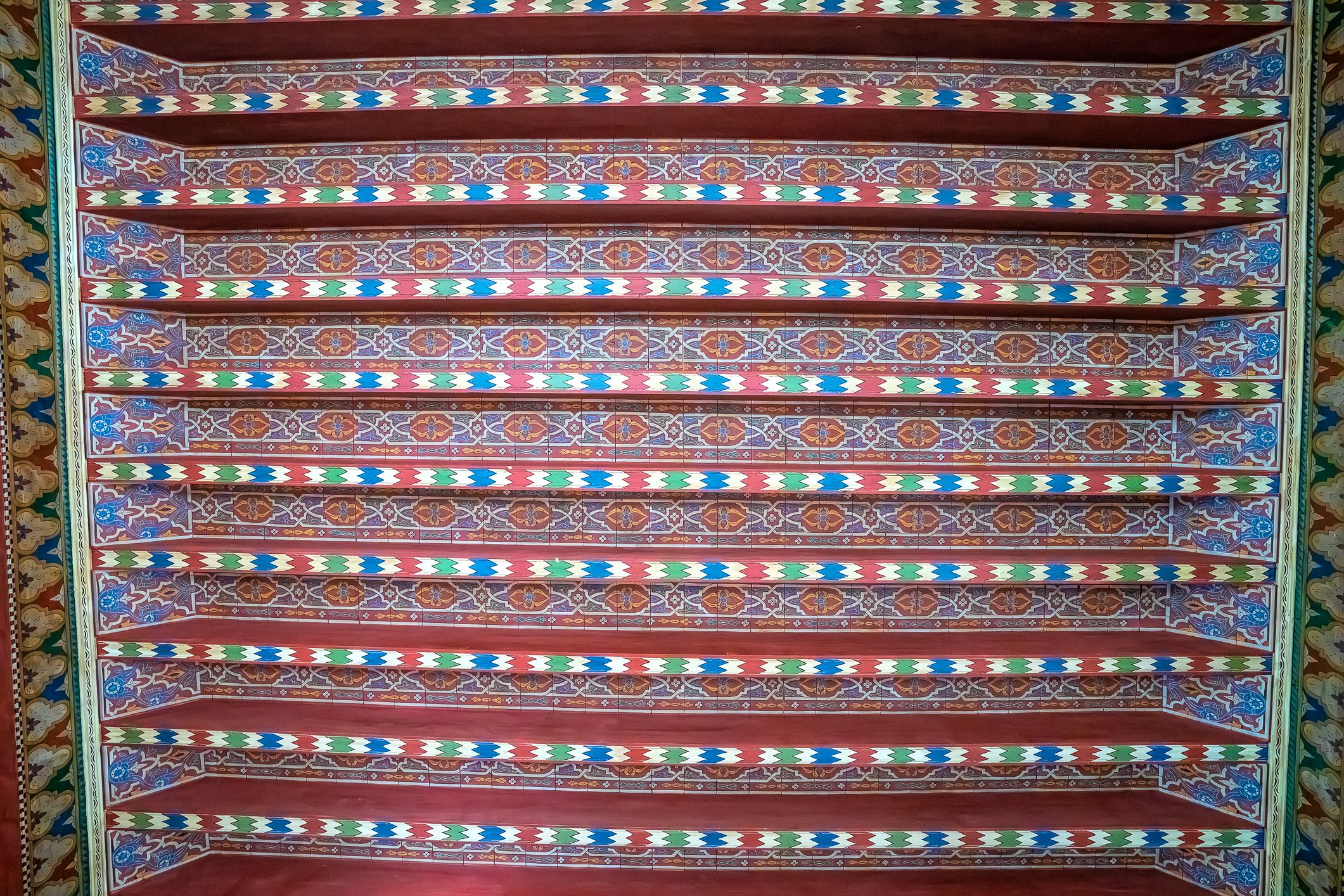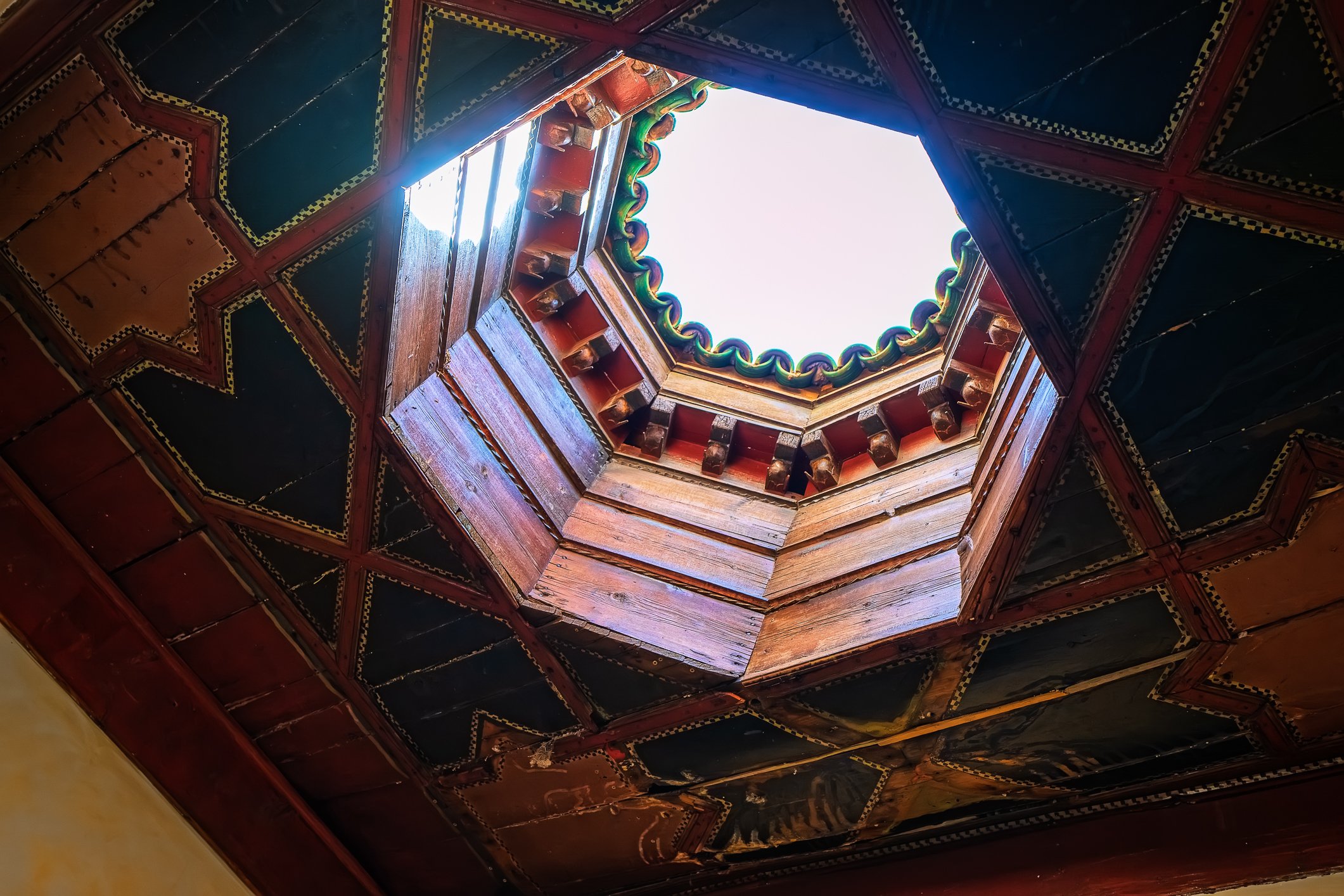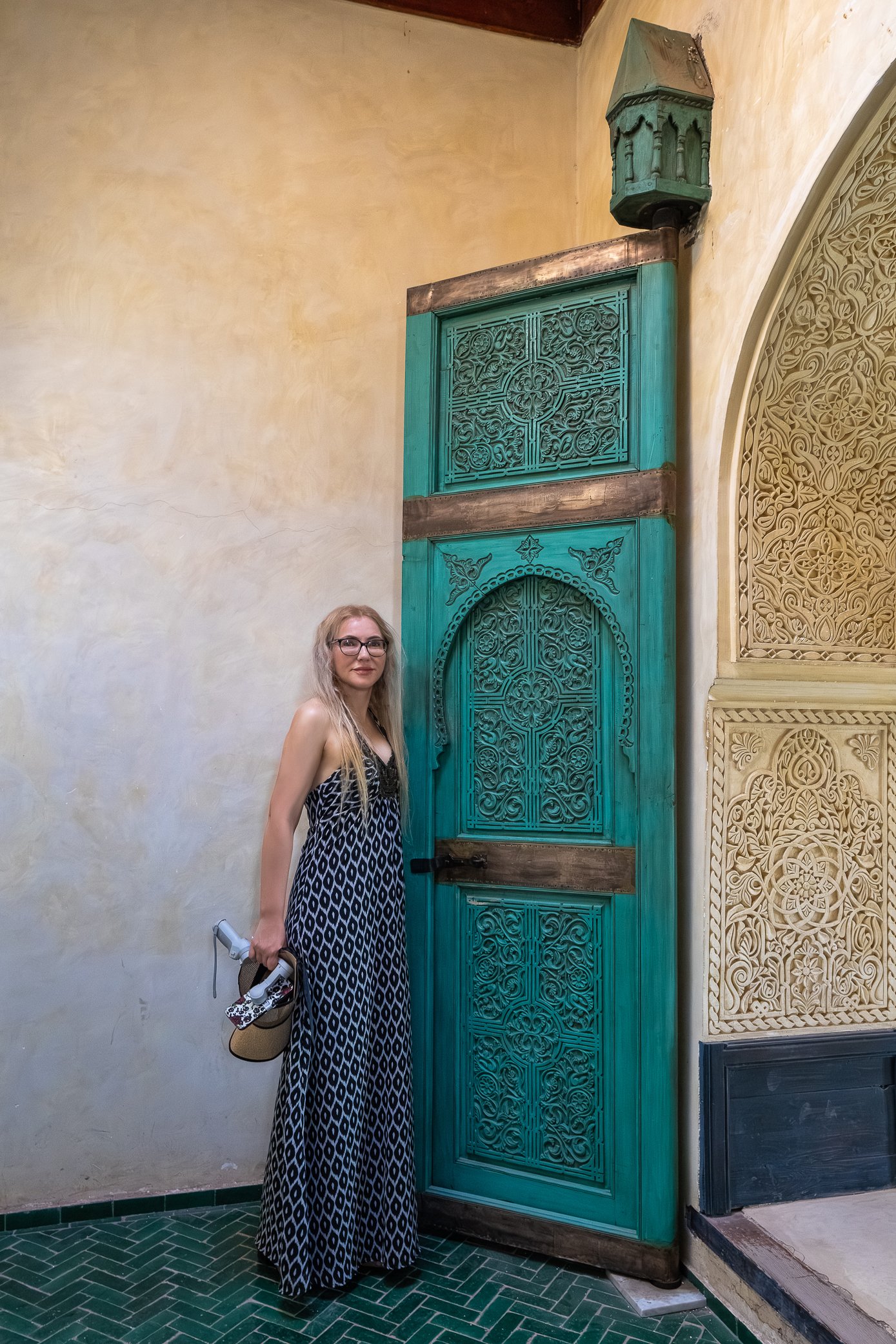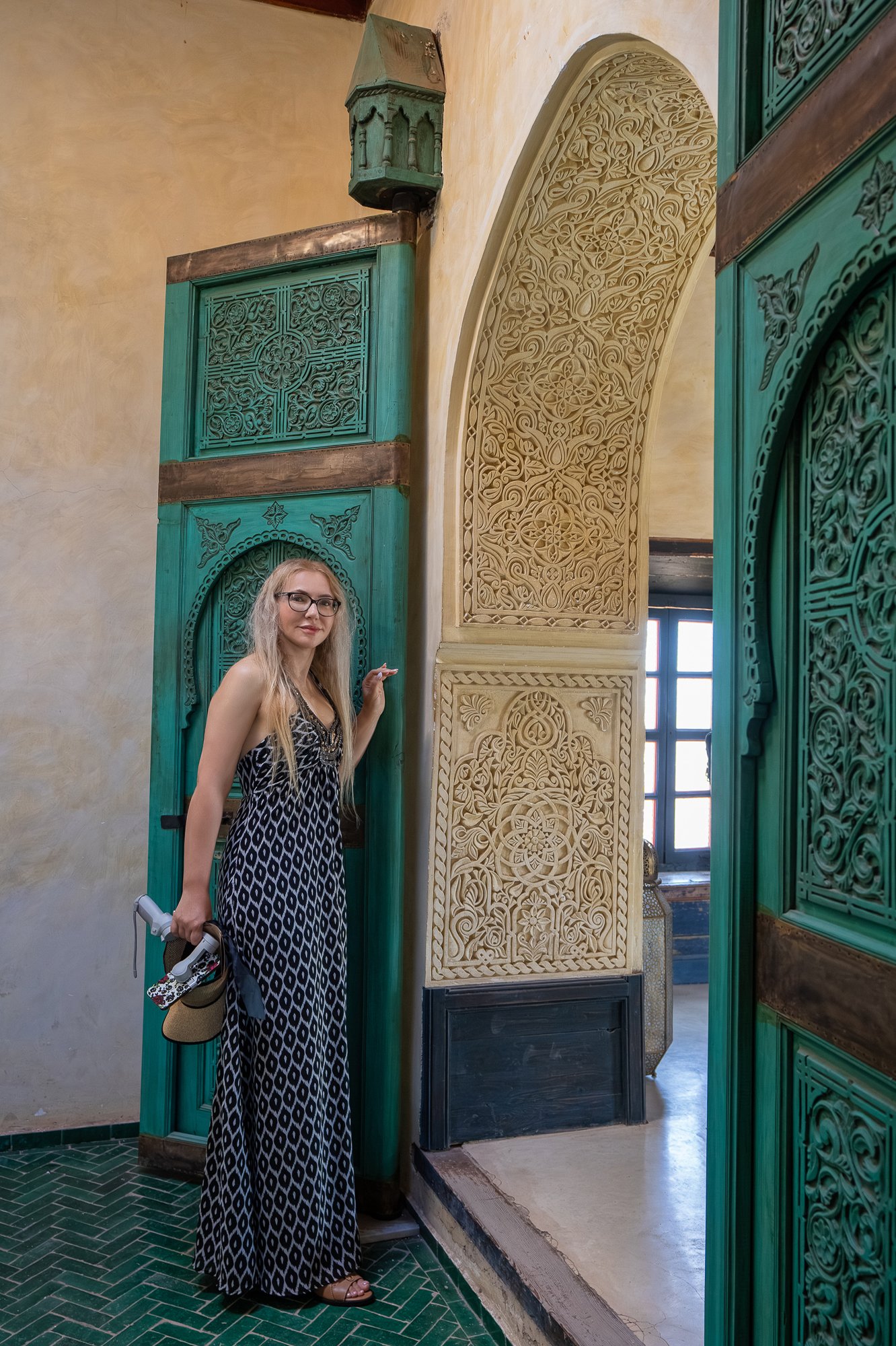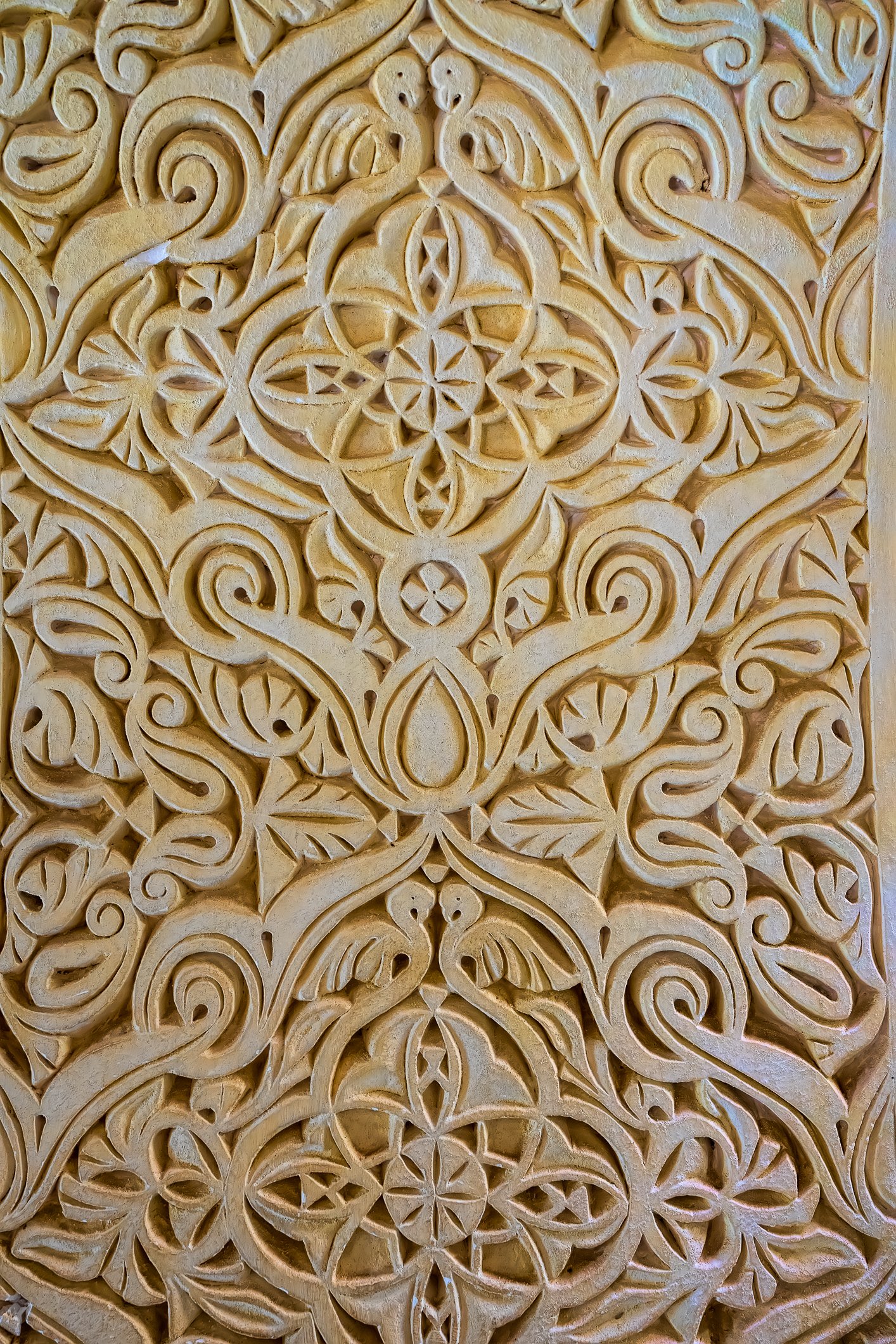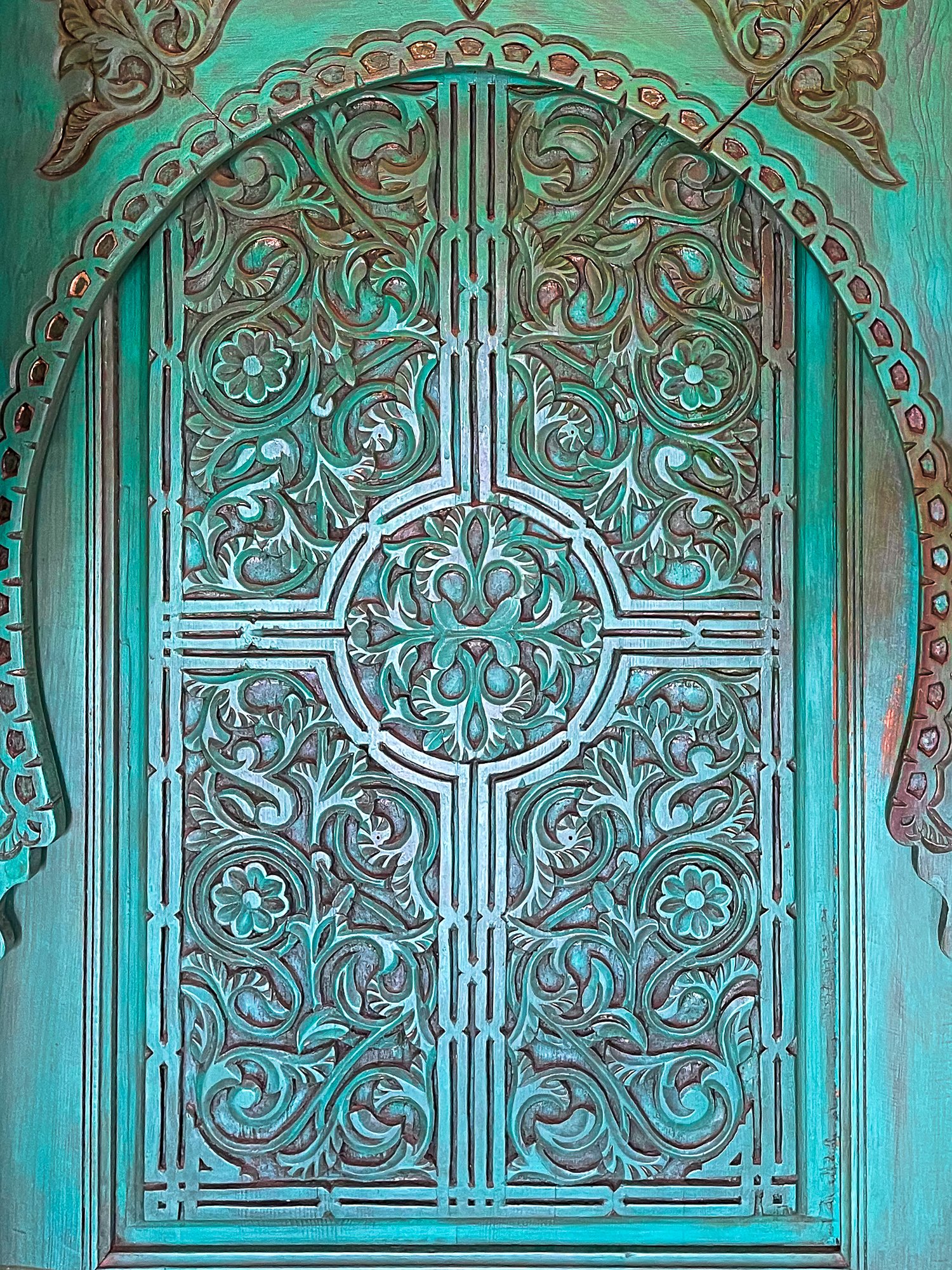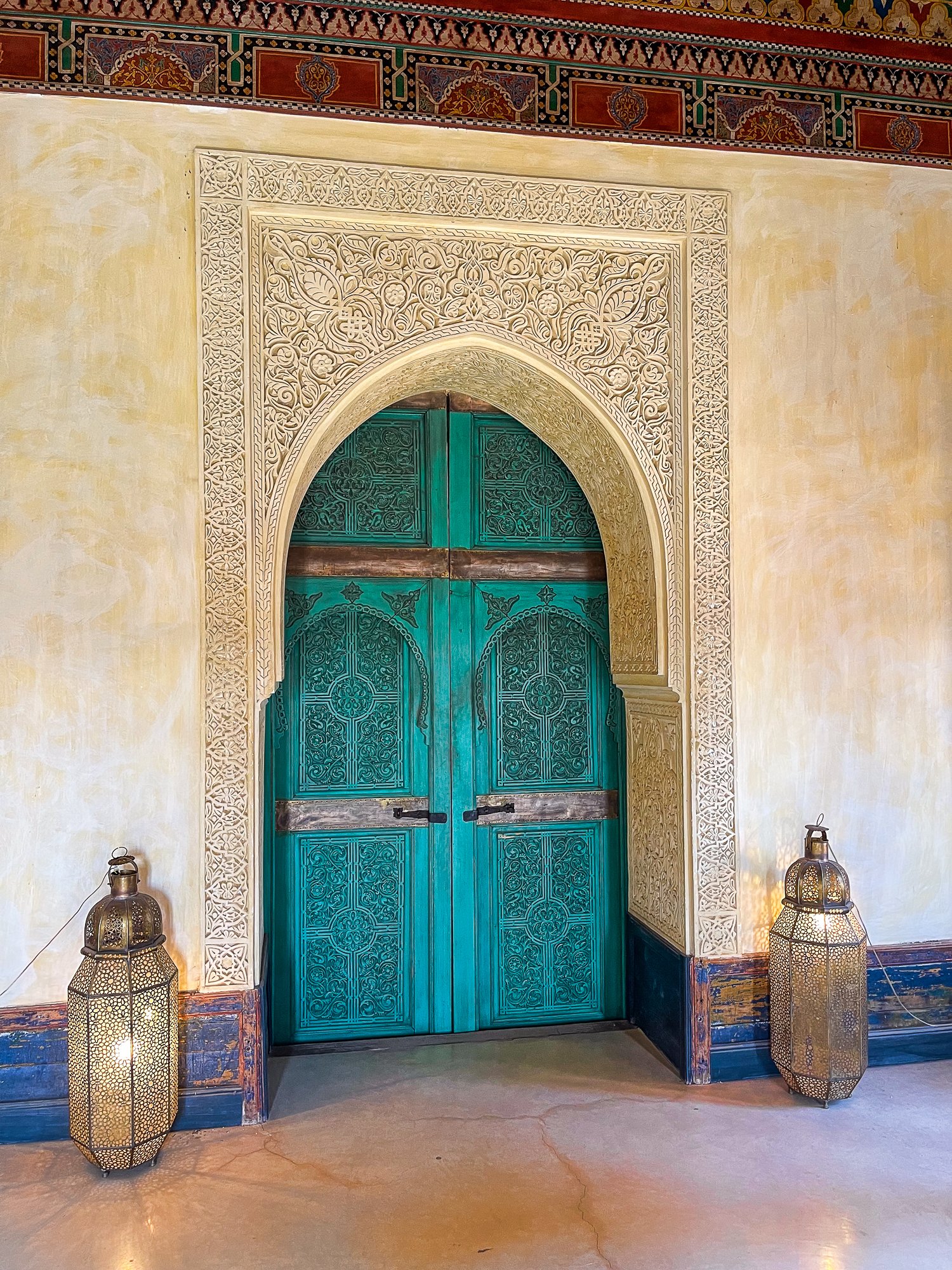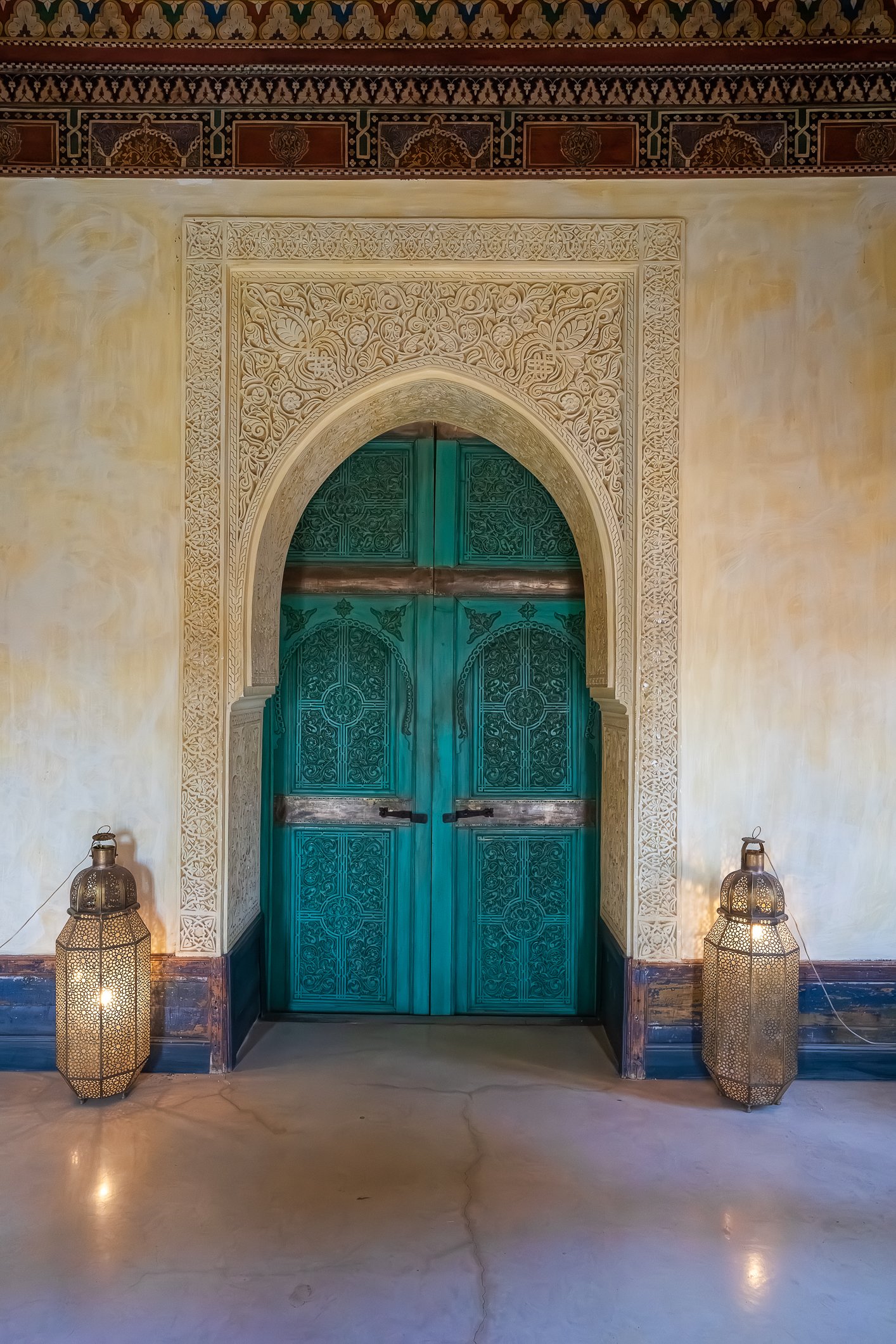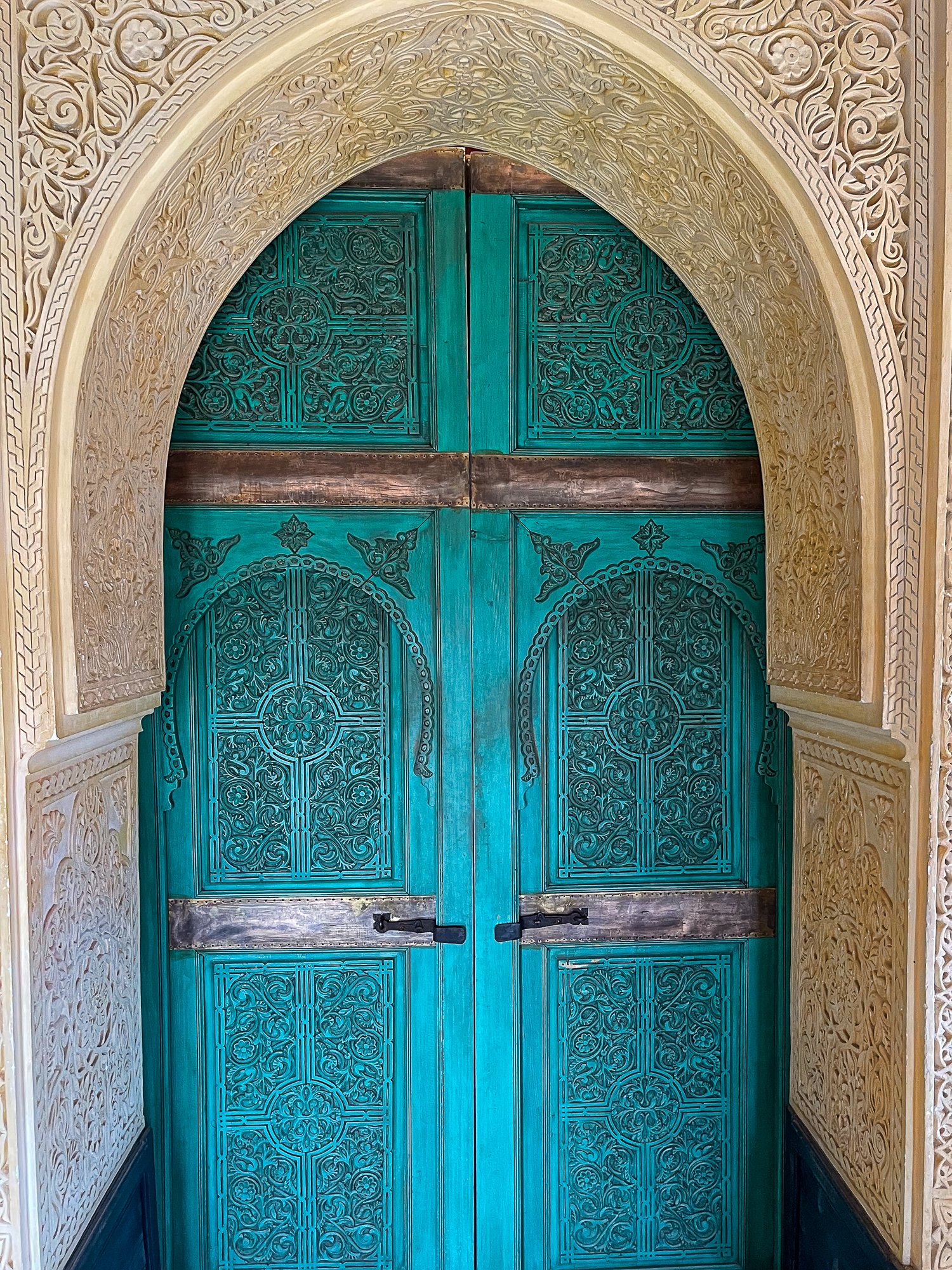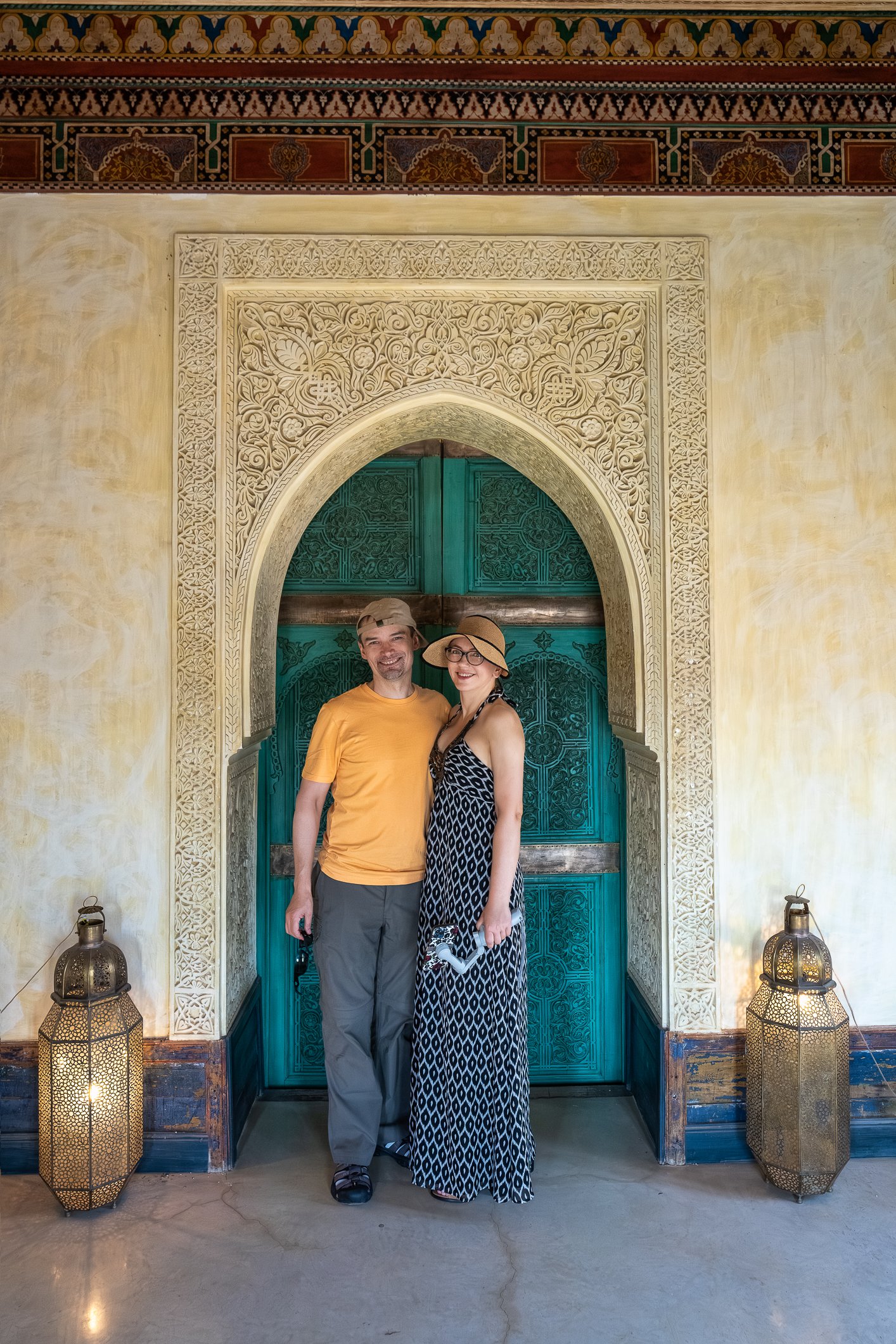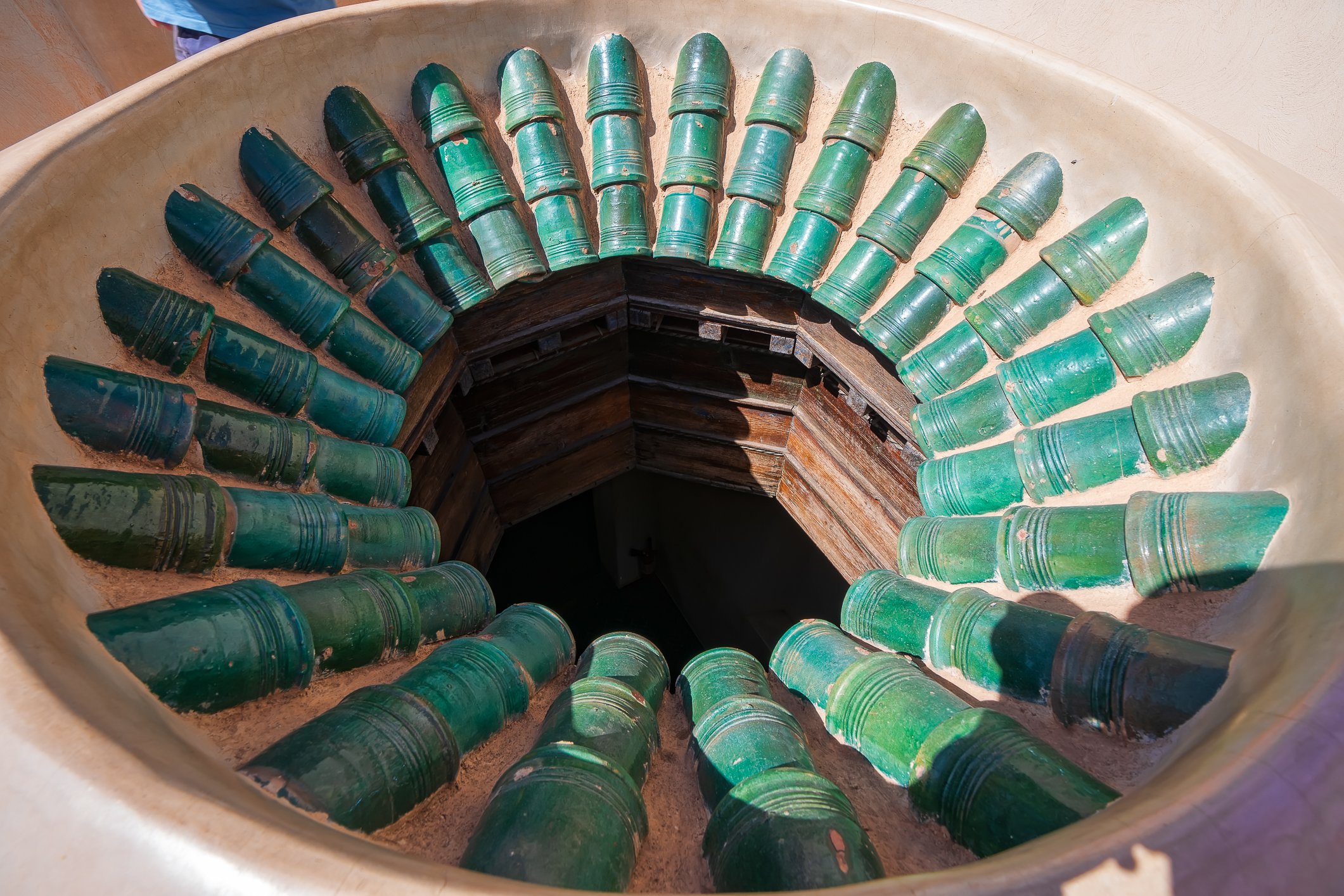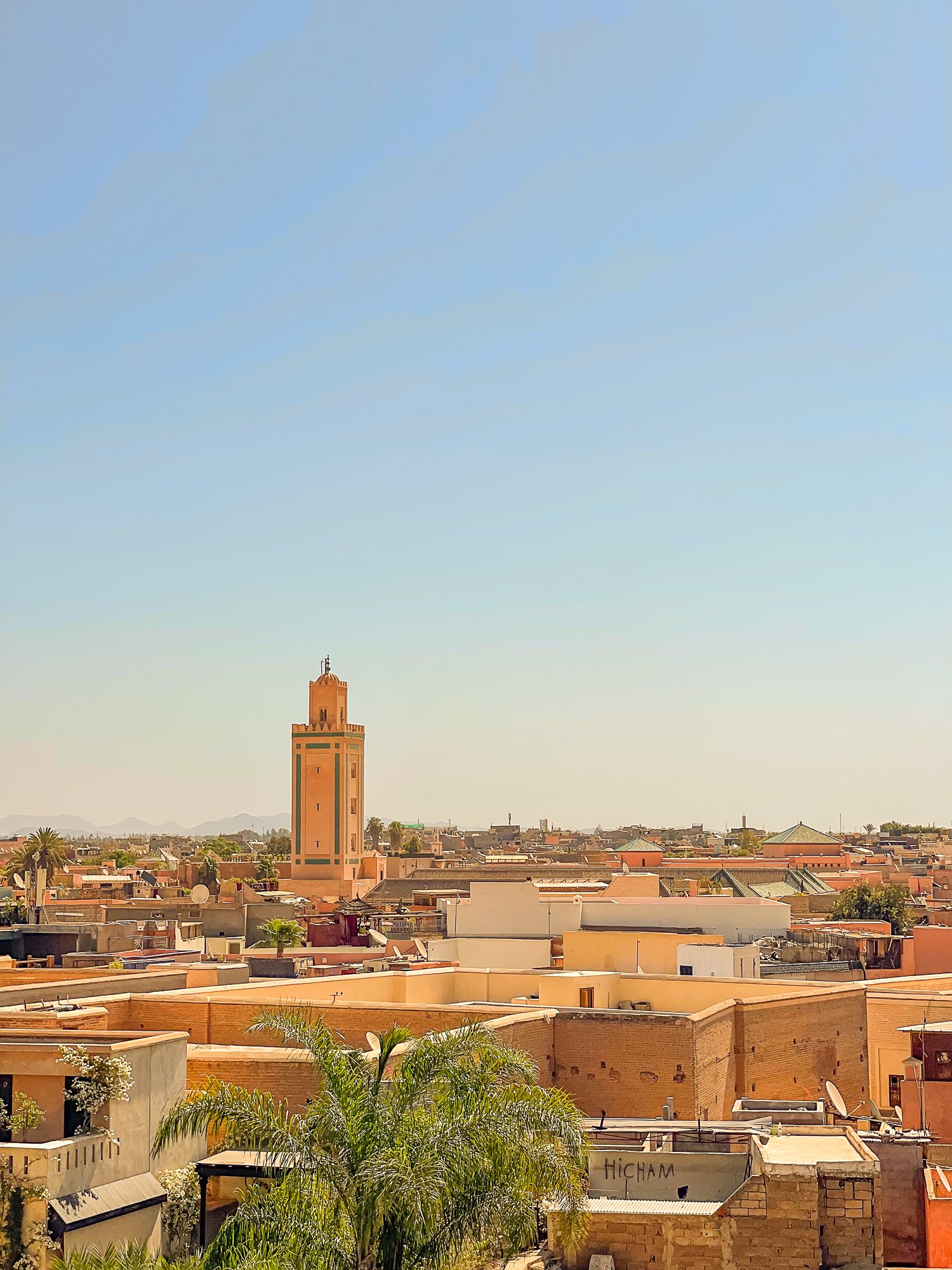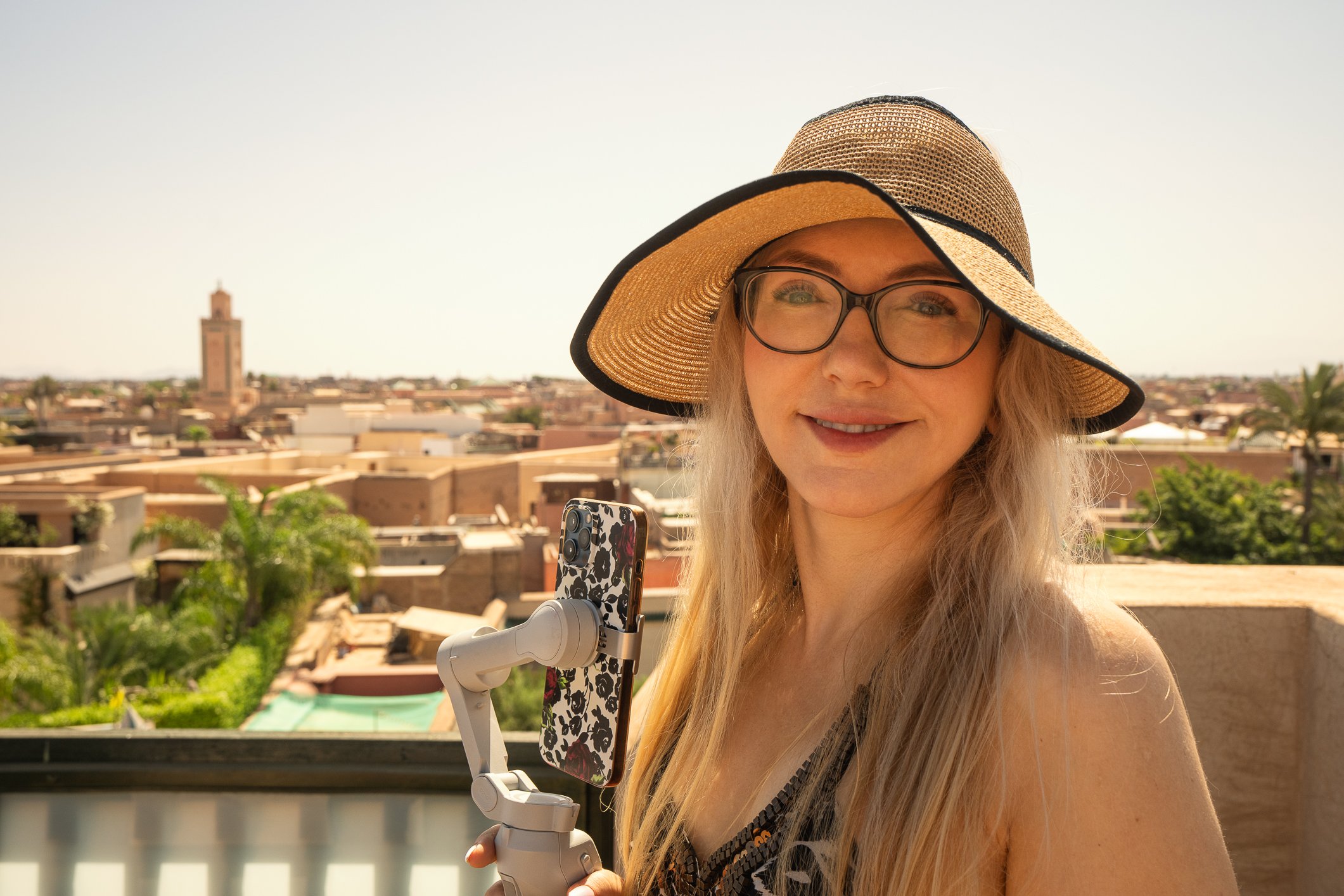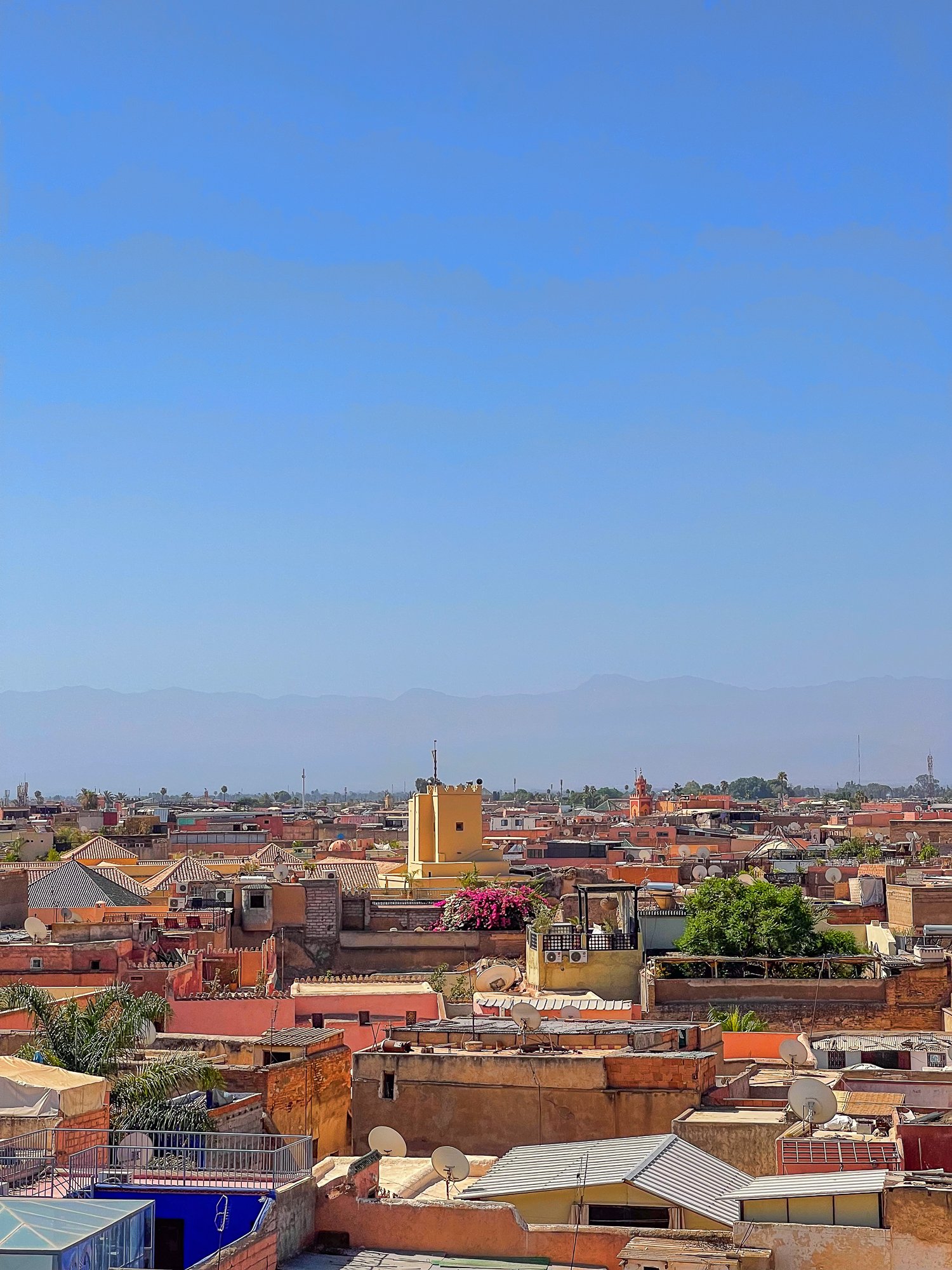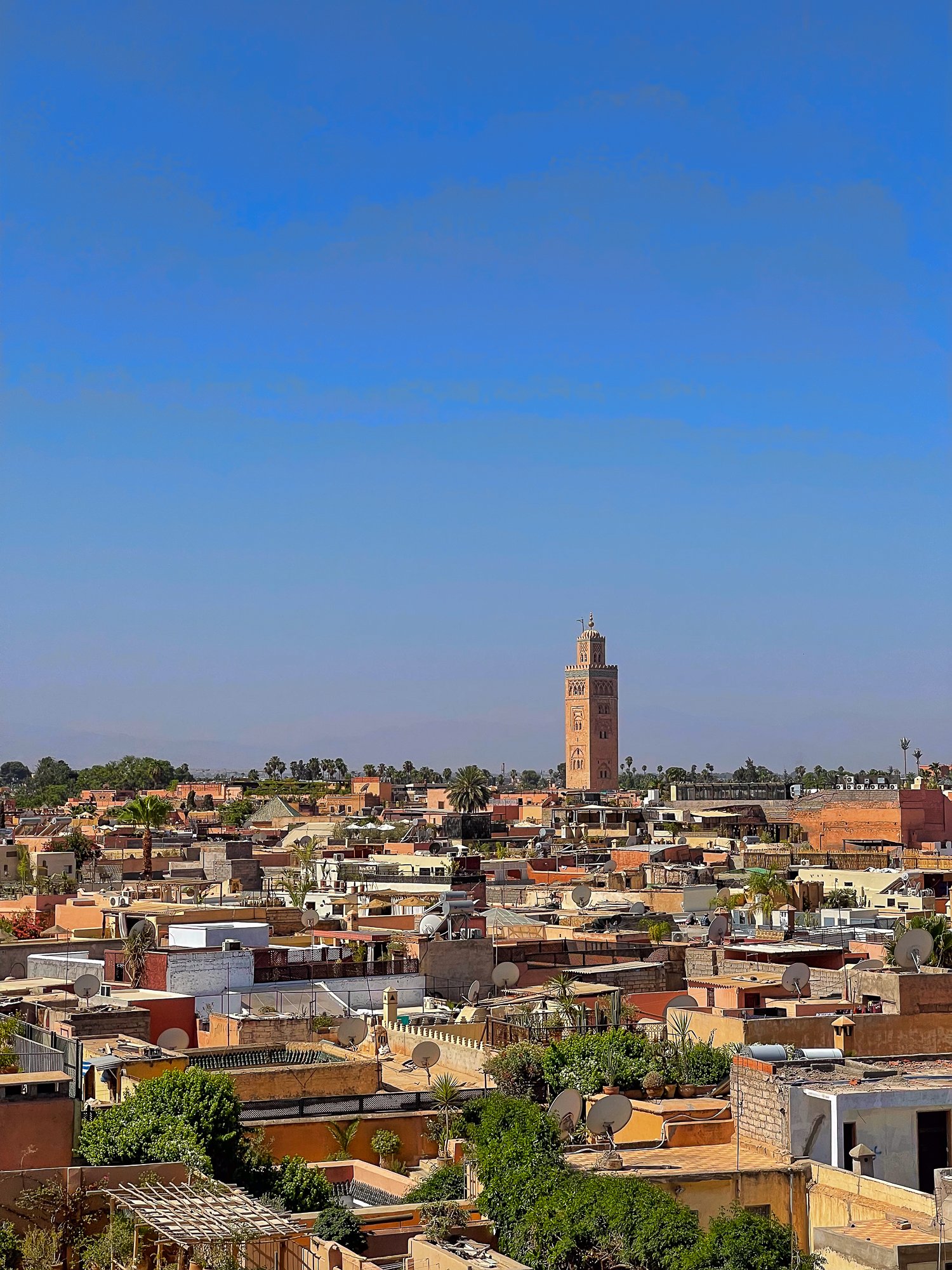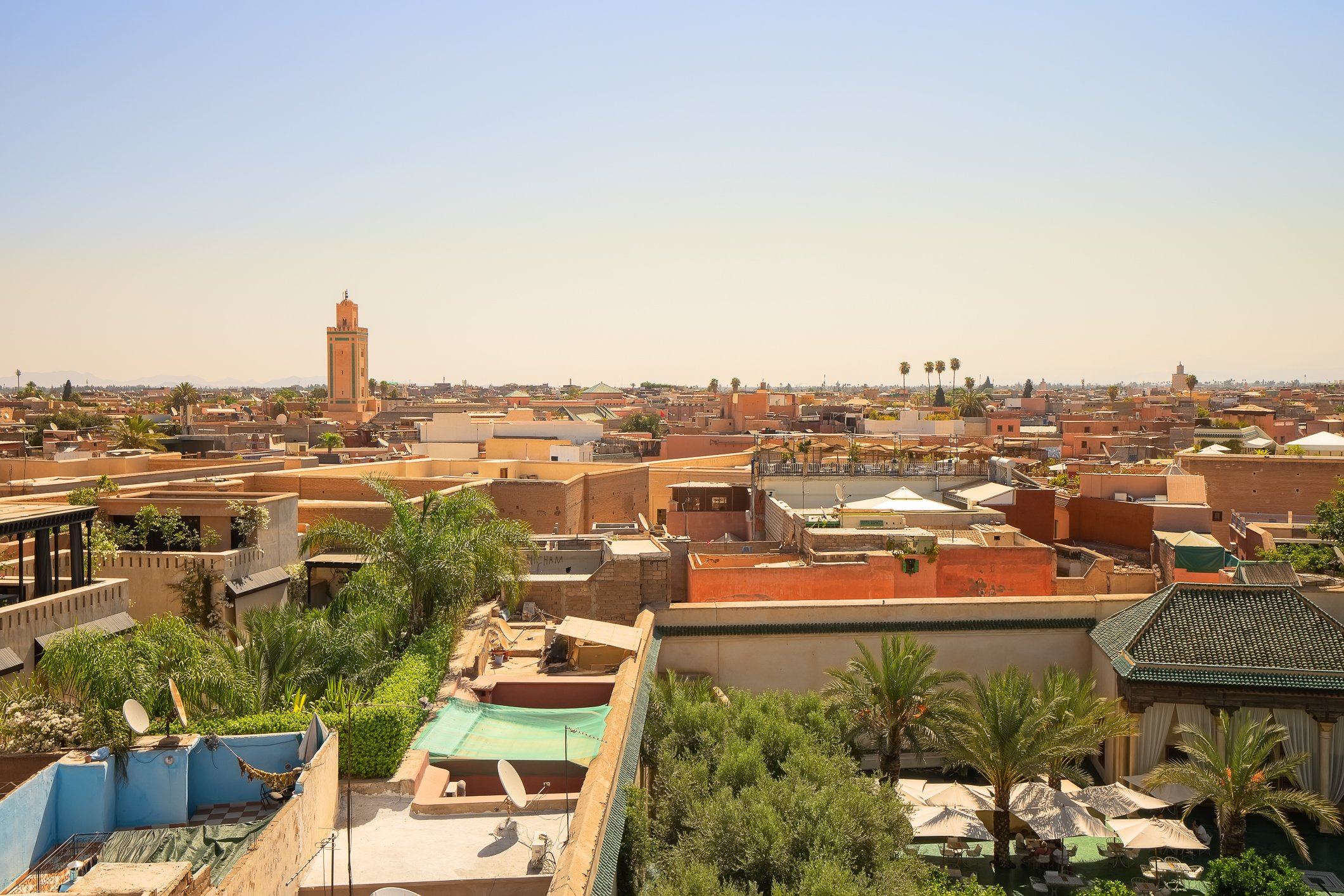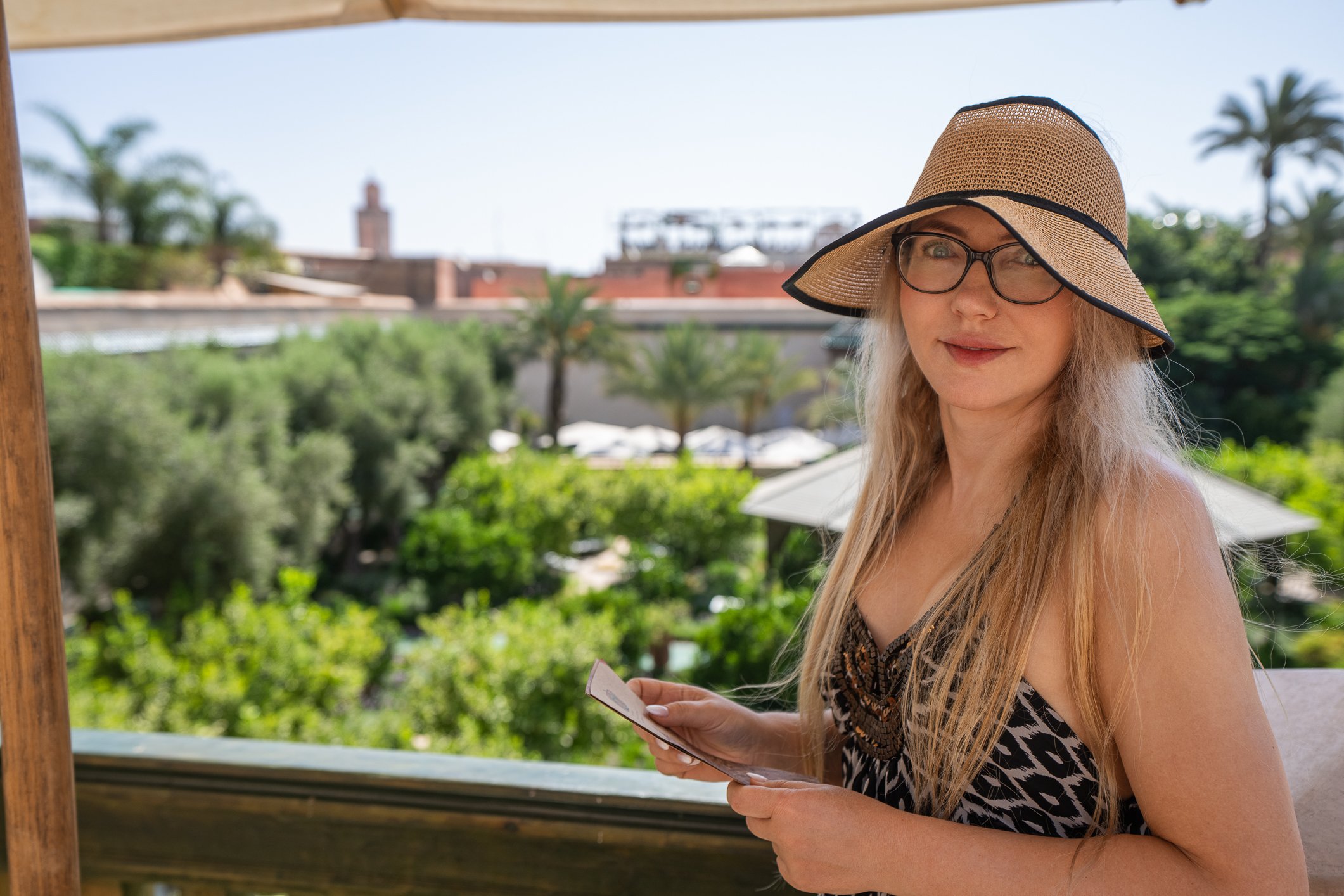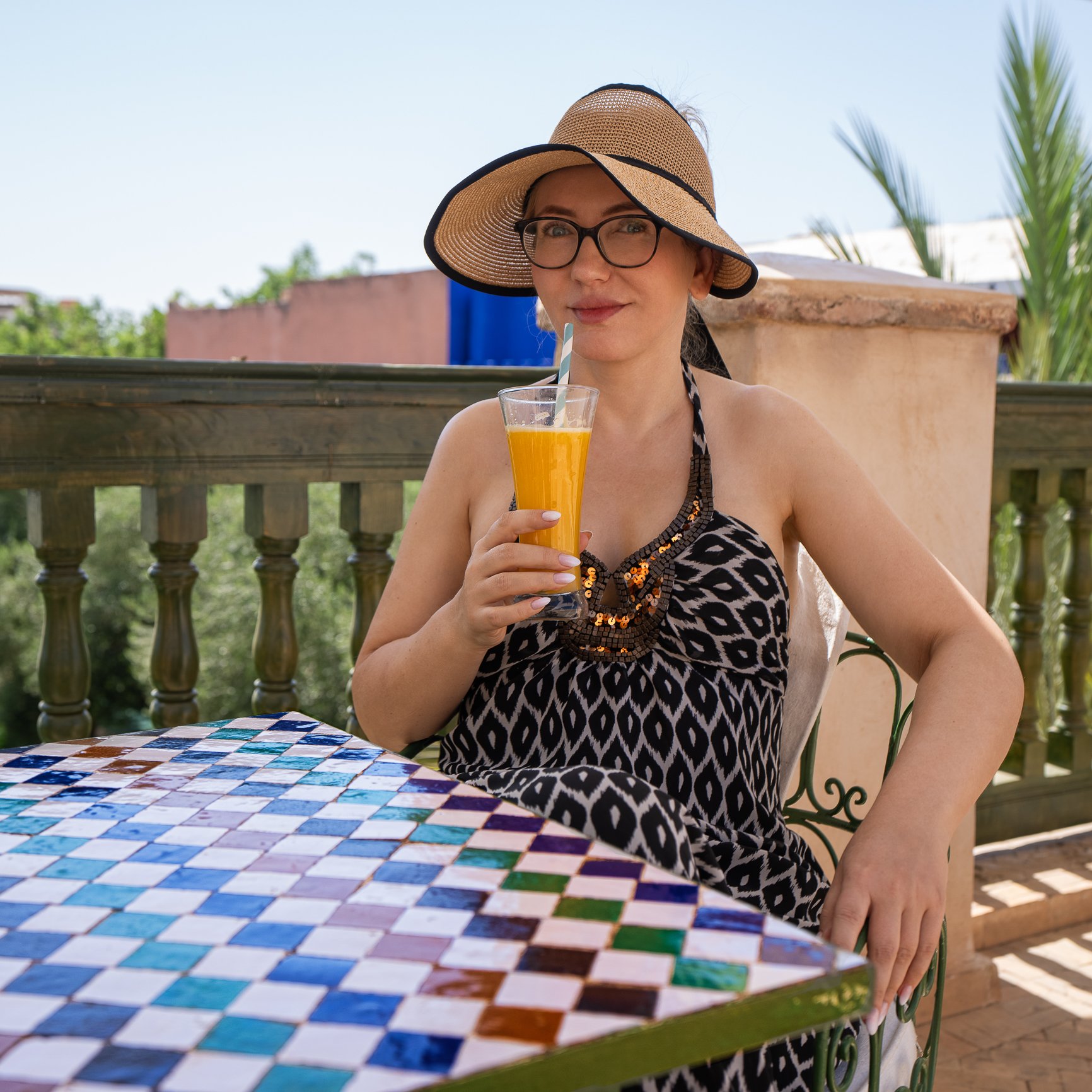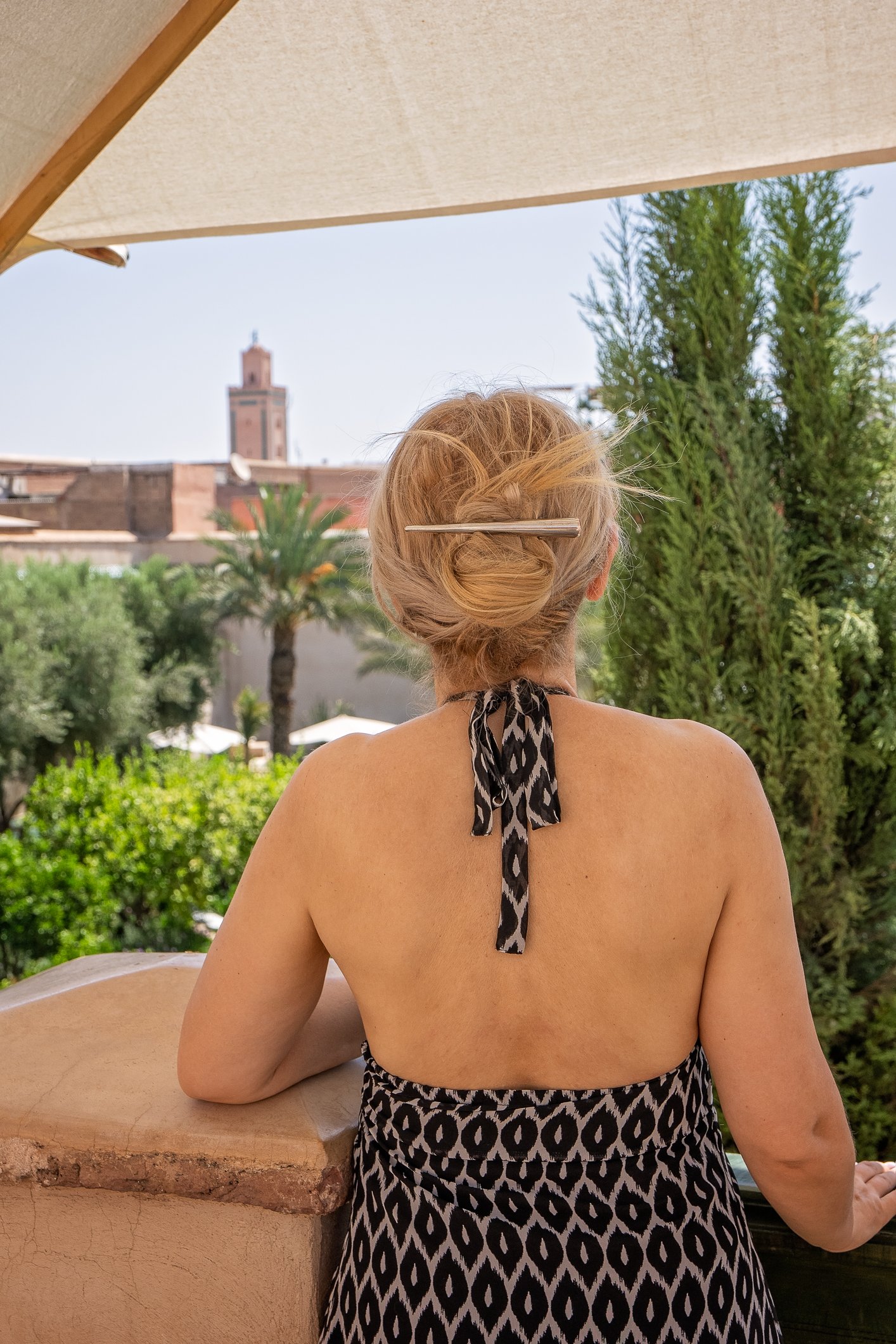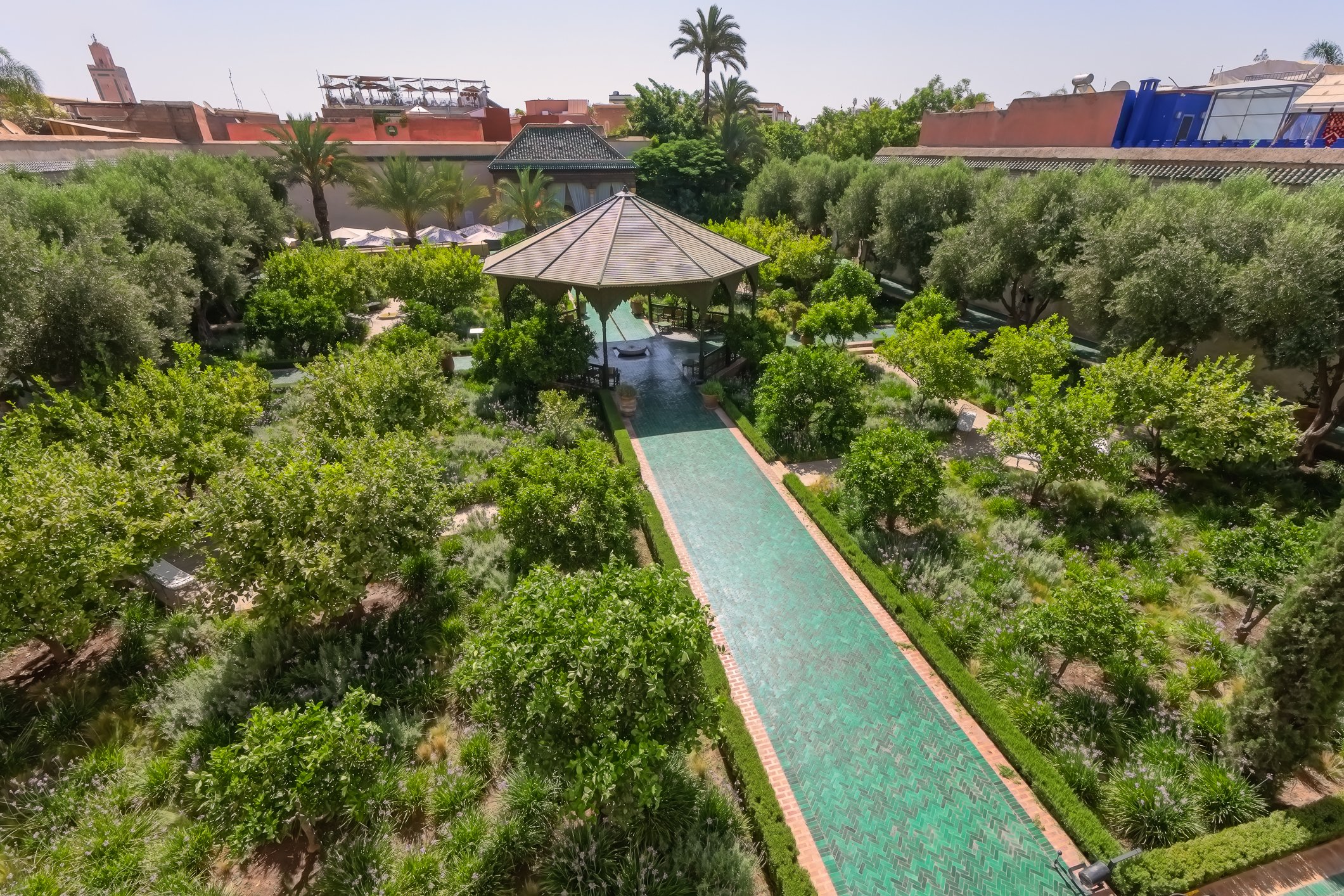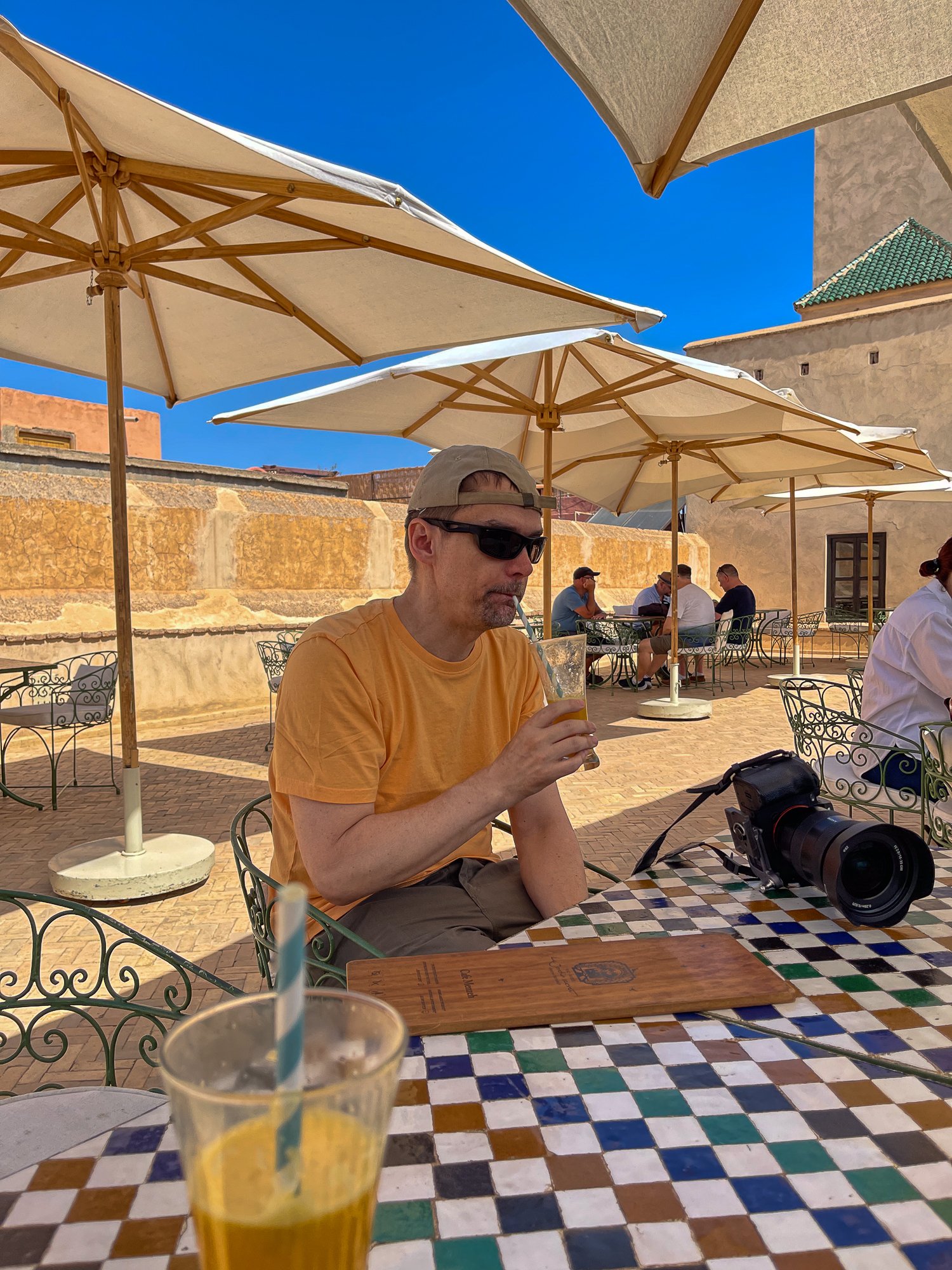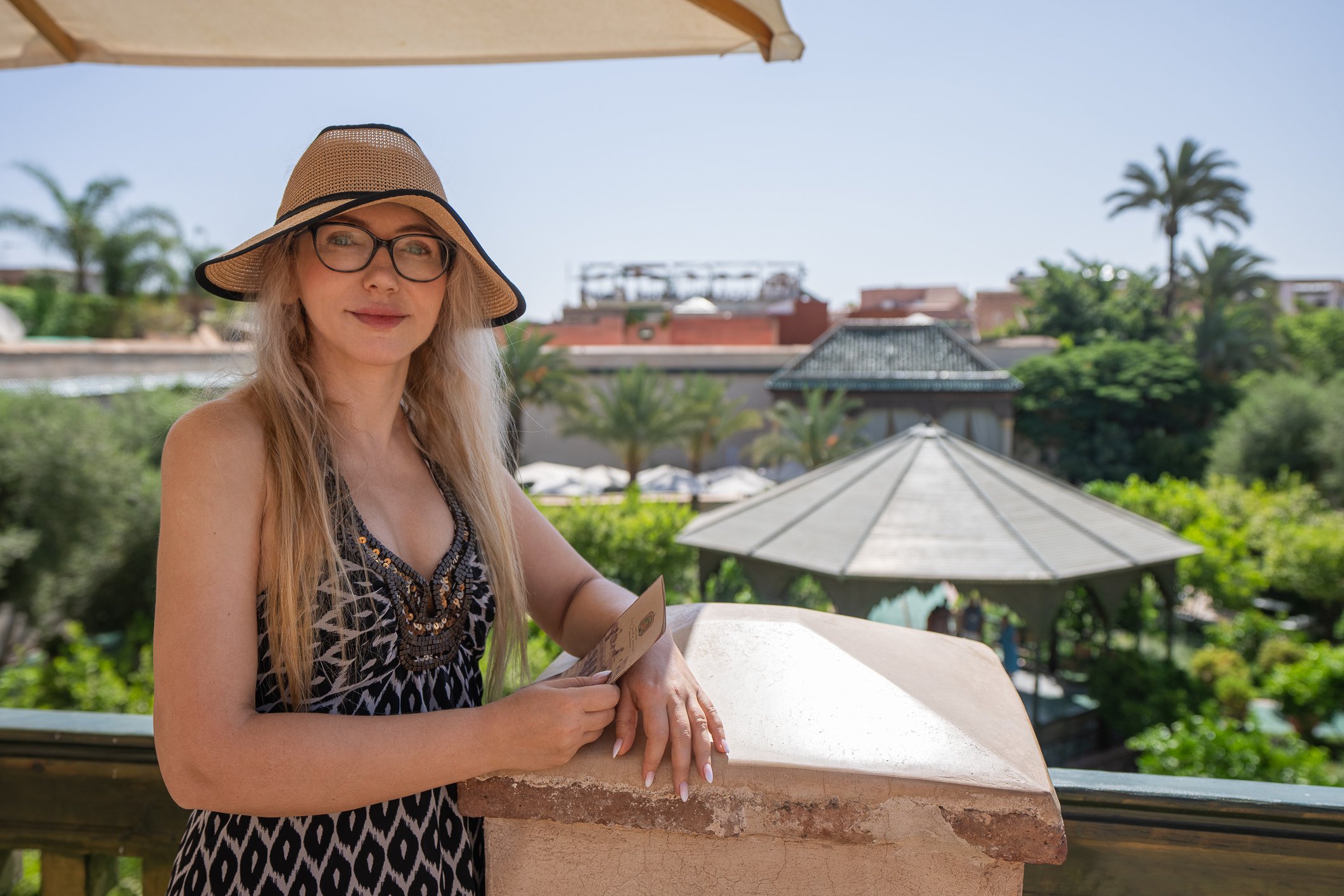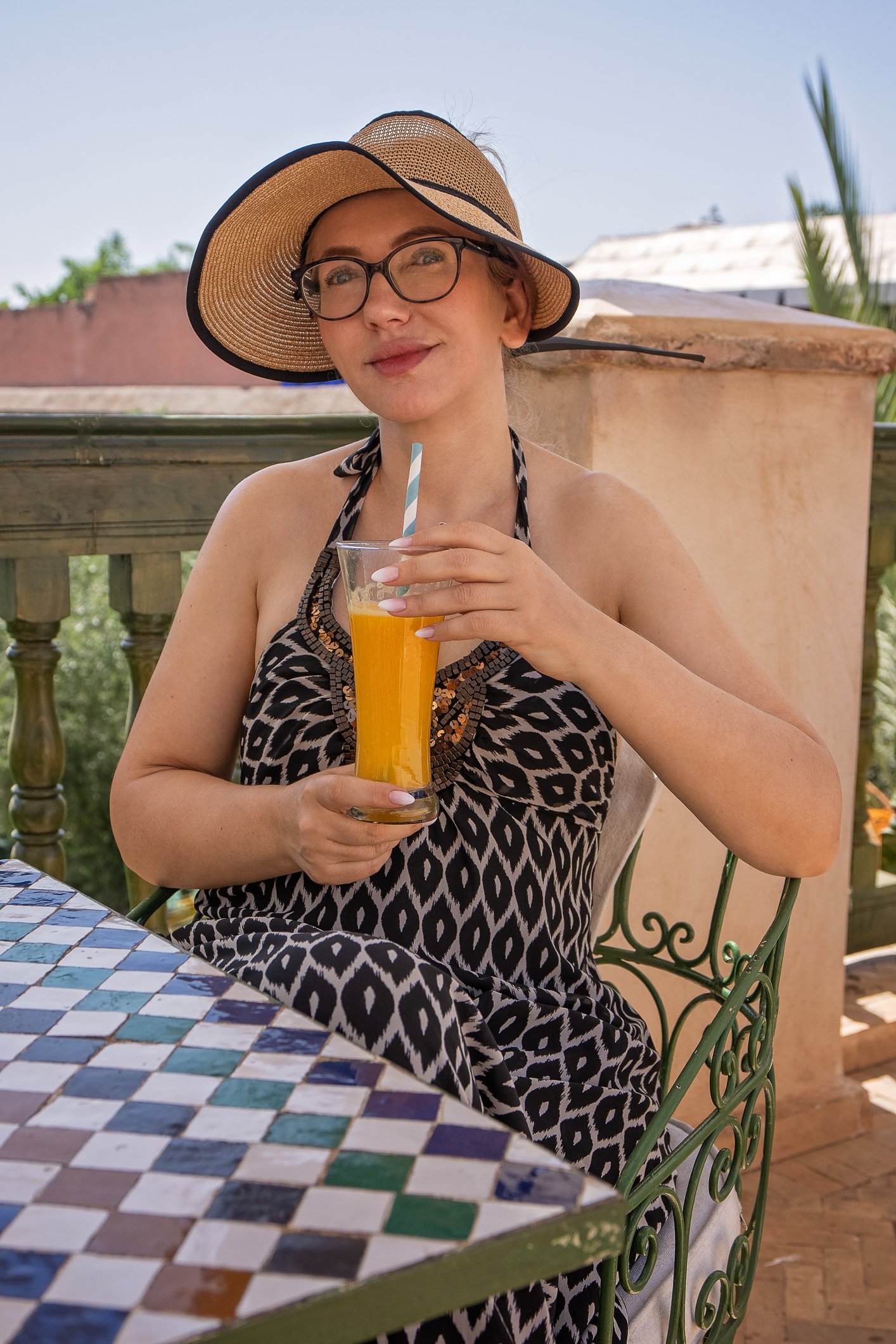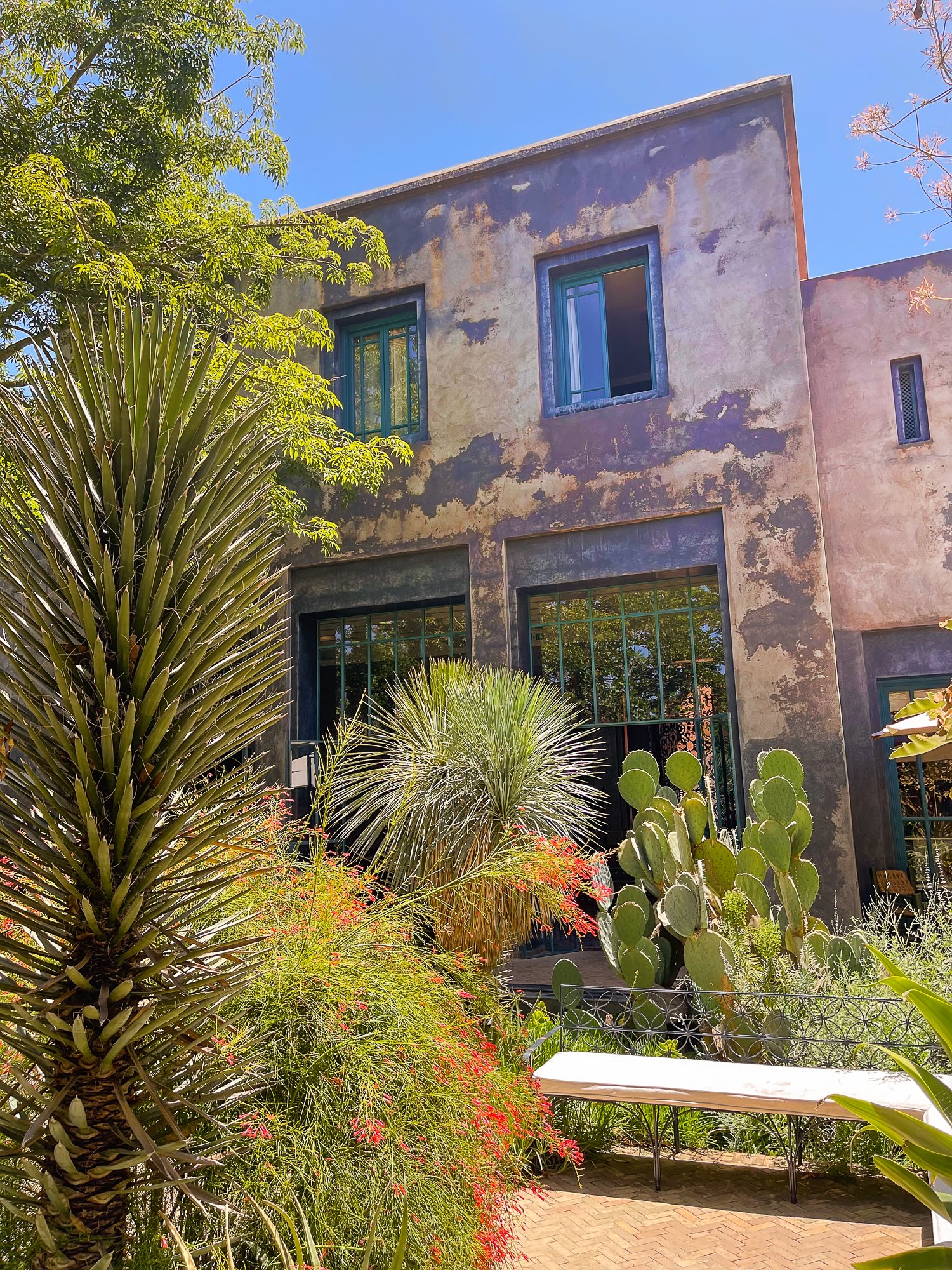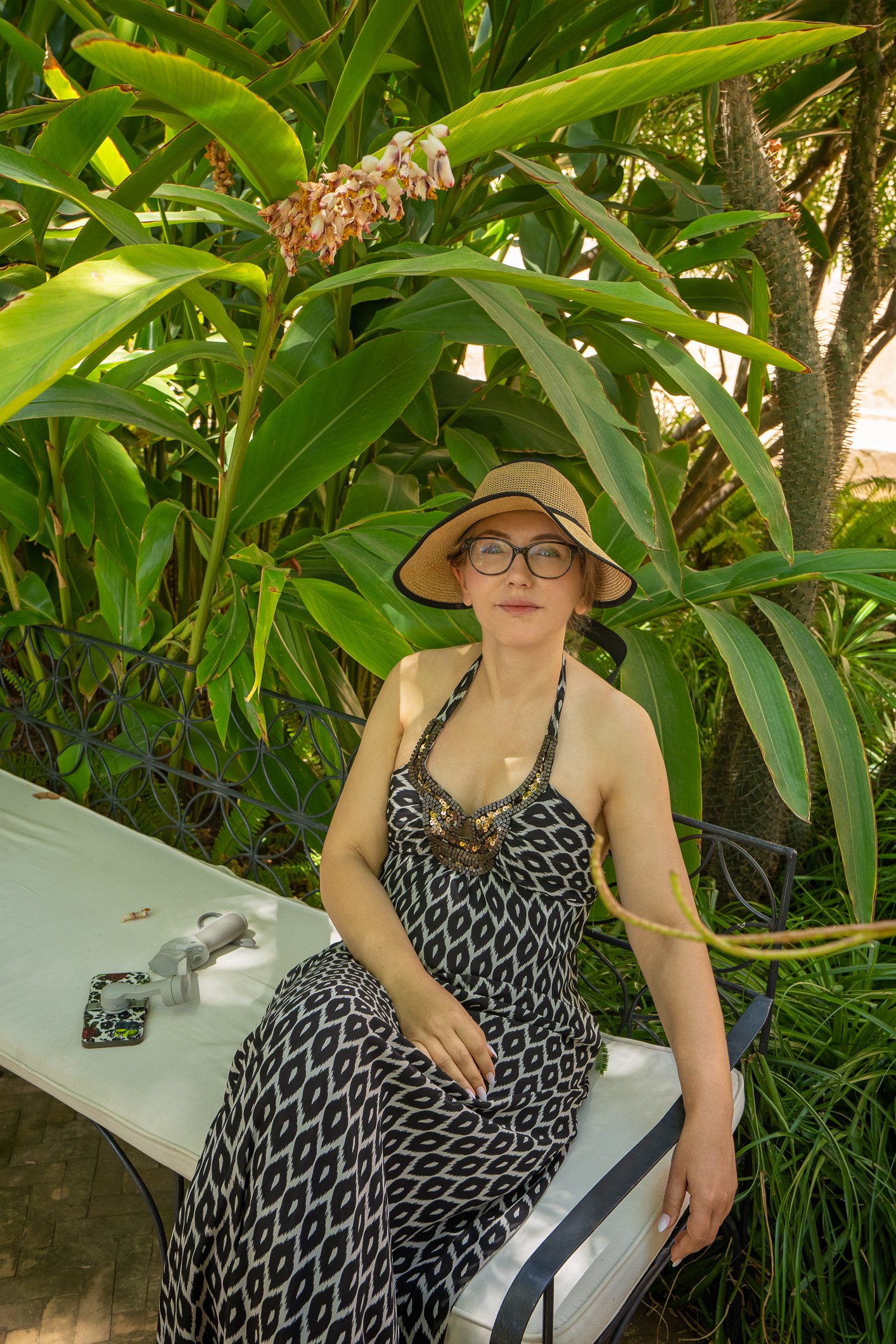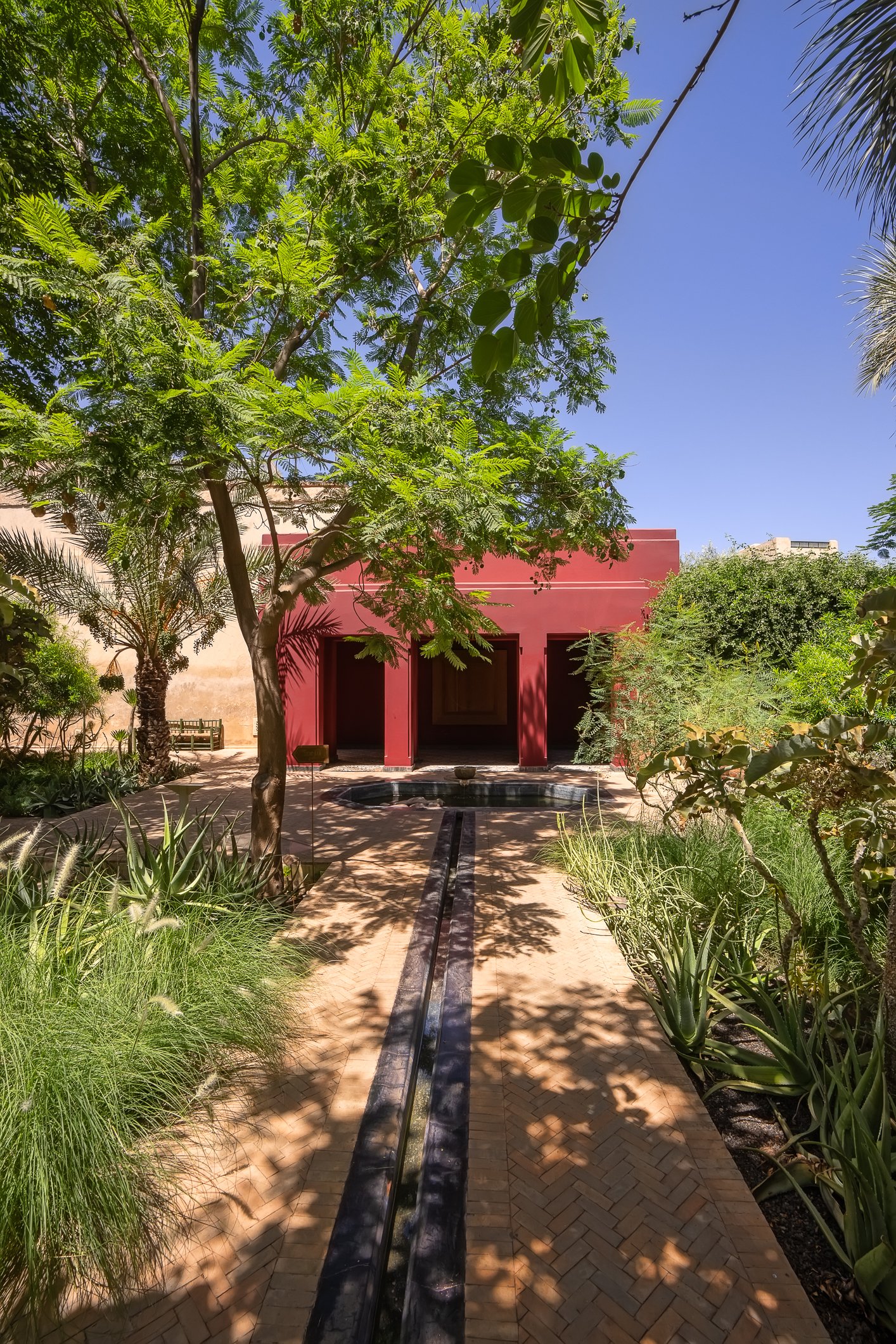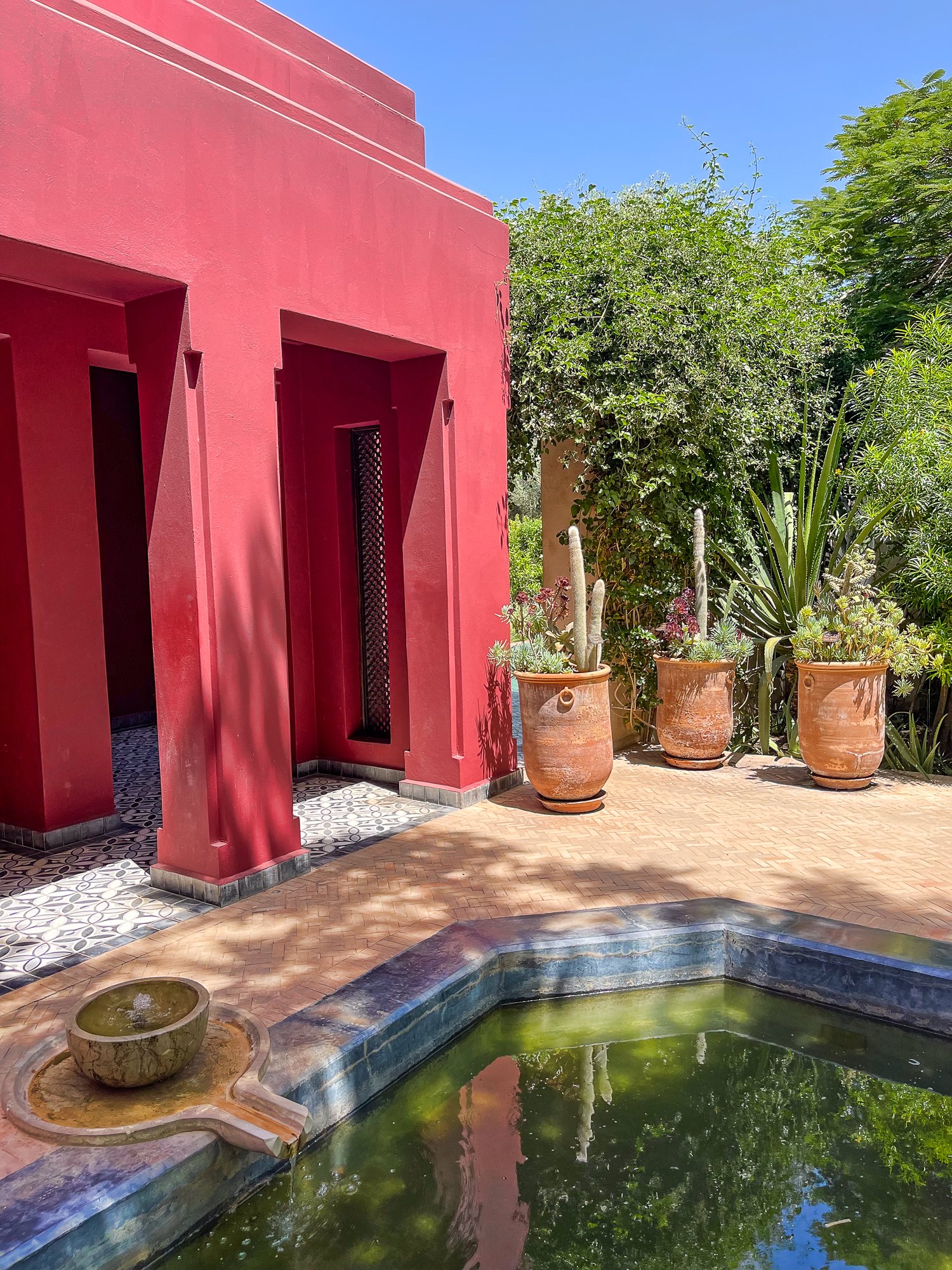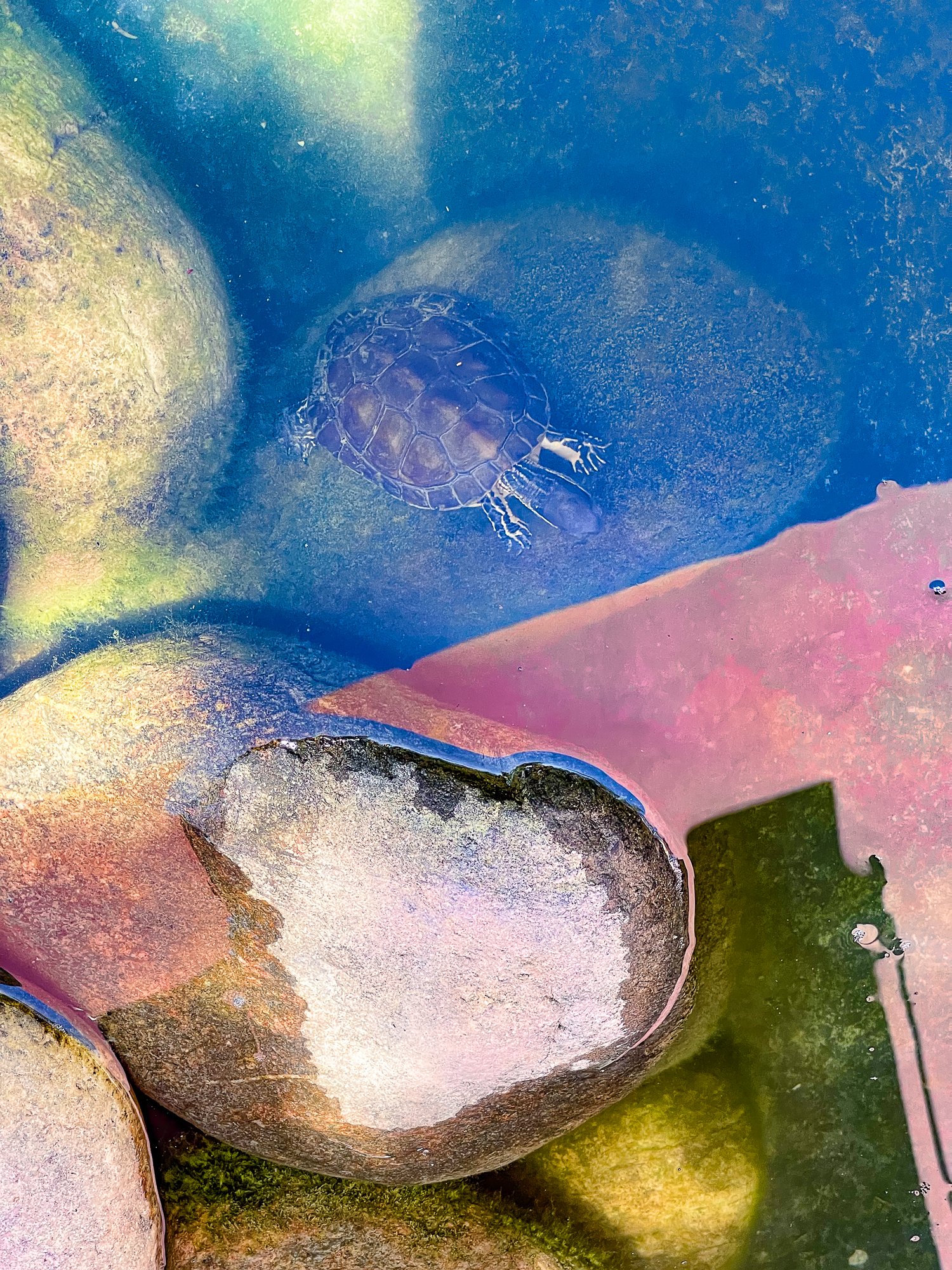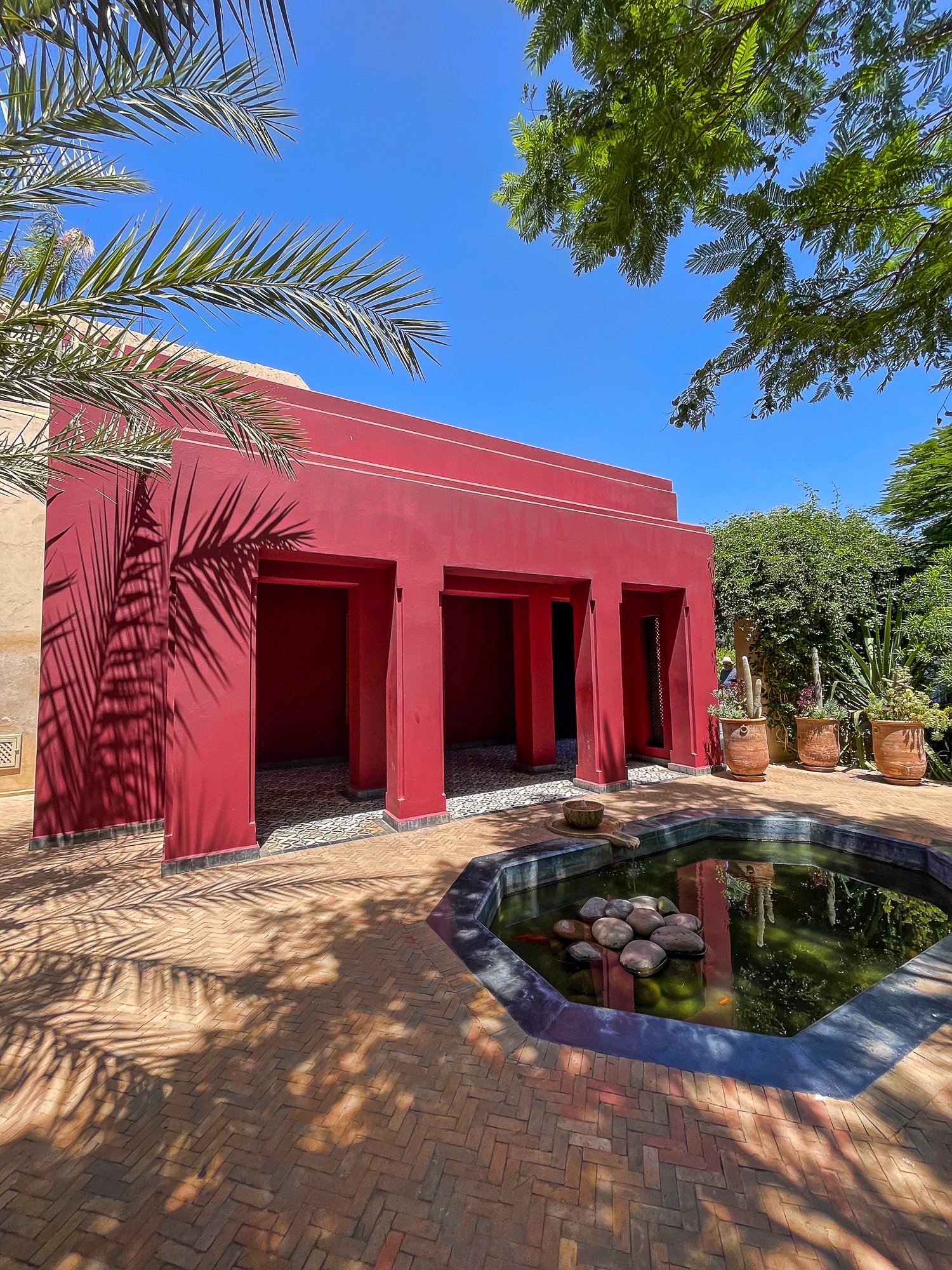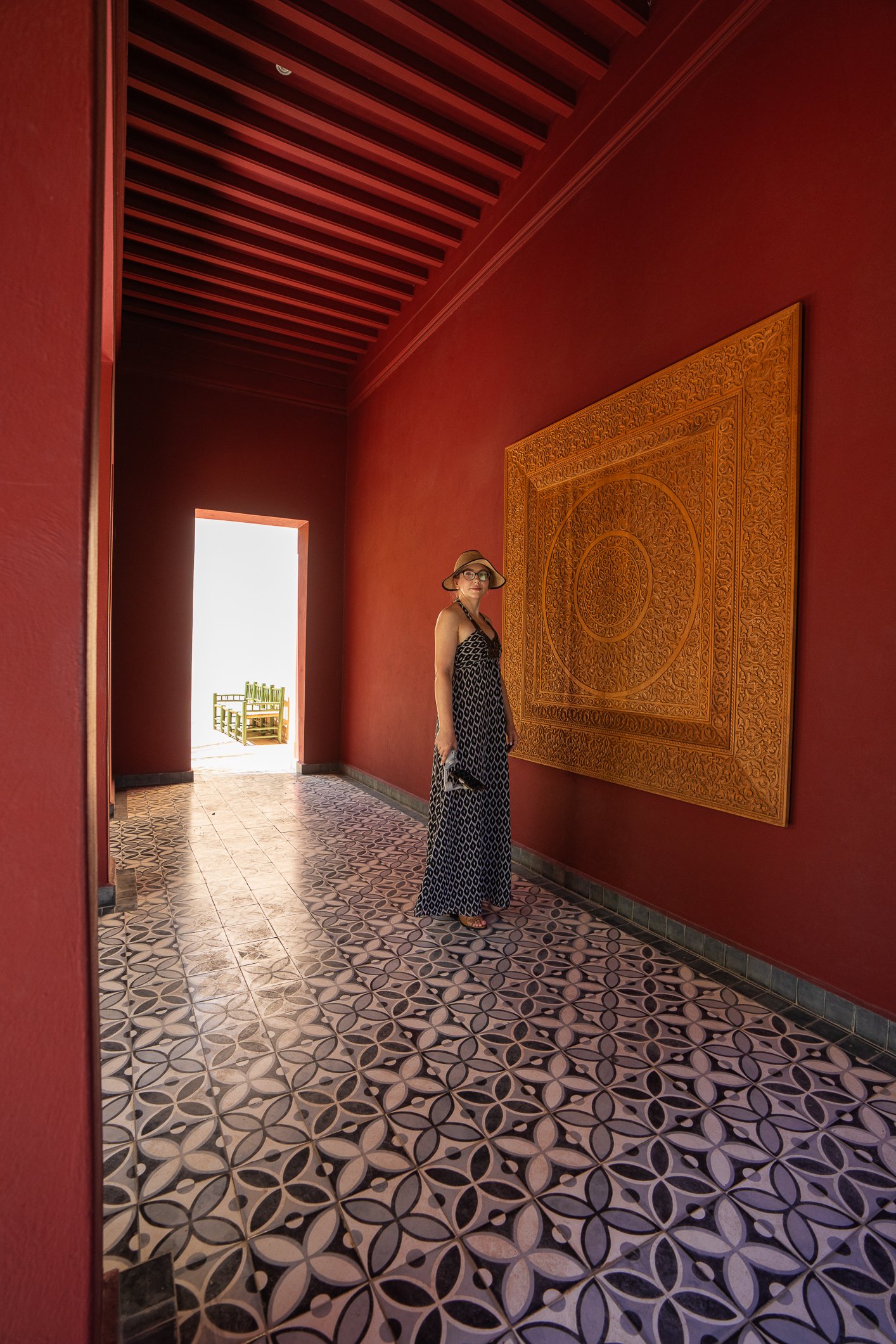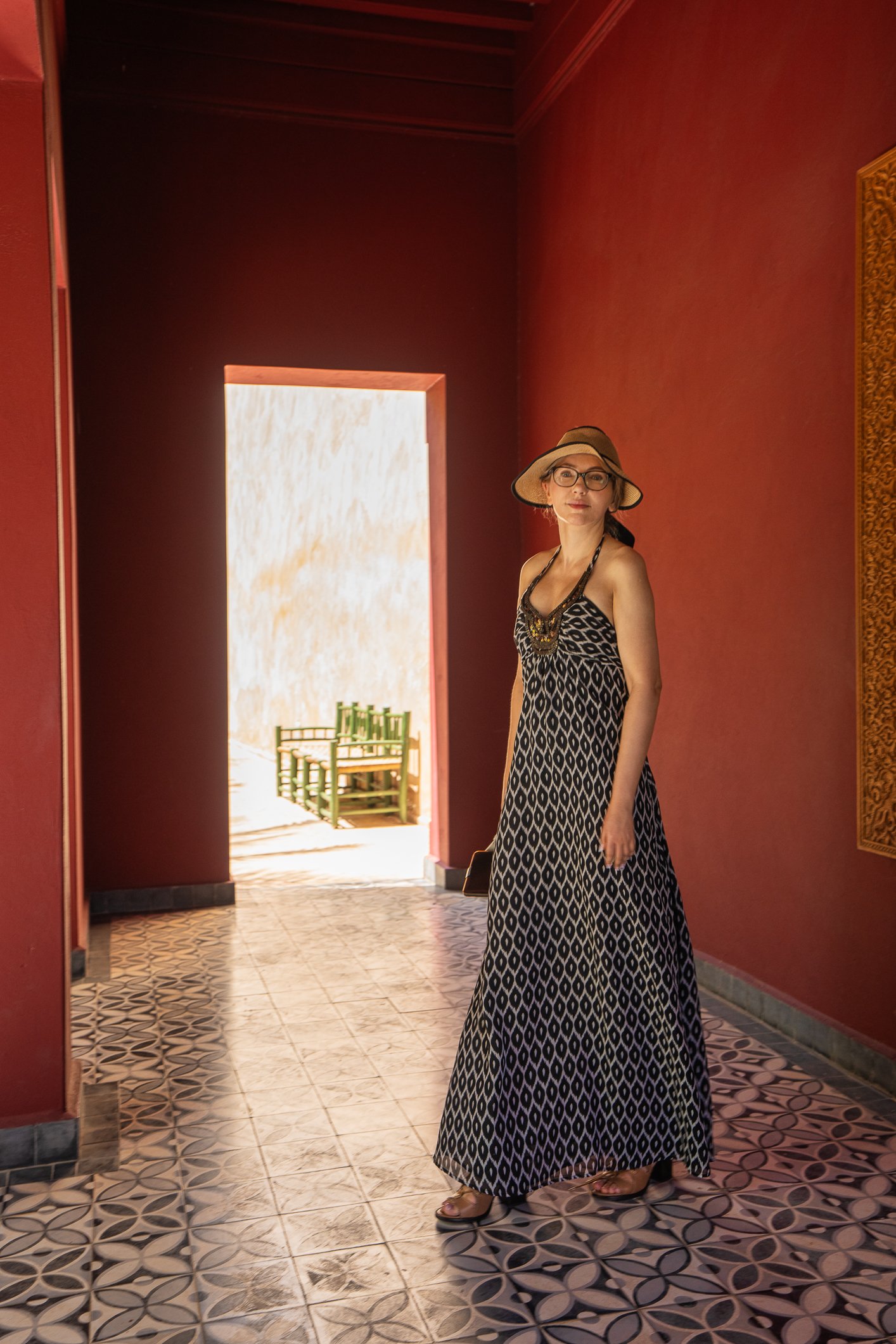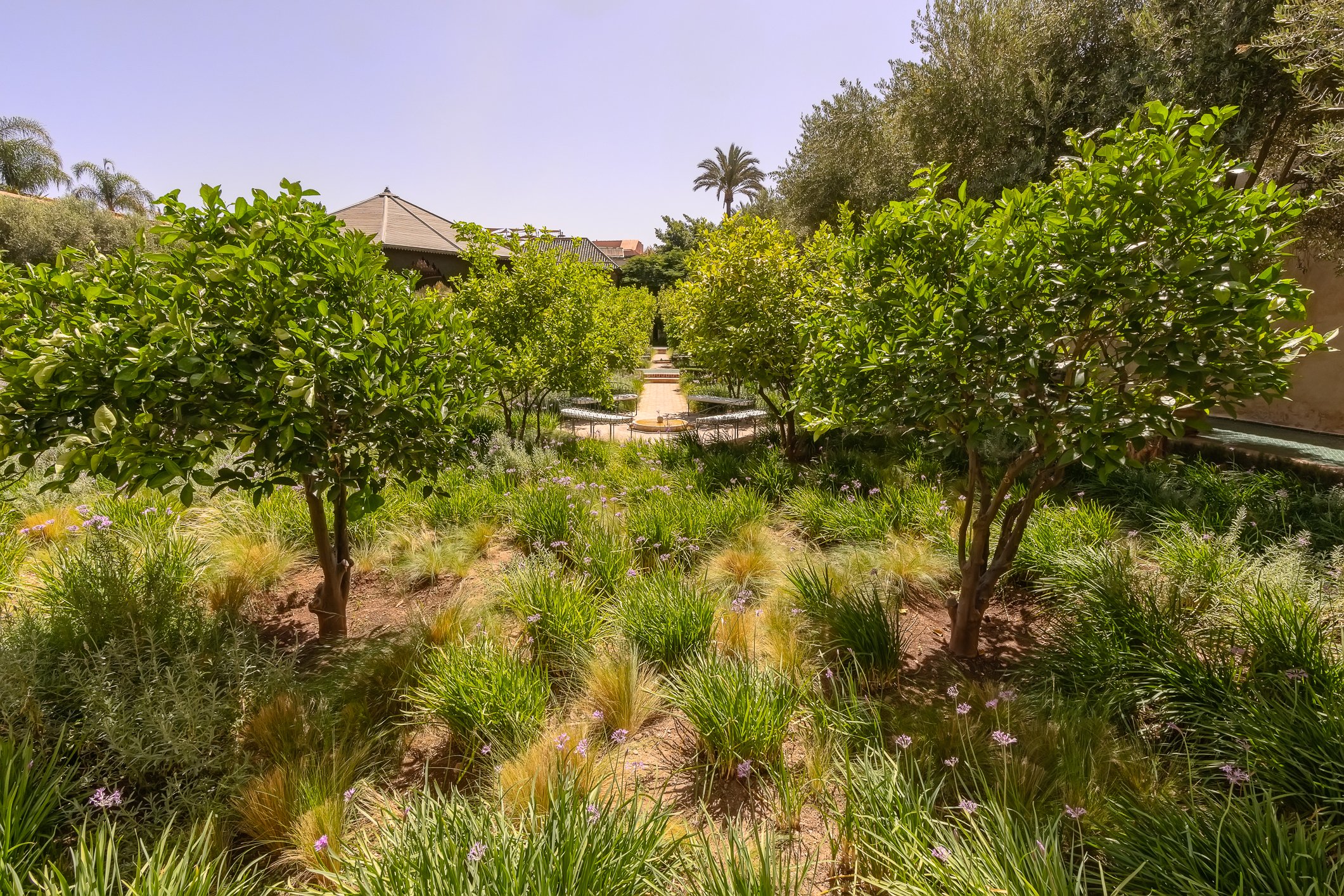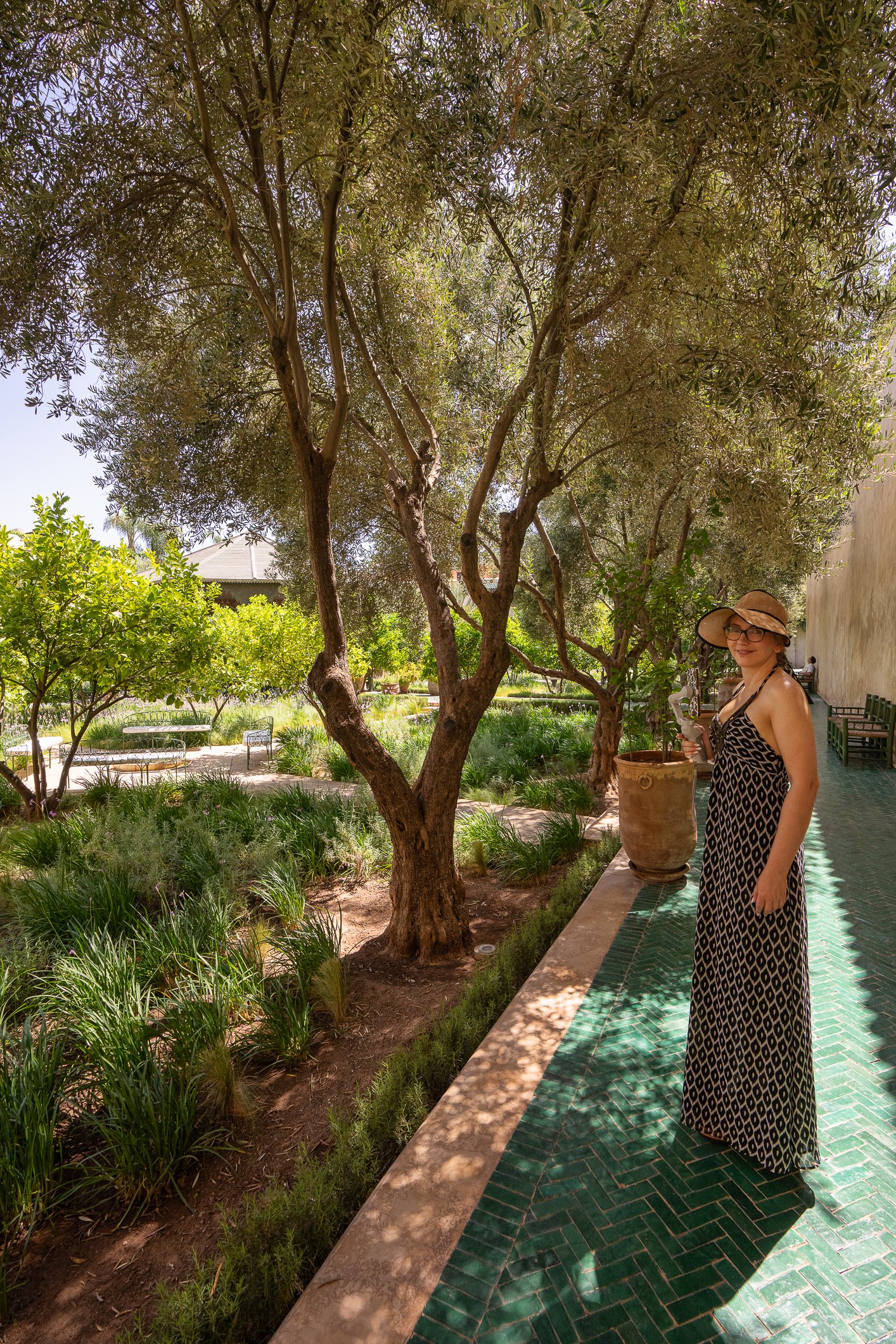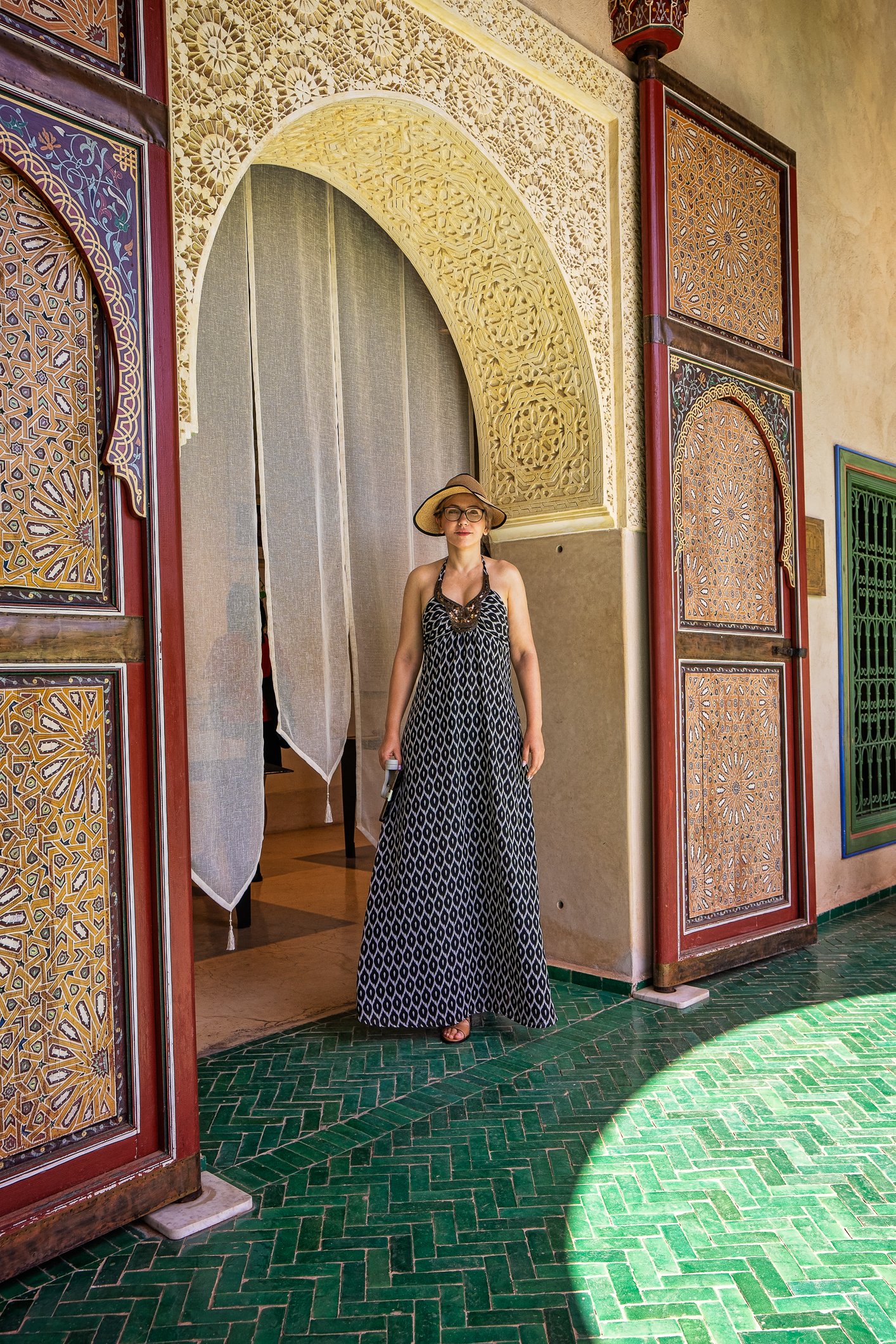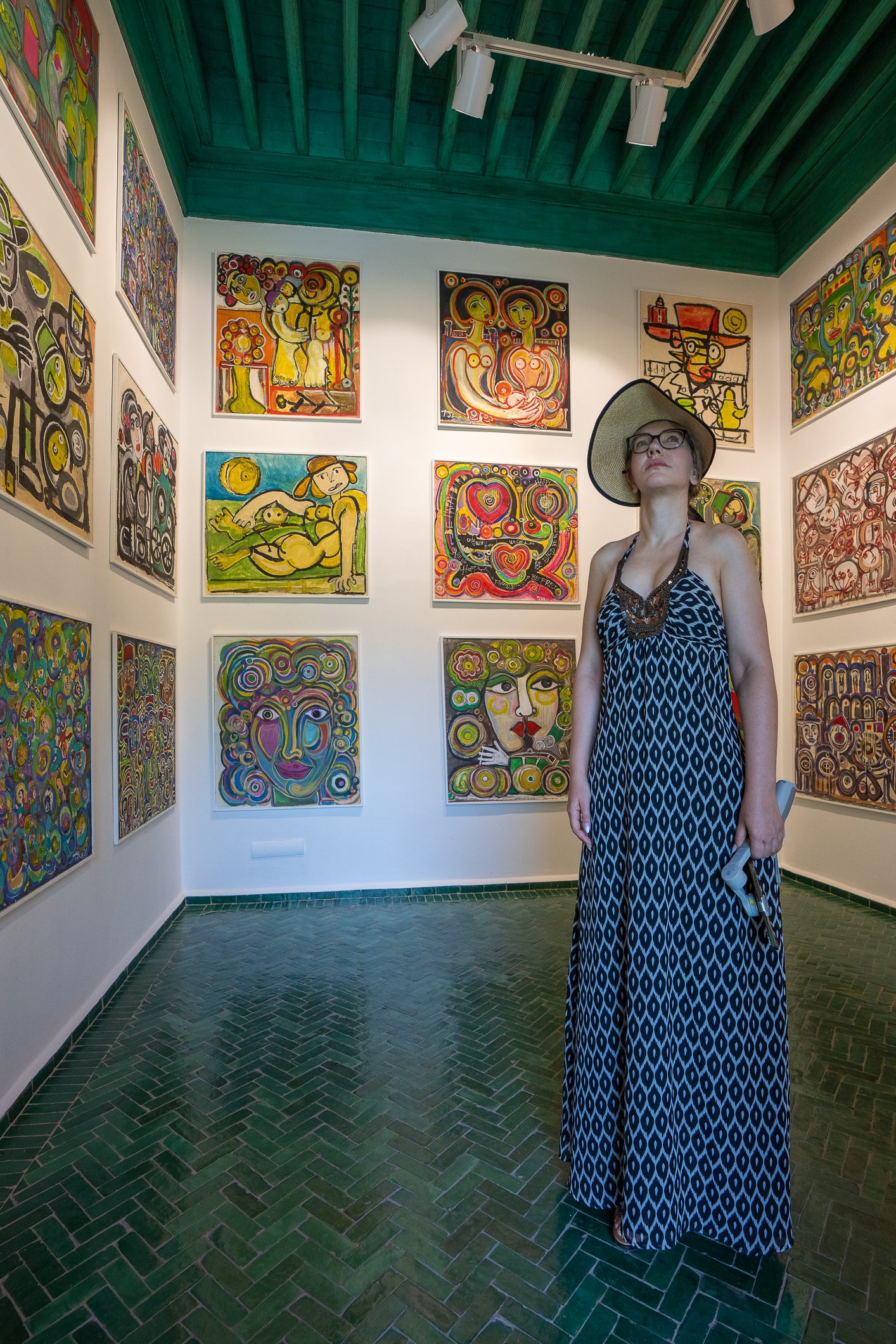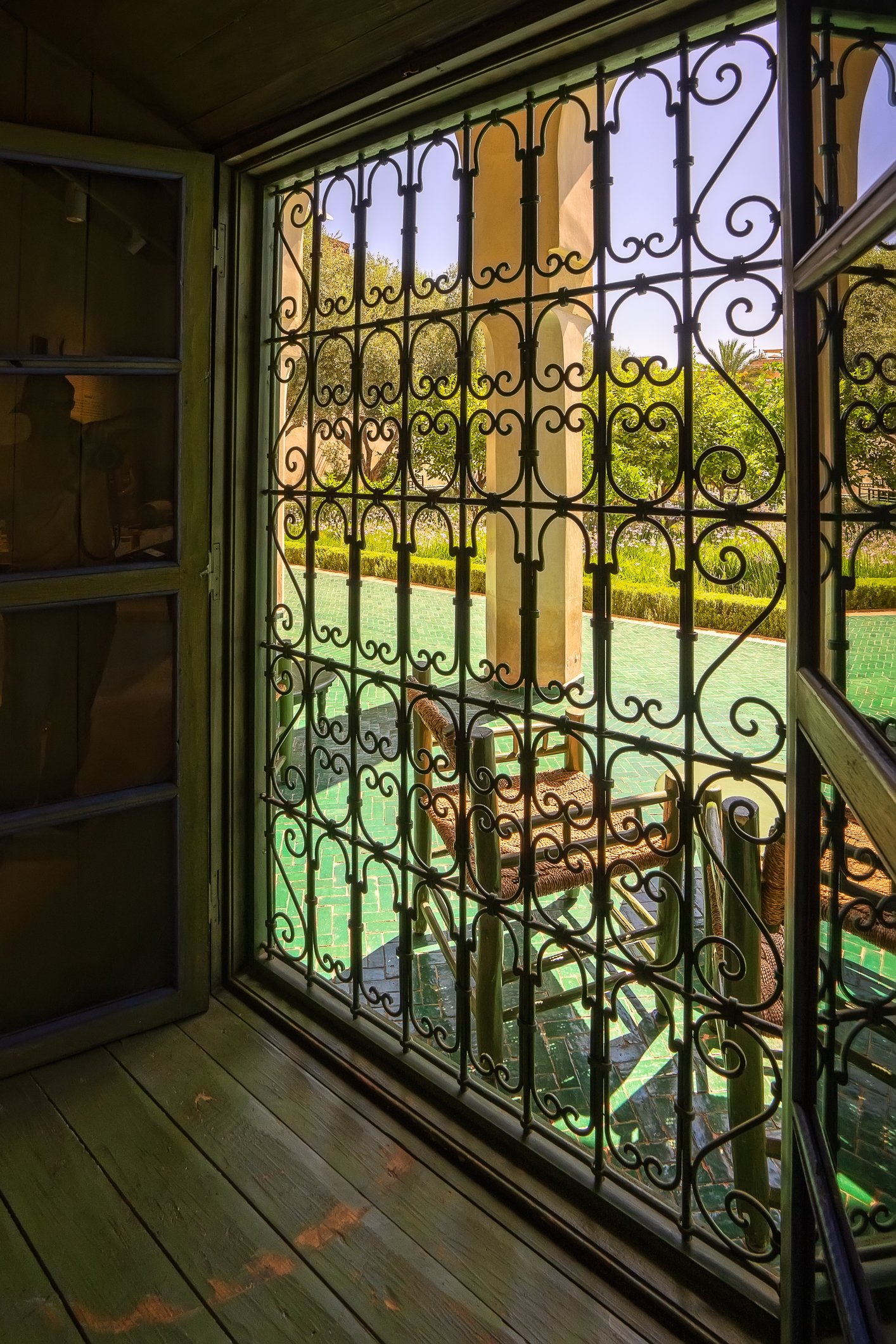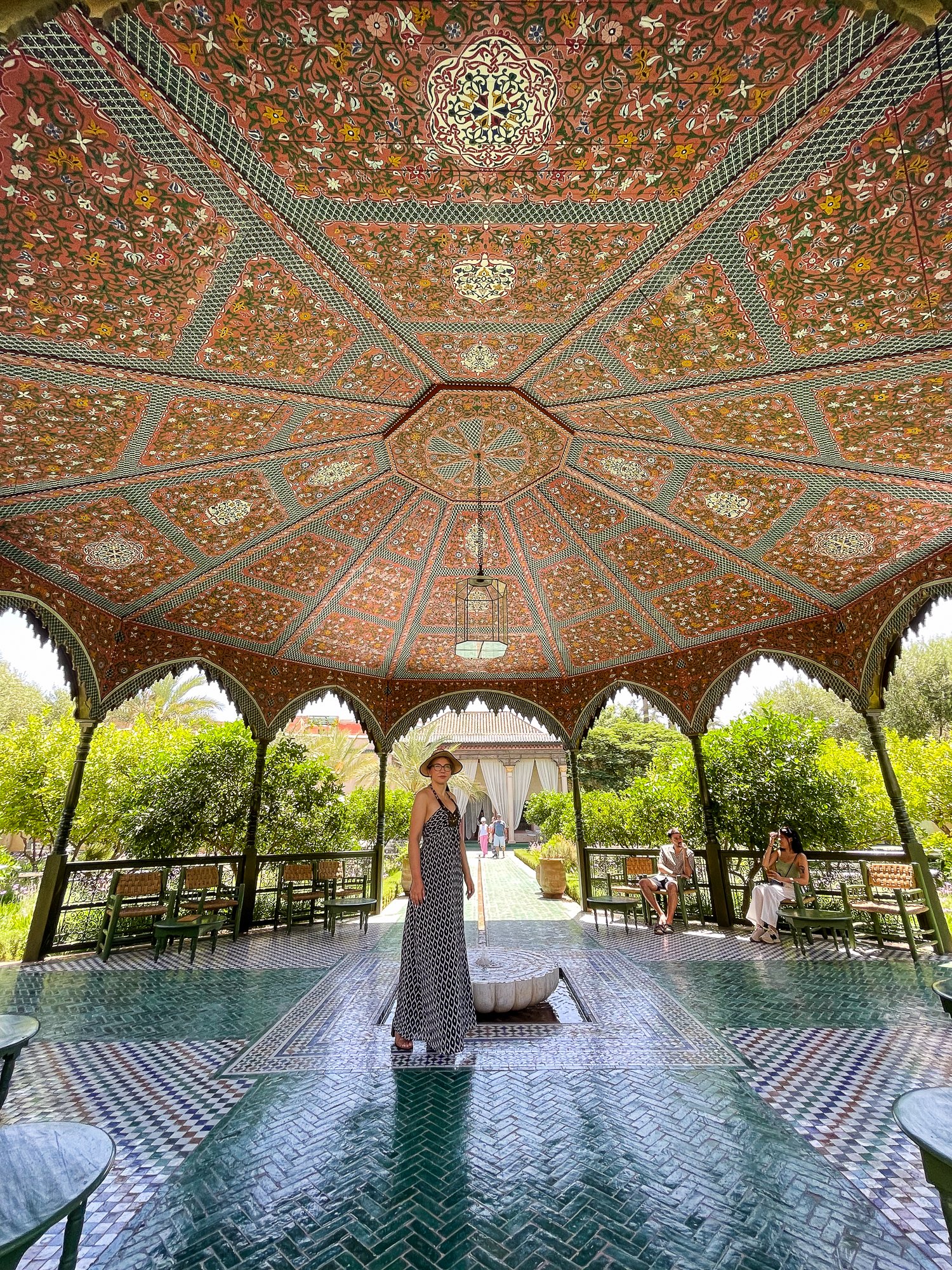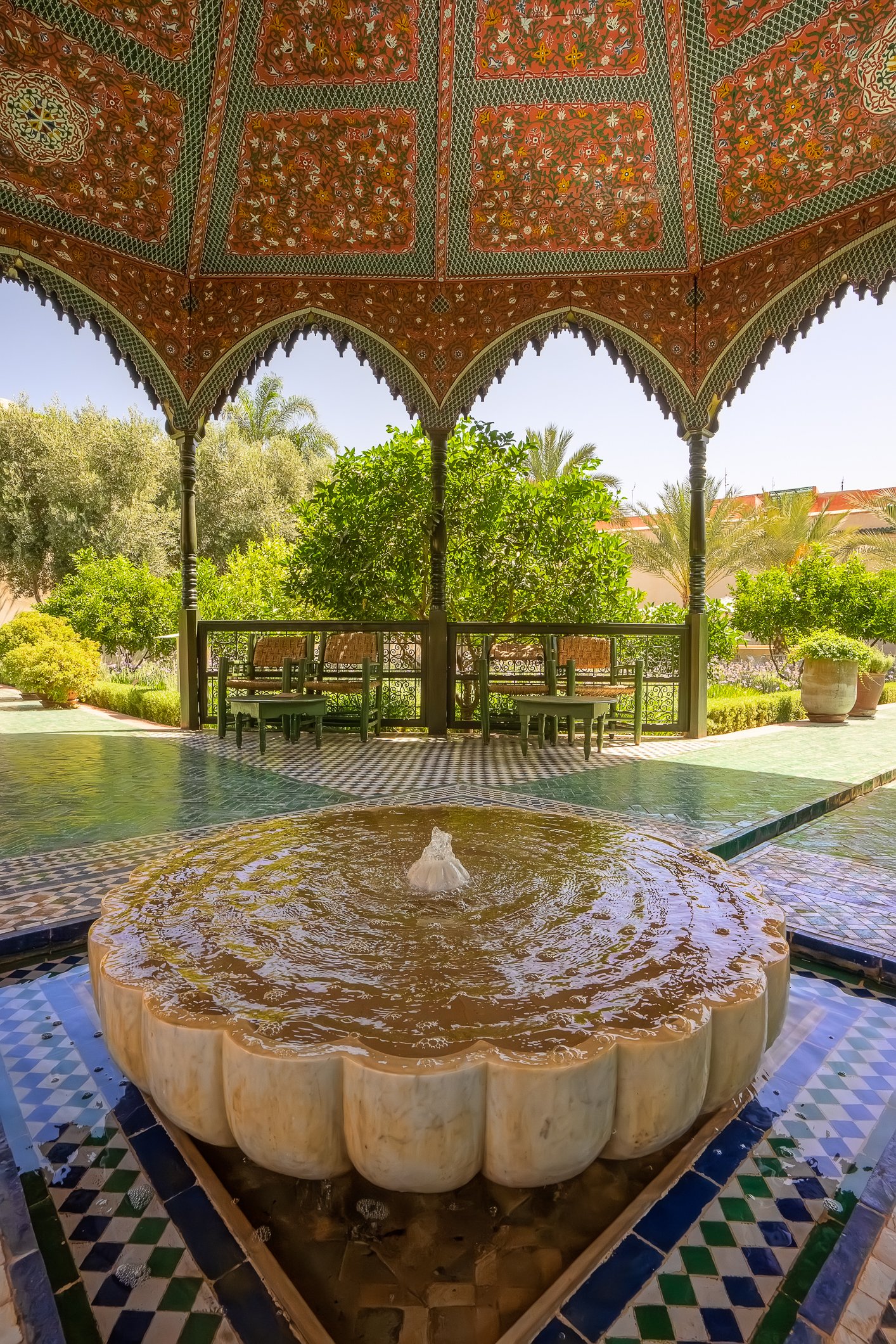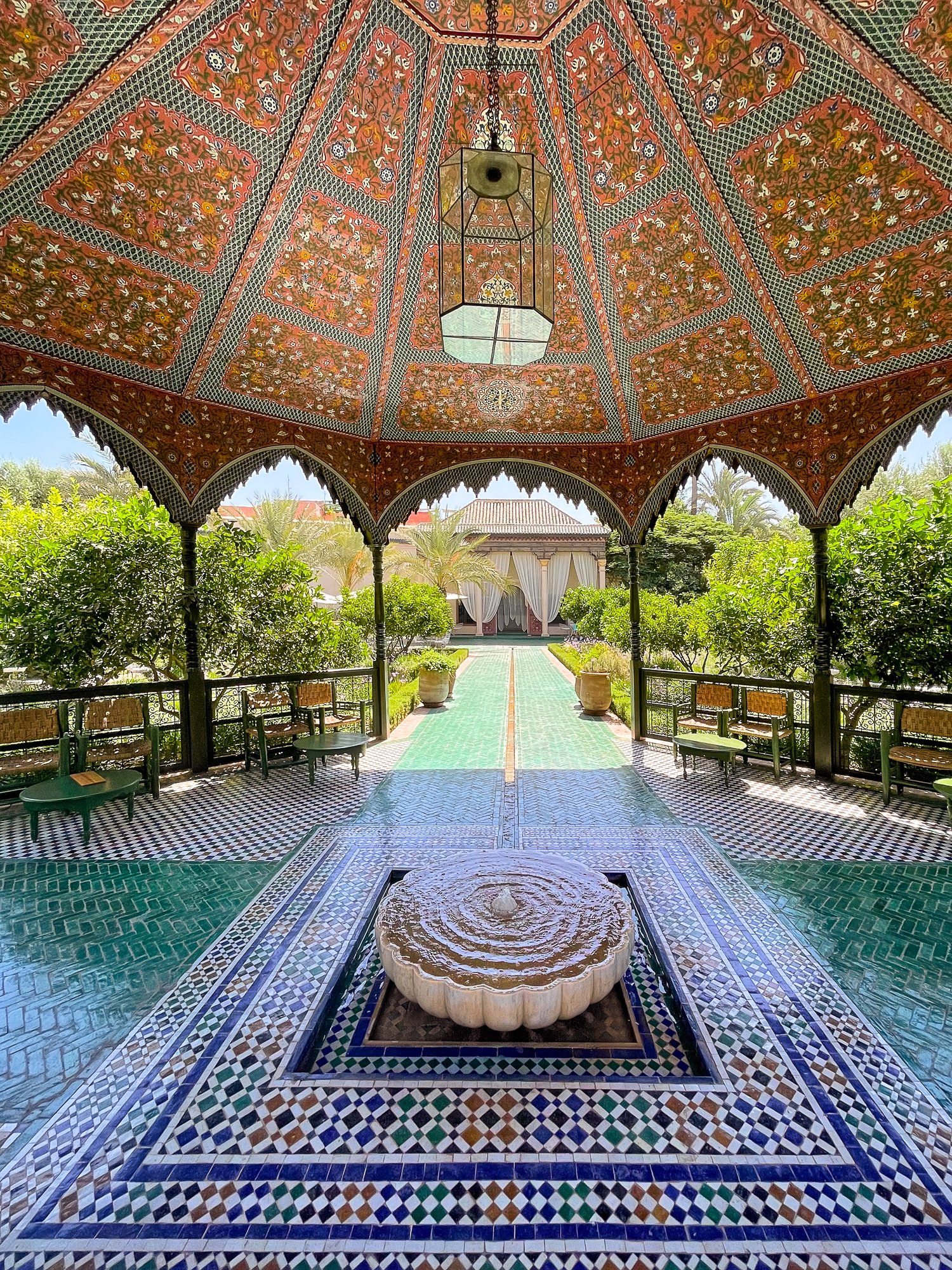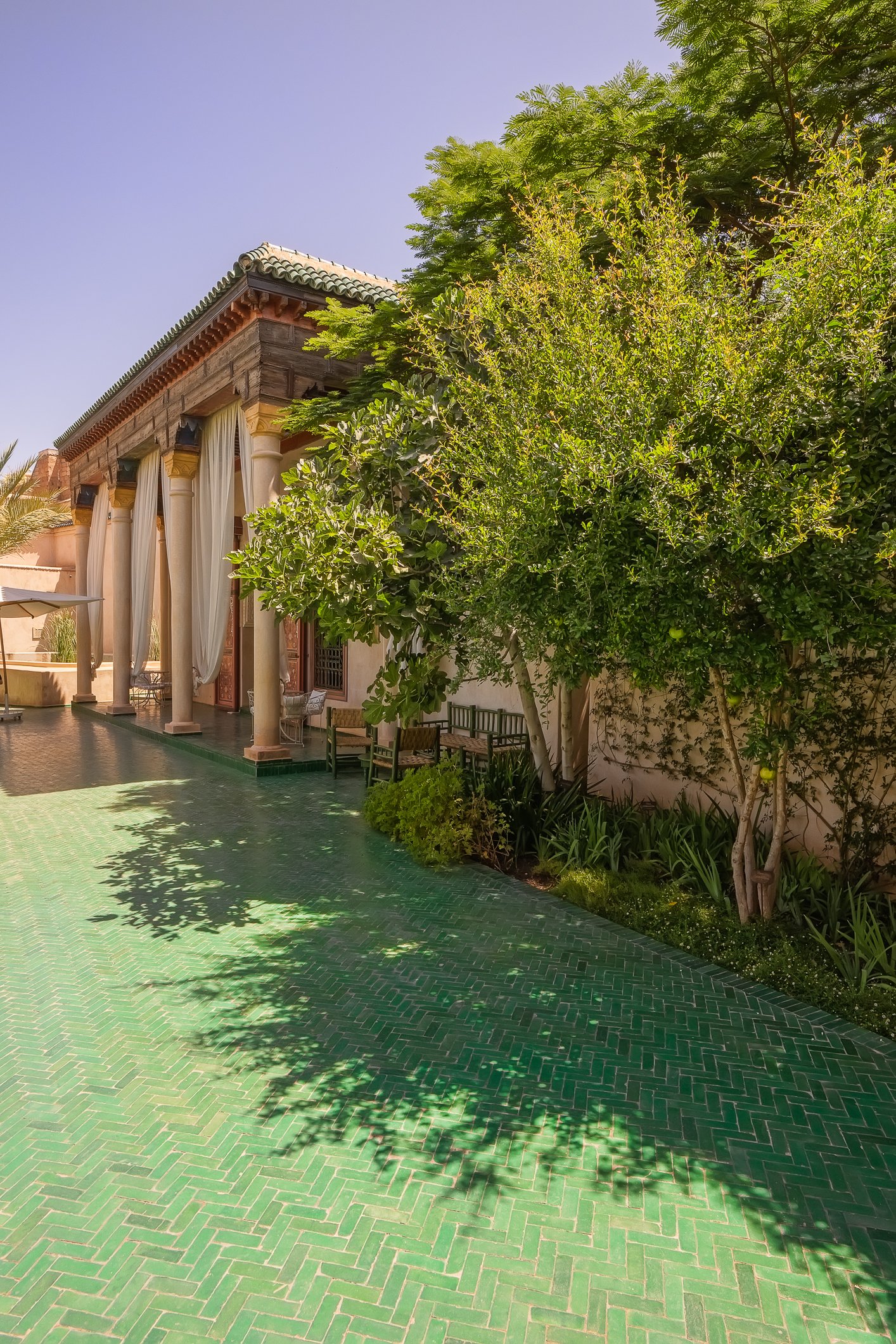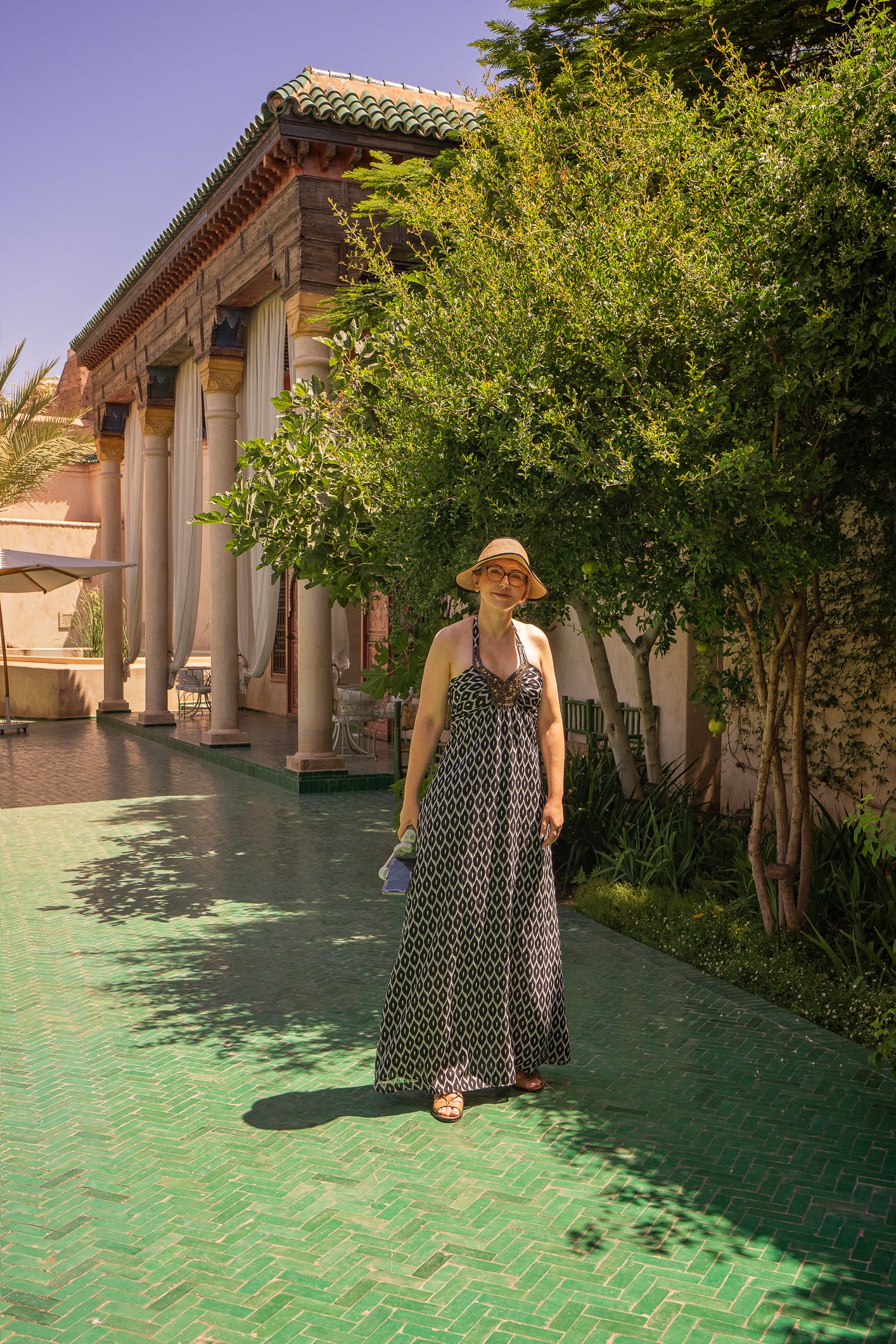Kew Gardens is celebrated for its stunning Christmas illuminated trails, so when they announced the launch of a Halloween trail this year, we jumped at the chance to buy the tickets—thankfully, as they sold out quite rapidly.
The experience surpassed our expectations as Kew Gardens once again showcased its remarkable creativity and design. The light installations were expertly arranged, and the accompanying music and occasional eerie sounds heightened the spooky ambiance, creating an enchanting atmosphere.
We were truly impressed by the quality and variety of the installations—none felt repetitive, and the diverse soundscapes matched each visual theme perfectly. Some areas featured haunting music, while others had sci-fi sounds or merely creepy noises like shrieks and groans. As the air was filled with spooky sound effects, the actors in eerie costumes roamed the main pathways, with some lurking just behind the ropes for added surprise.
As we made our way through the trail, we first encountered an old witch brewing potions and stirring her cauldron.
Kew Gardens słynie z rewelacyjnych bożonarodzeniowych ścieżek światła, więc gdy w tym roku ogłoszono, że po raz pierwszy będzie również szlak halloweenowy, od razu skorzystaliśmy z okazji, aby kupić bilety. Na całe szczęście, bo interesujące nas daty wyprzedały się w tempie błyskawicznym. I nie bez powodu. Halloween w Kew przerósł nasze (i tak dość śmiałe) oczekiwania.
Instalacje świetlne zostały zaaranżowane w bardzo profesjonalny sposób, a towarzysząca im muzyka i wszelkie inne dźwięki potęgowały upiorny nastrój, tworząc fantastyczną halloweenową atmosferę.
Byliśmy naprawdę pod wrażeniem jakości i różnorodności instalacji — żadna nie wydawała się powtarzalna, a różnorodne krajobrazy dźwiękowe idealnie pasowały do każdego motywu wizualnego. W niektórych obszarach słychać było muzykę rodem z filmu o nawiedzonych, podczas gdy w innych dominowały dźwięki science-fiction lub wzbudzające niepokój odgłosy, takie jak skrzek pająków czy szuranie butów. Podczas, gdy powietrze było wypełnione efektami dźwiękowymi, aktorzy w realistycznych kostiumach przechadzali się głównymi ścieżkami, a niektórzy kryli się w ciemnościach obok ścieżki, aby nagle na nią wyjść (albo i nie) i dołożyć element totalnego zaskoczenia.
Nasz szlak zaczął się od spotkania starej czarownicy warzącej mikstury i mieszającej w kotle.
Next, we walked through an eerie pumpkin field, where giant pumpkins, artfully arranged, seemed to snarl at us, while scarecrows appeared to scare us more than any crows.
Następnie przeszliśmy przez upiorne pole dyń, gdzie gigantyczne dynie patrzyły na nas złowrogo, a strachy na wróble straszyły nas bardziej niż jakiekolwiek wróble.
We then passed a large congregation of ghouls perched with lanterns in their hands, looking ominously like scarecrows themselves. Following that, we encountered a huge glowing tree, its roots extending far and dotted with skeletons.
Następnie minęliśmy dużą grupę ghulów przycupniętych z latarniami w rękach, wyglądających nawet bardziej złowieszczo niż wspomniane strachy na wróble. Za nimi natknęliśmy się na ogromne świecące drzewo, którego korzenie rozchodziły się daleko, daleko i były usiane licznymi szkieletami.
The path led us then into the spiders' zone, featuring a spiderweb tunnel glowing in ultraviolet light. Some spiders were perched on the webs, their eerie forms accentuated by the blue lighting that enveloped the area. My orange-painted nails glowed surrealistically under the atmospheric illumination, adding an unexpected pop of colour amidst the spooky scene. Scattered across the ground were enormous spiders, their formidable size adding to the sense of immersion and thrill as we navigated this hauntingly beautiful landscape.
Ścieżka zaprowadziła nas następie do strefy pająków, w której znajdował się tunel z pajęczyny skąpany w ultrafioletowym świetle. Na pajęczynach siedziało kilka pająków, ich kształty upiornie podkreślone tym niebieskim światłem. (PS. Moje pomalowane na pomarańczowo paznokcie świeciły surrealistycznie w tym oświetleniu). Na ziemi rozrzucone były też ogromne pająki, których imponujące rozmiary potęgowały poczucie niepokoju i grozy, gdy poruszaliśmy się po tym makabrycznym krajobrazie.
From there, we ventured into the monster’s corner, where the atmosphere grew even more thrilling and slightly unnerving. The space was adorned with glowing green skeletons, their eerie luminescence casting a spectral glow throughout the area. Ancient lanterns flickered with a ghostly green light, illuminating the surroundings and revealing peculiar mushrooms sprouting in odd corners. Coffins dotted the landscape, some slightly ajar, revealing skeletal remains. Scattered around were barrels topped with skulls, each one a grim reminder of the spooky theme that permeated this corner of Kew Gardens. Just when we thought we had seen it all, a strange monster lurked in the shadows. It paced restlessly around in the darkness, occasionally running towards unsuspecting passers-by if they came too close to the enclosure, adding an exhilarating thrill to the experience that kept everyone on their toes.
Stamtąd udaliśmy się do krainy potworów, gdzie atmosfera stała się jeszcze bardziej niepokojąca. Wzdłuż ścieżki rozsiane tu były szkielety, wydzielające złowieszczą zieloną luminescencję. Stare latarnie migotały upiornym - także zielonym - światłem, pozwalając nam dostrzec wielkie grzyby wyrastające w różnych zakamarkach lasu. Krajobraz zdobiły także trumny, niektóre lekko uchylone, odsłaniające szczątki szkieletów. Wokół rozrzucone były beczki zwieńczone czaszkami, ponurym przypomnieniem upiornego motywu tego zakątka Kew Gardens. Gdy myśleliśmy, że widzieliśmy już wszystko, natrafiliśmy na czającego się w cieniu potwora. Kręcił się on niespokojnie spowity mrokiem, od czasu do czasu biegnąc w stronę niczego niepodejrzewających przechodniów, jeśli podeszli zbyt blisko jego wybiegu.
After escaping the big monster, we entered a disorienting area filled with laser lights—the constantly moving beams made it easy to lose our sense of direction, creating a fun yet slightly dizzying experience. I suspect the same company that designed this installation also arranged the laser light area in last year’s Hillier’s Gardens Christmas trail. The lights were very similar. The feeling was not.
Po ucieczce z krainy potworów weszliśmy w dezorientujący obszar wypełniony światłami laserowymi. Stale poruszające się wiązki świata sprawiały, że łatwo było stracić poczucie orientacji. Podejrzewam, że ta sama firma, która zaprojektowała tę instalację, zorganizowała również obszar ze światłami laserowymi na zeszłorocznym szlaku świątecznym w Hillier’s Gardens. Światła były bardzo podobne. Atmosfera jednak inna.
As the evening deepened, our adventure continued with mulled wine, hot chocolate, and fire performers, who showcased a variety of short acts every few minutes. They were so captivating that we ended up staying for four performances. The performers brandished flaming poles, their movements showcasing their agility as they executed intricate dance routines. With every flick of the wrist, the flames twisted and curled, illuminating their poised figures against the night sky. Surrounding the performers were elaborate catapults, each holding open caskets shrouded in a mysterious fog. The eerie light danced on the fog, creating an almost dreamlike atmosphere that added an extra layer of intrigue to the performance. Whispers of a story began to weave through the air—that the veil between the living and the dead was thinning, allowing glimpses into another realm.
Dalej na szlaku czekała nas gorąca czekolada z grzanym winem i akrobaci tańczący z ogniem. Kilku wykonawców naprzemiennie prezentowało różne choreografie z płonącymi pochodniami. Z każdym ich ruchem płomienie skręcały się i zwijały, oświetlając ich postacie na tle nocnego nieba i oczywiście kilku trumien. Wykonawców otaczały bowiem katafalki z trumnami, z których wydobywały się dziwne dźwięki i dymy. Tancerze tłumaczyli, że zasłona między światami żywych a umarłych się przerzedza, pozwalając na wgląd w inny wymiar.
Finally, we traversed an old cemetery, where the air was thick with an otherworldly presence. As we wandered among the weathered tombstones, we encountered vampires (Dracula himself was there), and various ghosts. While posing for a picture at the cemetery entrance, I was blissfully unaware of the old grave digger lurking behind me- or was he a vampire in disguise? He mimicked my pose with a mischievous grin, adding an unexpected twist to my moment in the spotlight.
Although the trail was advertised as 90 minutes long, we took our time and spent about three hours exploring this land of spookiness, and it provided great entertainment. Looking forward to the next year…
Na koniec przeszliśmy przez stary cmentarz, gdzie powietrze było aż gęste od pozaziemskiej obecności. Wędrując między zniszczonymi nagrobkami, natknęliśmy się na wampiry (był nawet sam Drakula) i różne duchy. Pozując do zdjęcia przy wejściu na cmentarz, nie byłam świadoma starego grabarza czającego się tuż za mną (grabarz czy wampir, kto wie kim on był…) Naśladował moje pozy i darł ze mnie łacha przez długą chwilę a ja zupełnie nie wiedziałam o jego obecności…
Chociaż szlak był w teorii 90-minutowy, my jak to my, za bardzo się nie spieszyliśmy się i spędziliśmy około trzech godzin na eksploracji tej krainy upiorności, co zapewniło nam świetną rozrywkę. Już czekamy na przyszły rok….





























































































































